
The Myth of Artificial Intelligence: Why Computers Can't Think the Way We Do
by
Erik J. Larson
Published 5 Apr 2021
Since we have no good scientific reason to believe the myth is true, and every reason to reject it for the purpose of our own future flourishing, we need to radically rethink the discussion about AI. Part I THE SIMPLIFIED WORLD Chapter 1 THE INTELLIGENCE ERROR The story of artificial intelligence starts with the ideas of someone who had immense human intelligence: the computer pioneer Alan Turing. In 1950 Turing published a provocative paper, “Computing Machinery and Intelligence,” about the possibility of intelligent machines.1 The paper was bold, coming at a time when computers were new and unimpressive by today’s standards. Slow, heavy pieces of hardware sped up scientific calculations like code breaking. After much preparation, they could be fed physical equations and initial conditions and crank out the radius of a nuclear blast.
…
By allowing for intuition as distinct from and outside of the operations of a purely formal system like a computer, Turing in effect suggested that there may be differences between computer programs that do math and mathematicians. It was a curious turn, therefore, that Turing made from his early work in the 1930s to the more wide-ranging speculation about the possibility of intelligent computers in “Computing Machinery and Intelligence,” published a little over a decade later. By 1950, discussion of intuition disappeared from Turing’s writings about the implications of Gödel. His interests turned, in effect, to the possibility that computers might become “intuition-machines” themselves. In essence, he decided that Gödel’s result didn’t apply to the question of AI: if we humans are highly advanced computers, Gödel’s result means only that there are some statements that we cannot understand or see to be true, just as with less complicated computers.
…
That is what playing chess is, after all, and that is what breaking a code is, as well. And here we have it: Turing’s great genius, and his great error, was in thinking that human intelligence reduces to problem-solving. Whether or not the ideas about intelligent machines in his 1950 “Computing Machinery and Intelligence” became explicit in the war years, it is clear that his experience at Bletchley crystallized his later view of AI, and it is clear that AI in turn followed closely and without necessary self-analysis precisely in his path. But a closer look at the Bletchley code-cracking success immediately reveals a dangerous simplification in the philosophical ideas about man and machine.
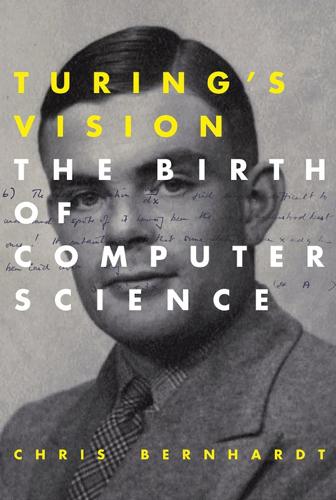
Turing's Vision: The Birth of Computer Science
by
Chris Bernhardt
Published 12 May 2016
A small group started work on building the ACE, but work progressed slowly. A prototype was eventually up and running in 1950, but by this time there were other more powerful computers, and even Turing had decamped to Newman’s group at Manchester University, where he would work until his death. While at Manchester, Turing published a paper called Computing Machinery and Intelligence. The paper starts with the question “Can machines think?” Turing considers how we can tell whether a person or a machine is thinking. He proposes the Imitation Game, which has since become known as the “Turing Test.” In this game a human interrogator is in a separate room from a computer and another human.
…
In this, Petzold takes Turing’s paper and adds many excellent and lengthy annotations to help the reader understand exactly what Turing is saying at each stage. Petzold also includes the history that surrounds the paper. The paper in which Turing discusses the Imitation Game (Turing Test) is Computing Machinery and Intelligence. This paper was written for a general audience and is widely available on the web. It is well worth reading. For the reader who wants to study more of Turing’s writings, Andrew Hodges maintains a website at http://www.turing.co.uk containing a wealth of information. Another online resource is the Turing Archive, maintained by Jack Copeland and Diane Proudfoot, at http://www.alanturing.net.
…
The examples concerning equal numbers of 0s and 1s and balanced brackets can be tackled by pushdown automata. A question that is beyond pushdown automata is looking at strings using an alphabet of three letters and asking whether the strings have the same number of each letter. Chapter 4 1. Alan Turing. “Computing machinery and intelligence.” 2. Below is the complete computation when the Turing machine TM2 is run on the string ( ( ) ). 3. Leibniz’s notation is the standard notation for the derivative of x with respect to t. This is denoted by ẋ in Newton’s notation. 4. Introduction to Wittgenstein’s Tractatus. 5.
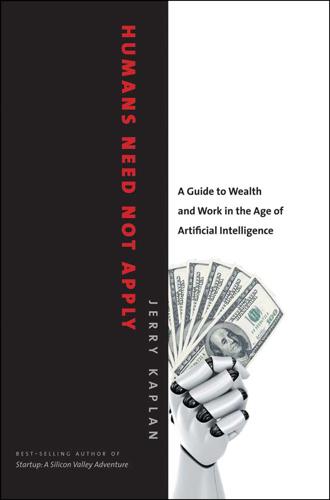
Humans Need Not Apply: A Guide to Wealth and Work in the Age of Artificial Intelligence
by
Jerry Kaplan
Published 3 Aug 2015
They could bring your coffee in the morning and have your favorite drink ready for your trip home, while you relax in one of perhaps four “captain’s chairs” in the van, complete with tray table and entertainment system, similar to a first-class airplane seat. 13. Alan Turing, “Computing Machinery and Intelligence,” Mind 59, no. 236 (1950): 433–60, http://mind.oxfordjournals.org/content/LIX/236/433. 14. http://en.wikipedia.org/wiki/Loebner_Prize#Winners, last modified December 29, 2014. 15. Turing, “Computing Machinery and Intelligence,” 442. 16. Paul Miller, “iOS 5 includes Siri ‘Intelligent Assistant’ Voice-Control, Dictation—for iPhone 4S Only,” The Verge, October 4, 2011, http://www.theverge.com/2011/10/04/ios-5-assistant-voice-control-ai-features/. 17.
…
That’s why I’m supremely confident that our future is very bright—if only we can figure out how to equitably distribute the benefits. Let’s look at another example of language shifting to accommodate new technology, this one predicted by Alan Turing. In 1950 he wrote a thoughtful essay called “Computing Machinery and Intelligence” that opens with the words “I propose to consider the question, ‘Can machines think?’” He goes on to define what he calls the “imitation game,” what we now know as the Turing Test. In the Turing Test, a computer attempts to fool a human judge into thinking it is human. The judge has to pick the computer out of a lineup of human contestants.
…
See also specific applications television, 41–42 thinking: machine capability for, 3, 197–99 shifted meaning of, 198 3D radar (Lidar), 141 Thurlow, Edward, 87 Ticketmaster, 73–74 Torrance, Mark, 64, 67, 70–71, 72 Tracking Angle (music magazine), 193 traffic-control systems, 45 training. See skills; vocational training transportation. See autonomous vehicles Transportation Department, 44–45 Trebek, Alex, 36 truck deliveries, 141–42 TrueCompanion, 144–45 trusts, 117, 200 Turing, Alan, 197–98, 199 “Computing Machinery and Intelligence,” 197, 198 Turing Test, 197–98 2001: A Space Odyssey (film), x Uber, 16 unemployment, 3, 12, 13, 120, 136–37, 169–74 BLS definition of, 170 cyclical, 136–37, 219n5 factors in, 142, 172–73 as personal choice, 170–71, 177, 185 public interest and, 164 rise in (1995–2012), 172 structural, 137 two categories of, 170–71 University of Michigan, 99 University of Pennsylvania, 99 USA Cycling, bailout of, 115 vaccines, 169 VCR (TV recording device), 46 videos, AI recognition of, 39 viewthrough attribution, 70 vinyl records, 193 virtual law office, 148 viruses, computer, 202–3 vocational training: employer collaboration with, 13, 14, 153–54 general education vs., 153–57 volunteer work.
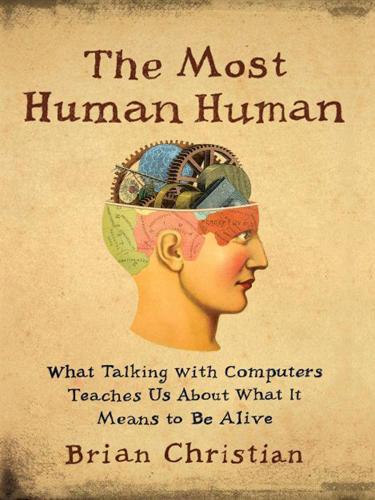
The Most Human Human: What Talking With Computers Teaches Us About What It Means to Be Alive
by
Brian Christian
Published 1 Mar 2011
If this sounds odd to us in any way, it’s worth knowing that nothing at all seemed odd about it to them. Nor to their co-workers: to their Bell Labs colleagues their romance was a perfectly normal one, typical even. Engineers and computers wooed all the time. It was Alan Turing’s 1950 paper “Computing Machinery and Intelligence” that launched the field of AI as we know it and ignited the conversation and controversy over the Turing test (or the “Imitation Game,” as Turing initially called it) that has continued to this day—but modern “computers” are nothing like the “computers” of Turing’s time. In the early twentieth century, before a “computer” was one of the digital processing devices that so proliferate in our twenty-first-century lives—in our offices, in our homes, in our cars, and, increasingly, in our pockets—it was something else: a job description.
…
Notes Epigraphs 1 David Foster Wallace, in interview with David Lipsky, in Although of Course You End Up Becoming Yourself (New York: Broadway Books, 2010). 2 Richard Wilbur, “The Beautiful Changes,” The Beautiful Changes and Other Poems (New York: Reynal & Hitchcock, 1947). 3 Robert Pirsig, Zen and the Art of Motorcycle Maintenance (New York: Morrow, 1974). 4 Barack Obama, “Remarks by the President on the ‘Education to Innovate’ Campaign,” press release, The White House, Office of the Press Secretary, November 23, 2009. 0. Prologue 1 See, e.g., Neil J. A. Sloane and Aaron D. Wyner, “Biography of Claude Elwood Shannon,” in Claude Elwood Shannon: Collected Papers (New York: IEEE Press, 1993). 1. Introduction: The Most Human Human 1 Alan Turing, “Computing Machinery and Intelligence,” Mind 59, no. 236 (October 1950), pp. 433–60. 2 Turing initially introduces the Turing test by way of analogy to a game in which a judge is conversing over “teleprinter” with two humans, a man and a woman, both of whom are claiming to be the woman. Owing to some ambiguity in Turing’s phrasing, it’s not completely clear how strong of an analogy he has in mind; for example, is he suggesting that in the Turing test, a woman and a computer are both claiming specifically to be a woman?
…
Norman, “Defensive Tool Use in a Coconut-Carrying Octopus,” Current Biology 19, no. 23 (December 15, 2009), pp. 1069–70. 16 Douglas R. Hofstadter, Gödel, Escher, Bach: An Eternal Golden Braid (New York: Basic Books, 1979). 17 Noam Chomsky, email correspondence (emphasis mine). 18 John Lucas, “Commentary on Turing’s ‘Computing Machinery and Intelligence,’ ” in Epstein et al., Parsing the Turing Test. 2. Authenticating 1 Alix Spiegel, “ ‘Voice Blind’ Man Befuddled by Mysterious Callers,” Morning Edition, National Public Radio, July 12, 2010. 2 David Kernell, posting (under the handle “rubico”) to the message board www.4chan.org, September 17, 2008. 3 Donald Barthelme, “Not-Knowing,” in Not-Knowing: The Essays and Interviews of Donald Barthelme, edited by Kim Herzinger (New York: Random House, 1997).

Human Compatible: Artificial Intelligence and the Problem of Control
by
Stuart Russell
Published 7 Oct 2019
A long time, unfortunately—the Analytical Engine was never built, and Lovelace’s ideas were largely forgotten. With Turing’s theoretical work in 1936 and the subsequent impetus of World War II, universal computing machines were finally realized in the 1940s. Thoughts about creating intelligence followed immediately. Turing’s 1950 paper, “Computing Machinery and Intelligence,”42 is the best known of many early works on the possibility of intelligent machines. Skeptics were already asserting that machines would never be able to do X, for almost any X you could think of, and Turing refuted those assertions. He also proposed an operational test for intelligence, called the imitation game, which subsequently (in simplified form) became known as the Turing test.
…
It’s also cold comfort to humans who might be worried about being wiped out by machines. It’s impossible Even before the birth of AI in 1956, august intellectuals were harrumphing and saying that intelligent machines were impossible. Alan Turing devoted much of his seminal 1950 paper, “Computing Machinery and Intelligence,” to refuting these arguments. Ever since, the AI community has been fending off similar claims of impossibility from philosophers,6 mathematicians,7 and others. In the current debate over superintelligence, several philosophers have exhumed these impossibility claims to prove that humanity has nothing to fear.8,9 This comes as no surprise.
…
Taylor (R. and J. E. Taylor, 1843). Menabrea’s original article, written in French and based on lectures given by Babbage in 1840, appears in Bibliothèque Universelle de Genève 82 (1842). 42. One of the seminal early papers on the possibility of artificial intelligence: Alan Turing, “Computing machinery and intelligence,” Mind 59 (1950): 433–60. 43. The Shakey project at SRI is summarized in a retrospective by one of its leaders: Nils Nilsson, “Shakey the robot,” technical note 323 (SRI International, 1984). A twenty-four-minute film, SHAKEY: Experimentation in Robot Learning and Planning, was made in 1969 and garnered national attention. 44.
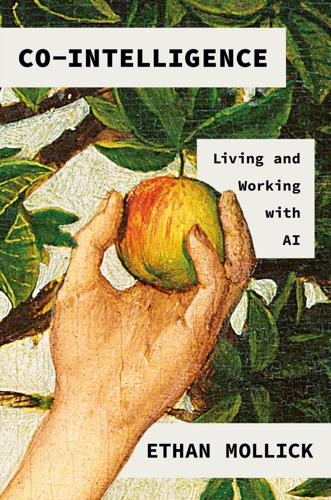
Co-Intelligence: Living and Working With AI
by
Ethan Mollick
Published 2 Apr 2024
It was proposed by Alan Turing, a brilliant mathematician and computer scientist widely regarded as the father of modern computing. Turing was fascinated by the question, Can machines think? He realized this question was too vague and subjective to be answered scientifically, so he devised a more concrete and practical test: Can machines imitate human intelligence? In his 1950 paper “Computing Machinery and Intelligence,” Turing described a game he called the Imitation Game, in which a human interrogator would communicate with two hidden players: a human and a machine. The interrogator’s task was to determine which player was which, based on their responses to questions. The machine’s goal was to fool the interrogator into thinking it was human.
…
Ashford, “The Mechanical Turk: Enduring Misapprehensions Concerning Artificial Intelligence,” The Cambridge Quarterly 46, no. 2 (2017): 119–39, https://doi.org/10.1093/camqtly/bfx005. GO TO NOTE REFERENCE IN TEXT mechanical mouse called Theseus: D. Klein, “Mighty Mouse,” MIT Technology Review, December 19, 2018. GO TO NOTE REFERENCE IN TEXT the imitation game, where computer pioneer Alan Turing: A. M. Turing, “Computing Machinery and Intelligence,” Mind 49, no. 236 (1950): 433–460, https://doi.org/10.1093/mind/LIX.236.433. GO TO NOTE REFERENCE IN TEXT powerful prediction systems: A. Agarwhal, J. Gans, and A. Goldfarb, Prediction Machines: The Simple Economics of Artificial Intelligence (Cambridge, MA: Harvard Business Review Press, 2018).
…
Cowen, “Behavioral Economics and ChatGPT: From William Shakespeare to Elena Ferrante,” Marginal Revolution, August 1, 2023, https://marginalrevolution.com/marginalrevolution/2023/08/behavioral-economics-and-chatgpt-from-william-shakespeare-to-elena-ferrante.html. GO TO NOTE REFERENCE IN TEXT Turing predicted that: A. M. Turing, “Computing Machinery and Intelligence,” Mind 49, no. 236 (1950): 433–60, https://doi.org/10.1093/mind/LIX.236.433. GO TO NOTE REFERENCE IN TEXT a lot of interest and debate: “The Turing Test,” Stanford Encyclopedia of Philosophy, 2003, https://plato.stanford.edu/entries/turing-test/#Oth. GO TO NOTE REFERENCE IN TEXT most influential examples was ELIZA: J.
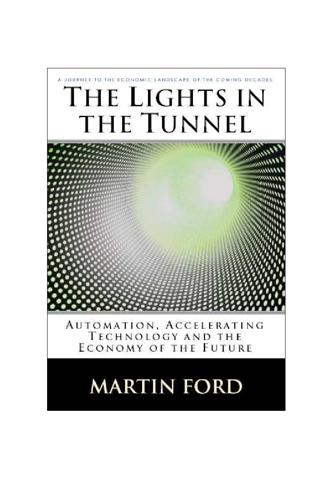
The Lights in the Tunnel
by
Martin Ford
Published 28 May 2011
This irrational, but perhaps understandable, objection to the idea that machines might someday begin to think and reason was first articulated by the founder of computer science, Alan Turing (Please see the last section of this Appendix). Turing initiated the field of artificial intelligence with his 1950 paper “Computing Machinery and Intelligence.” Here’s how Turing expressed what he called the “Heads in the Sand” Objection (which, of course, he rejected): “The consequences of machines thinking would be too dreadful. Let us hope and believe that they cannot do so.” 54 Two Questions Worth Thinking About One While you might not agree that it will ever be a reality, it is easy to imagine an economy with no human workers.
…
If strong AI does arrive, how will we know? That is a question that was first asked by Alan Turing nearly sixty years ago. Turing, a legendary British mathematician and code breaker during World War II, is often considered to be the founder of computer science. In 1950, Turing published a paper entitled “Computing Machinery and Intelligence,” in which he proposed a test to answer the question: “Can machines think?” Turing’s test was based on a game popular at parties at the time. In today’s terms, it amounts to a three-way instant messaging conversation. One participant is a human judge. The other participants are another person and a machine—both of whom attempt to convince the judge that they are human by conducting a normal conversation.
…
Web: http://www.econ.yale.edu/smith/econ116a/keynes1.pdf p. 195 footnote, Einstein’s view on technological unemployment, see: Walter Isaacson, Einstein: His Life and Universe, New York, Simon & Schuster, 2007, p.403. Chapter 5: The Green Light 53 For more on the challenges of addressing poverty, see: William Easterly, The Elusive Quest for Growth: Economists’ Adventures and Misadventures in the Tropics, Cambridge, MA, MIT Press, 2002. Appendix / Final Thoughts 54 A.M Turing, “Computing Machinery and Intelligence”, Mind, 1950. Web: http://loebner.net/Prizef/TuringArticle.html 55 “French students shy of real world”, BBC News, March 14, 2008. Web: http://news.bbc.co.uk/2/hi/europe/7293992.stm 56 Blue Brain Project, Web: http://bluebrain.epfl.ch/ 57 Roger Penrose, The Emperor’s New Mind: Concerning Computers, Minds, and the Laws of Physics, Oxford University Press, 1989 and Shadows of the Mind: A Search for the Missing Science of Consciousness, Oxford University Press, 1994. 58 For example: John Markoff, “Scientists worry that Machines may Outsmart Man”, New York Times, July 25, 2009.

The Singularity Is Nearer: When We Merge with AI
by
Ray Kurzweil
Published 25 Jun 2024
Nordhaus, “Two Centuries of Productivity Growth in Computing,” Journal of Economic History 67, no. 1 (March 2007): 128–59, https://doi.org/10.1017/S0022050707000058. BACK TO NOTE REFERENCE 2 Chapter 1: Where Are We in the Six Stages? Alan M. Turing, “Computing Machinery and Intelligence,” Mind 59, no. 236 (October 1, 1950): 435, https://doi.org/10.1093/mind/LIX.236.433. BACK TO NOTE REFERENCE 1 Chapter 2: Reinventing Intelligence Alan M. Turing, “Computing Machinery and Intelligence,” Mind 59, no. 236 (October 1, 1950): 435, https://doi.org/10.1093/mind/LIX.236.433. BACK TO NOTE REFERENCE 1 Alex Shashkevich, “Stanford Researcher Examines Earliest Concepts of Artificial Intelligence, Robots in Ancient Myths,” Stanford News, February 28, 2019, https://news.stanford.edu/2019/02/28/ancient-myths-reveal-early-fantasies-artificial-life.
…
BACK TO NOTE REFERENCE 161 Jonathan Cohen, “Right on Track: NVIDIA Open-Source Software Helps Developers Add Guardrails to AI Chatbots,” NVIDIA, April 25, 2023, https://blogs.nvidia.com/blog/2023/04/25/ai-chatbot-guardrails-nemo. BACK TO NOTE REFERENCE 162 Turing, “Computing Machinery and Intelligence.” BACK TO NOTE REFERENCE 163 Turing, “Computing Machinery and Intelligence.” BACK TO NOTE REFERENCE 164 For example, in 2014 a chatbot called Eugene Goostman gained entirely unearned headlines as having passed the Turing test by imitating a thirteen-year-old Ukrainian boy who spoke poor English.
…
Finally, we’ll turn to how, aided by superhuman AI, we will engineer brain–computer interfaces that vastly expand our neocortices with layers of virtual neurons. This will unlock entirely new modes of thought and ultimately expand our intelligence millions-fold: this is the Singularity. The Birth of AI In 1950, the British mathematician Alan Turing (1912–1954) published an article in Mind titled “Computing Machinery and Intelligence.”[1] In it, Turing asked one of the most profound questions in the history of science: “Can machines think?” While the idea of thinking machines dates back at least as far as the bronze automaton Talos in Greek myth,[2] Turing’s breakthrough was boiling the concept down to something empirically testable.

The Road to Conscious Machines
by
Michael Wooldridge
Published 2 Nov 2018
The Turing test achieves this by clearly separating the interrogators from the thing that is being interrogated: the only evidence that the interrogators have to go on are the inputs and outputs – the questions sent by the interrogator, and the responses that the interrogator later receives. The thing on the other end is a black box as far as the Turing test is concerned, in the sense that we are not allowed to examine its internal structure: all that we have are the inputs and outputs. Turing’s article ‘Computing Machinery and Intelligence’, describing his test, was published in the prestigious international journal Mind in 1950.9 Although many articles touching on AI-like ideas had been published before this, Turing approached the subject for the first time from the standpoint of the modern digital computer. As such, his article is generally recognized as the first AI publication.
…
Both have moved in and out of fashion over the past 60 years, and as we will see, there has even been acrimony between the two schools. However, as AI emerged as a new scientific discipline in the 1950s, it was symbolic AI that largely held sway. PART TWO How did We Get Here? Chapter 2 The Golden Age Although Turing’s article ‘Computing Machinery and Intelligence’, which introduced the Turing test, made what we now recognize as the first substantial scientific contribution to the discipline of AI, it was a rather isolated contribution, because AI as a discipline simply did not exist at the time. It did not have a name, there was no community of researchers working on it, and the only contributions at the time were speculative conceptual ones, such as the Turing test – there were no AI systems.
…
The instructions I’ve listed here are typical of a relatively low-level programming language, but still much more abstract (and much easier to understand) than a Turing machine program. 8. T. H. Cormen, C. E. Leiserson and R. L. Rivest. Introduction to Algorithms (1st edn). MIT Press and McGraw-Hill, 1990. 9. A. M. Turing. ‘Computing Machinery and Intelligence’. Mind, 49, 1950, pp. 433–60. 10. This dialogue was generated with a version of ELIZA that comes with every Apple Macintosh computer. If you have a Mac you can try it yourself. Launch the Terminal application by opening the Applications folder, then the Utilties folder within it, and double-click on the Terminal application icon.
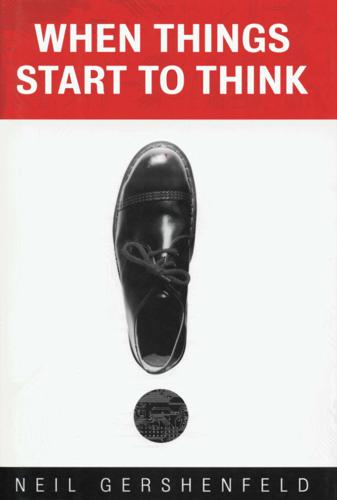
When Things Start to Think
by
Neil A. Gershenfeld
Published 15 Feb 1999
By typing questions on both terminals, the challenge is to determine which is which. This is a quantitative test that can be run without having to answer deep questions about the meaning of intelligence. Armed with a test for intelligence, Turing wondered how to go about developing a machine that might display it. In his elegant essay "Computing Machinery and Intelligence," he offers a suggestion for where to start: We may hope that machines will eventually compete with men in all purely intellectual fields. But which are the best ones to start with? Even this is a difficult decision. Many people think that a very abstract activity, like the playing of chess, would be best.
…
The importance of perception to cognition can be seen in the wiring of our brains. Our senses are connected by two-way channels: information goes in both directions, letting the brain fine-tune how we see and hear and touch in order to learn the most about our environment. This insight takes us back to Turing. He concludes "Computing Machinery and Intelligence" with an alternative suggestion for how to develop intelligent machines: It can also be maintained that it is best to provide the machine with the best sense organs that money can buy, and then teach it to understand and speak English. This process could follow the normal teaching of a child.
…
Index adding machine, Pascal's, 131-32 Adelson, Ted, 180-81 affective states, computer's perception of, 53-54 agents, 107, 109, 116-17 airbag, smart, 170-71, 180 analog circuits, 165, 166 Analytical Engine, 125 Any Thing project, 70, 71, 73 Apple Macintosh, 139 Argonne National Laboratory, 158 ARPANET, 79 artificial intelligence, 108, 128, 129-30, 135, 201 sensory perception and, 135, 201 assembly line, 180 AT&T, 158, 203 autonomy and wearable computers, 57-58 Babbage, Charles, 124-27, 132 Barings Bank, 77, 86 bassoon, 29-32 Begin Again Again, 34 Bell Labs, 36, 162, 174 Bender, Walter, 202-3 Benioff, Paul, 158 Bennett, Charles, 159, 176, 177 Benton, Steve, 14 2 Bill of Rights, 98-99 Bill of Things' Rights, 104 Bill of Things Users' Rights, 102 Birnbaum, Joel, 52 Bitnet, 89 "bit" of information, 176 "blessing of dimensionality," 164-65 Boltzmann, Ludwig, 175 books, printed, 13-25 competing technologies, 10, 13-25 dimensions of, 20 future of computing, lesson to be derived for, 14 Gutenberg and movable metal type, 18-19 as historical artifacts, 23-24 libraries and electronic book, 20-23 lighting for reading, 15 papal bull to require certification of, 96 paper for, 15 specifications of, 13-14 state of book business, 13 universal book, 18-20 Borden, David, 30-31 218 +INDEX Boyden, Edward, 196, 197 brain, 212 brain, human, 135, 163-64 Brain Opera, 206-7 Bretton Woods Agreement, 79 Bunka Fashion College, 55 Bush, Vannevar, 139,171-74,180 Buxton, Bill, 140 buzz words, technology, 107-21 CAD software, 73 calculus, 131, 132 Caltech, 158 carbonless copy paper, 15-16 card catalogs, 20-22 Carnegie Mellon, 129 CD-ROM, 10 as competitor of printed book, 13 cello: comparison of computer mouse to violin bow, 142-43 critical reaction to digital cello, 37-38 designing a smart, 27-44, 143-44, 187 limits of classic, 33, 37 Cellular Automata (CAs), 132-33 Census Bureau, 78 central planning, 88-89 chaos theory, 109, 112-16 chess-playing computer programs, 128-30, 134-35 children: learning methods of, 137-38 LOGO programming language, 138, 147 China, Internet access in, 99 Chuang, Isaac, 160-61 Chung, joe, 34 Citron, Robert, 78 Clarke, Arthur C., 51 Clausius, Rudolf, 175 clocks, 104 clothing and wearable computers, 50, 52,55-56,61,102-3,179 coffeemaker, intelligent, 201 communications: imposing on our lives, 95, 100-2 performance limit of a channel of, 176 privacy issues and, 100-1 regulation of, 99-100 see also specific forms of communication, e.g. e-mail; telephones Communications Act of 1934, 99 Communications Assistance for Law Enforcement Act (CALEA), 208 compact disc players, 4 Compumachine, 67 computer chips: entropy and, 177 future uses of, 152 lowering the cost of, 152-56 computers: affective states and, 53-54 Babbage's contribution in developing, 124-25, 132 battle of operating systems, 146 chips, see computer chips cost of, 4, 103 desktop, 5 difficulty using, 4, 7, 103 division of industry into software and hardware, 7 ease of use, 4, 7, 103 educational use of, 201 expectations from, 4 inability to anticipate your needs, 7-8 interfaces, see interfaces, computer irritation with, 199-200 laptop, see laptop computers mainframes, see mainframes minicomputers, 52, 138 Moore's law, 155-57, 163 music and, see musiC and computers parallel, 68, 157 PCs, see personal computers (PCs) peripherals, 52-53 INDEX+ pnvacy issue and, 56-57, 100-1 productivity and, 7 pyramid of information technology, 151 quantum, 157-63, 177 software, see software speed of, 7 standards, 88-90, 126 supercomputers, 151, 177, 199 unobtrusive computing, 44, 200, 211 upgrades, 98 wearable, see wearable computers "Computing Machinery and Intelligence," 128, 135 consciousness, quantum mechanics to describe human, 130-31 Constitution, U.S., 98-99 Copernicus, 113-14 copyrights, 181 Creapole, 55 credit cards: electronic commerce and, 80-81 privacy and use of, 100-1 reflective holograms on, 142 cryptography, 80-81, 156, 207-8 "curse of dimensionality," 164 Daiwa Bank, 77, 86 Darwin, Charles, 125 Data Glove, 49 "Deep Blue," 129-30 "Deep Thought," 129 Defense Advanced Research Projects Agency (DARPA), 79, 129 derivative~ 78, 85-86 Deutsch, David, 158 Deutsche Telekom, 203 developing countries, 210-11 Dickinson, Becton, 204 Difference Engine, 124-25, 132 digital evolution, 10 digital money, see smart money digital representation, effect of time and use on, 5-6 219 Digital Revolution: disturbance resulting from, 10 promise and reality of, 3, 5 disabled, wearable computers and, 58 discovery, the business of, 169-84 Disney, 203 distance learning, 19 3 distribution of wealth, 78 division of labor between people and machines, 8 DNA molecules, 157 Domus, 55 Doom (computer game), 89 Dynabook, 138 e-broidery, 55 Economist, 115 economy, electronic, 79 education: classroom, 188, 197 departmental organization of, 190-91 distance learning, 193 just-in-time, 192 local learning, 193 at Massachusetts Institute of Technology (MIT) Media Lab, 187-97 use of computers for, 201 Einstein's theory of relativity, 178 electronic books, 15-25, 38, 72 electronic commerce, 80-81, 152, 156 cryptography and, 80-81 paying-as-you-go, 82 electronic funds transfers, 80 electronic ink, 16, 17, 200 universal book and, 18-20 e-mail, 101-2, 104-6 encryption, 80-81 Engelhart, Doug, 139 English Bill of Rights, 98 entanglement, 159 entropy, 175, 176, 177, 188-90 "Entschedidungsproblem," 127 Equifax, 101 220 + Ernst, Richard R.
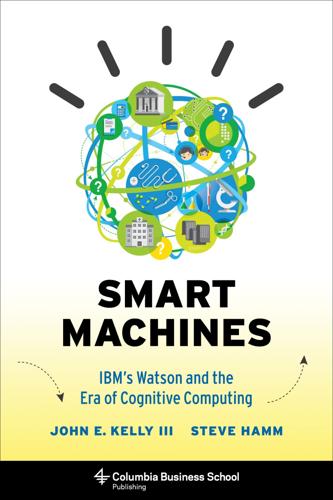
Smart Machines: IBM's Watson and the Era of Cognitive Computing (Columbia Business School Publishing)
by
John E. Kelly Iii
Published 23 Sep 2013
CODA: AN ALLIANCE OF HUMAN AND MACHINE Ever since Watson won at Jeopardy!, people have been asking the research scientists who designed the machine if they’d like to try to pass the so-called Turing test. That’s an exercise suggested by computing pioneer Alan Turing in his 1950 paper “Computing Machinery and Intelligence,” where he raised the question: “Can machines think?” He suggested that to test whether a machine can think, a human judge should have a written conversation via computer screen and keyboard with another human and a computer. If the judge couldn’t tell the human from the machine based on their responses, the machine would have passed the test.1 With this test, Turing set a standard for measuring the capabilities of machines that has not yet been met.
…
Colin Harrison, IBM, “Smarter Cities—NextGen,” PowerPoint presentation, presented at the Major Cities of Europe Conference, Vienna, Austria, June 5, 2012. 9. Milind Naphade, IBM Research, interview, September 27, 2012. 10. Chandra Ravada, Iowa East Central Intergovernmental Association, interview, January 7, 2013. CODA: AN ALLIANCE OF HUMAN AND MACHINE 1. Alan Turing, “Computing Machinery and Intelligence,” Mind 59 (October 1950): 433–60; see http://www.loebner.net/Prizef/TuringArticle.html.
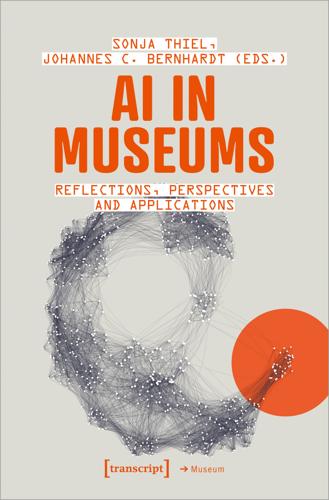
AI in Museums: Reflections, Perspectives and Applications
by
Sonja Thiel
and
Johannes C. Bernhardt
Published 31 Dec 2023
Weapons of Math Destruction: How Big Data Increases Inequality and Threatens Democracy. New York, Crown. Seising, Rudolf (2021). Es denkt nicht! Die vergessenen Geschichten der KI. Frankfurt am Main/Wien/Zürich, Büchergilde Gutenberg. 19 20 AI in Museums Turing, Alan M. (1950). Computing Machinery and Intelligence. Mind LXI (236), 433–60. https://doi.org/10.1093/oso/9780198250791.003.0017. Vater, Christian (2023). Turings Maschinen. Eine Problemstellung zwischen Wissenschafts- und Technikgeschichtsschreibung. Heidelberg, Universität Heidelberg. Part 1: Reflections The Role of Culture in the Intelligence of AI Mercedes Bunz Artificial Intelligence (AI) clearly suffers from its name, which easily leads to misunderstandings.
…
Reason, Truth and History. Cambridge, Cambridge University Press. https://doi.org/10.1017/cbo9780511625398. Schear, Joseph K. (2013) (Ed). Mind, Reason, and Being-in-the-World: The McDowell-Dreyfus-Debate. London, Routledge. https://doi.org/10.4324/97802030 76316. Turing, Alan M. (1950). Computing Machinery and Intelligence. Mind LXI (236), 433–60. https://doi.org/10.1093/oso/9780198250791.003.0017. Wertheimer, Tiffany (2022). Blake Lemoine: Google Fires Engineer Who Said AI Tech Has Feelings. BBC News, 23 July 2022. https://www.bbc.com/news/technology62275326. 39 AI and Art Arguments for Practice Arno Schubbach Over the past decade, the advances in artificial intelligence (AI) research have been attracting a lot of attention and provoked a broad variety of debates.
…
In: Proceedings of POM Beirut 2019, 21–30. http://dx.doi.org/10.14236/ewic/POM19.4. Taylor, Grant (2012). Routing Mondrian: The A. Michael Noll Experiment. Media-N 8 (2). Available online at https://median.newmediacaucus.org/routing-mondri an-the-a-michael-noll-experiment/. Turing, Alan (2004). Computing Machinery and Intelligence. In: B. Jack Copeland (Ed.). The Essential Turing: Seminal Writings in Computing, Logic, Philosophy, Artificial Intelligence, and Artificial Life plus The Secrets of Enigma. Oxford, Oxford University Press, 441–64. https://doi.org/10.1093/oso/9780198250791.003.0 017. Weinbach, Samuel/Bellagente, Marco/Eichenberg, Constantin et al. (2022).

The Age of Spiritual Machines: When Computers Exceed Human Intelligence
by
Ray Kurzweil
Published 31 Dec 1998
The Birth of Artificial Intelligence The similarity of the computational process to the human thinking process was not lost on Turing. In addition to having established much of the theoretical foundations of computation and having invented the first operational computer, he was instrumental in the early efforts to apply this new technology to the emulation of intelligence. In his classic 1950 paper, Computing Machinery and Intelligence, Turing described an agenda that would in fact occupy the next half century of advanced computer research: game playing, decision making, natural language understanding, translation, theorem proving, and, of course, encryption and the cracking of codes.6 He wrote (with his friend David Champernowne) the first chess-playing program.
…
Anscombe, Wittgenstein “acknowledges” that he made “grave mistakes” in his earlier work, the Tractatus. 9 For a useful overview of Descartes’s life and work, see The Dictionary of Scientific Biography, vol. 4, pp. 55-65. Also, Jonathan Rées Descartes presents a unified view of Descartes’s philosophy and its relation to other systems of thought. 10 Quoted from Douglas R. Hofstadter, Gödel, Escher, Bach: An Eternal Golden Braid (New York: Basic Books, 1979). 11 “Computing Machinery and Intelligence,” Mind 59 (1950): 433-460, reprinted in E. Feigenbaum and J. Feldman, eds., Computers and Thought (New York: McGraw-Hill, 1963). 12 For a description of quantum mechanics, read George Johnson, “Quantum Theorists Try to Surpass Digital Computing,” New York Times, February 18, 1997.
…
Zuse, “Verfahren zur Selbst Atigen Durchfurung von Rechnungen mit Hilfe von Rechenmaschinen,” German Patent Application Z23624, April 11, 1936. Translated extracts, titled “Methods for Automatic Execution of Calculations with the Aid of Computers,” appear in Brian Randell, ed., The Origins of Digital Computers, pp. 159-166. 6 “Computing Machinery and Intelligence,” Mind 59 (1950): 433-460, reprinted in E. Feigenbaum and J. Feldman, eds., Computers and Thought (New York: McGraw-Hill, 1963). 7 See A. Newell, J. C. Shaw, and H. A. Simon, “Programming the Logic Theory Machine,” Proceedings of the Western joint Computer Conference, 1957, pp. 230-240. 8 Russell and Whitehead’s Principia Mathematica (see reference at the end of this end-note), first published in 1910-1913, was a seminal work that reformulated mathematics based on Russell’s new conception of set theory.
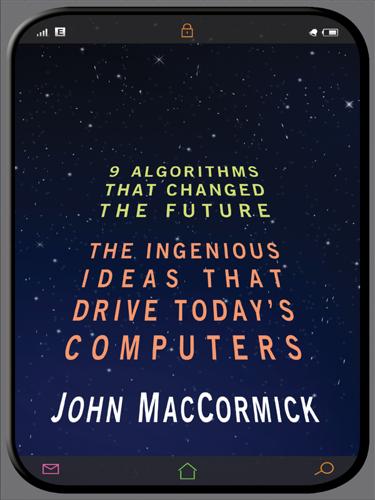
Nine Algorithms That Changed the Future: The Ingenious Ideas That Drive Today's Computers
by
John MacCormick
and
Chris Bishop
Published 27 Dec 2011
NEURAL NETWORKS The remarkable abilities of the human brain have fascinated and inspired computer scientists ever since the creation of the first digital computers. One of the earliest discussions of actually simulating a brain using a computer was by Alan Turing, a British scientist who was also a superb mathematician, engineer, and code-breaker. Turing's classic 1950paper, entitled Computing Machinery and Intelligence, is most famous for a philosophical discussion of whether a computer could masquerade as a human. The paper introduced a scientific way of evaluating the similarity between computers and humans, known these days as a “Turing test.” But in a less well-known passage of the same paper, Turing directly analyzed the possibility of modeling a human brain using a computer.
…
But if its strongest version holds, then our computers aren't the only ones humbled by the limits of undecidability. The same limits would apply not only to the genius at our fingertips, but the genius behind them: our own minds. 11 Conclusion: More Genius at Your Fingertips? We can only see a short distance ahead, but we can see plenty there that needs to be done. —ALAN TURING, Computing Machinery and Intelligence, 1950 I was fortunate, in 1991, to attend a public lecture by the great theoretical physicist Stephen Hawking. During the lecture, which was boldly titled “The Future of the Universe,” Hawking confidently predicted that the universe would keep expanding for at least the next 10 billion years.
…
See also hardware computer program; analyzing another program; executable; impossible; input and output; intelligent; programmers; programming; programming languages; verification; world's first programmer; yes-no computer programming. See computer program computer science; beauty in; certainty in; curriculum; founding of; in high school; introductory teaching; popularity of; predictions about; public perception of; research; in society; theory of; undecidable problems in Computing Machinery and Intelligence concurrency consciousness consistency. See also inconsistency contradiction. See proof by contradiction Cormen, Thomas cosmology Covenant Woman CPU crash; intentional Crashing Problem CrashOnSelf.exe, CRC32 credit card Crevier, Daniel Croft, Bruce cryptographic hash function cryptography; public key (see public key cryptography) cuneiform cycle Dartmouth AI conference Dasgupta, Sanjoy data center database; column; definition of; geographically replicated; of faces; relational; replicated; row; table.
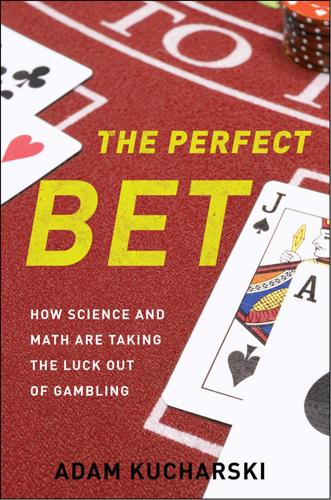
The Perfect Bet: How Science and Math Are Taking the Luck Out of Gambling
by
Adam Kucharski
Published 23 Feb 2016
To train his software, Dahl set up lots of bots and got them to face off against each other in game after game. The computer programs sat through billions of hands, betting and bluffing, their artificial brains developing while they played. As the bots improved, Dahl found that they began to do some surprising things. IN HIS LANDMARK 1952 paper “Computing Machinery and Intelligence,” Turing pointed out that many people were skeptical about the possibility of artificial intelligence. One criticism, put forward by mathematician Ada Lovelace in the nineteenth century, was that machines could not create anything original. They could only do what they were told. Which meant a machine would never take us by surprise.
…
The Essential Turing (Oxford: Oxford University Press, 2004). 170manuscript entitled “The Game of Poker”: The game of poker. File AMT/C/18. The Papers of Alan Mathison Turing. The UK National Archives. 170He also wondered how games: Details of the imitation game given in: Turing, A. M. “Computing Machinery and Intelligence.” Mind 59 (1950): 433–460. 171When it played chess against Garry Kasparov: Kasparov, Garry. “The Chess Master and the Computer.” New York Review of Books, February 11, 2010. http://www.nybooks.com/articles/archives/2010/feb/11/the-chess-master-and-the-computer/. 172In 2013, journalist Michael Kaplan: Details of Vegas bot given in: Kaplan, Michael.
…
J., 140–141, 142 clustered volatility, 162 coalitions, 181–183 code breaking, 26, 62–63, 64, 169–170 coefficient of determination, 54 coin tosses, 4, 5, 58, 65, 66, 199, 210–211 Coles, Stuart, 73–74, 75, 76–78, 82, 86, 97, 107, 218 collusion, 181, 182 competitive relationships, 129, 130–131, 136 competitiveness and memory, 161–162 complexity, 83–84, 120, 123, 128, 131, 134, 142, 154, 155, 159, 160, 161, 162, 170, 179–180, 188, 210, 211, 212 Computer Group, 81–82, 96, 97 computer programs, automated. See robots (bots) computerized prediction in blackjack, 42 in checkers, 156, 157 in horse racing, 46, 51, 57, 68 and the Monte Carlo method, 61 in roulette, 2, 13, 14, 15–20, 22 in sports, 80–82, 87, 88, 89–90, 97, 105, 217 “Computing Machinery and Intelligence” (Turing), 175 Connect Four, 158–159 control over events, 199 controlled randomness, 25–26, 28 cooperative relationships, 129, 136 copycats, 132 Coram, Marc, 63, 64 correlation and causation, issue of, 206–207 Corsi rating, 85 Cosmopolitan, Las Vegas 87 countermeasures, 21, 86, 195, 214 counting cards.
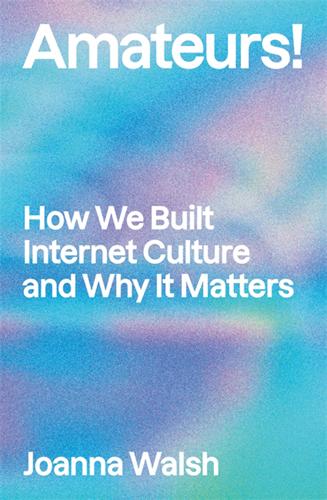
Amateurs!: How We Built Internet Culture and Why It Matters
by
Joanna Walsh
Published 22 Sep 2025
Who ripped them from the family album, or who entrusted their album to Picasa, Flickr or any of those semi-defunct photo-album apps, created in the days when putting your image online didn’t automatically make you think about revenge porn or identity theft? Who are the original keepers of these memories? ‘Actual human computers really remember what they have got to do,’ wrote Alan Turing in Computing, Machinery and Intelligence.19 In those days, a human computer was the person inputting data to the memory: often – due to the keyboard’s association with secretarial work – a woman. So, many women tend the family album, first on the page and then the screen, and a refusal of this gendered labour masquerading as leisure is one of the reasons I don’t take photos.
…
A version of the last section of ‘Selfies’ was published at maifeminism.com on 27 January 2020.226 is blank 227 Timeline 1790 Immanuel Kant, Critique of Judgment 1856 John Ruskin, Of the Turnerian Picturesque 1857 Karl Marx, Grundrisse 1896 Lumière brothers, L’arrivée d’un train à La Ciotat 1899 Sigmund Freud, Screen Memories 1929 Walter Benjamin, Folk Art (fragment) 1935 Walter Benjamin, The Work of Art in the Age of Mechanical Reproduction 1937 Herbert Marcuse, Art and Liberation 1944 Theodor Adorno and Max Horkheimer, The Culture Industry 1947 Henri Lefebvre, Critique of Everyday Life 1948 Truman Capote, Other Voices, Other Rooms 1950 Alan Turing, Computing, Machinery and Intelligence 1955 SHARE IBM-run user group for IBM mainframe computers 1960 Maurice Merleau-Ponty, Eye and Mind 1965 Yoko Ono, Cut Piece 1965 Julie Christie, Darling 1966 Susan Sontag, Against Interpretation 1969 Bob Taylor, ARPANET 1967 Roland Barthes, Death of the Author 1968 Henri Lefebvre, Everyday Life in the Modern World 1968 Garrett Hardin, The Tragedy of the Commons 1969 Michel Foucault, What Is an Author?
…
, knowyourmeme.com. 41.John Cook, ‘Q&A: Ben Huh of I Can Has Cheezburger on tech, cats and more’, Venture Blog, 6 November 2008. 2011: The Old Aesthetic 1.Andrew Blum, ‘Children of the Drone’, Vanity Fair, 12 June 2013. 2.Ian Bogost, ‘The New Aesthetic Needs To Get Weirder’, Atlantic, 13 April 2012. 235 3.James Bridle, ‘The New Aesthetic and Its Politics’, booktwo.org, 12 June 2013. 4.Jason Kottke, ‘Tumblelogs’, kottke.org, 19 October 2005. 5.Bruce Sterling, ‘An Essay on the New Aesthetic’, Wired, 2 April 2012. 6.Blum, ‘Children of the Drone’. 7.Russell Davis, ‘something something something’, russelldavies.typepad.com, 5 October 2010. 8.Ibid. 9.Phil Gyford, ‘One of today’s futures’, gyford.com, 26 May 2011. 10.James Bridle, ‘The New Aesthetic and Its Politics’. 11.James Bridle, ‘The New Aesthetic (+10)’, booktwo.org, 6 May 2021. 12.Robert Jackson, ‘The Banality of the New Aesthetic’, furtherfield.org, 15 April 2012. 13.Hito Steyerl, ‘In Defence of the Poor Image’, e-flux.com, no. 10, November 2009. 14.John Ruskin, ‘Of the Turnerian Picturesque’, in Modern Painters (Knopf, 1987 [1843–60]), p. 427. 15.Ibid., p. 423. 16.Ibid., p. 432. 17.Joseph Addison, ‘Geneva and the Lake’, in Remarks on Several Parts of Italy etc. in the Years 1701, 1702, 1703 (T. Walker, 1773 edn), p. 261. 18.Ruskin, ‘Of the Turnerian Picturesque’, p. 430. 19.Alan Turing, ‘Computing, Machinery and Intelligence’, in The Essential Turing, ed. B. Jack Copeland (Oxford University Press, 2004), p. 445. 20.Sigmund Freud, ‘Screen Memories’, in The Complete Psychological Works of Sigmund Freud, Volume 3 (Vintage Classics, 2001), p. 316. 21.Ibid., p. 317. 22.Jenny Diski, ‘The Me Who Knew It’, London Review of Books, vol. 34, no. 3, 9 February 2012. 236 23.Annie Ernaux, The Years (Seven Stories Press, 2017), pp. 34, 26. 24.Dubravka Ugrešić, The Museum of Unconditional Surrender (New Directions, 2002), p. 27. 25.Freud, ‘Screen Memories’, p. 321. 26.Susan Sontag, On Photography (Penguin, 2019), p. 10. 27.Ibid., p. 16. 28.Geoffrey Movius, ‘An Interview with Susan Sontag’, Boston Review, 1 June 1975. 29.Dubravka Ugrešić, Thank You for Not Reading (Dalkey Archive Press, 2003), p. 181. 30.Ugrešić, The Museum of Unconditional Surrender, p. 27. 31.Ibid., p. 28. 32.Ibid. 33.Matt Moen, ‘Cursed Images: Finding Comfort in Discomfort’, papermag.com, 9 December 2019. 34.Adam Harper, ‘Personal Take: – Vaporwave is Dead, Long Live Vaporwave!’
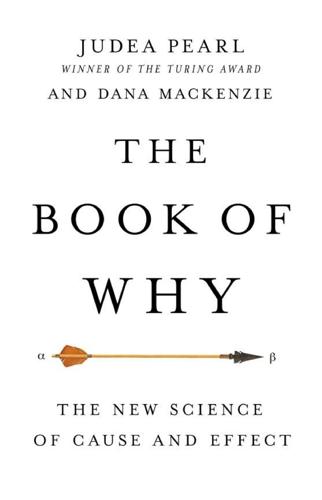
The Book of Why: The New Science of Cause and Effect
by
Judea Pearl
and
Dana Mackenzie
Published 1 Mar 2018
All evidence comes with a certain amount of uncertainty. Bayes’s rule tells us how to perform step (4) in the real world. FROM BAYES’S RULE TO BAYESIAN NETWORKS In the early 1980s, the field of artificial intelligence had worked itself into a cul-de-sac. Ever since Alan Turing first laid out the challenge in his 1950 paper “Computing Machinery and Intelligence,” the leading approach to AI had been so-called rule-based systems or expert systems, which organize human knowledge as a collection of specific and general facts, along with inference rules to connect them. For example: Socrates is a man (specific fact). All men are mortals (general fact).
…
I am very confident, though, that researchers will discover the power of Bareinboim’s algorithms before long, and then external validity, like confounding before it, will cease to have its mystical and terrifying power. STRONG AI AND FREE WILL The ink was scarcely dry on Alan Turing’s great paper, “Computing Machinery and Intelligence,” when science fiction writers and futurologists began toying with the prospect of machines that think. Sometimes they envisioned these machines as benign or even noble figures, like the whirry, chirpy R2D2 and the oddly British android C3PO from Star Wars. Other times the machines are much more sinister, plotting the destruction of the human species, as in the Terminator movies, or enslaving humans in a virtual reality, as in The Matrix.
…
Springer-Verlag, New York, NY. Spohn, W. (2012). The Laws of Belief: Ranking Theory and Its Philosophical Applications. Oxford University Press, Oxford, UK. Suppes, P. (1970). A Probabilistic Theory of Causality. North-Holland Publishing Co., Amsterdam, Netherlands. Turing, A. (1950). Computing machinery and intelligence. Mind 59: 433–460. Weisberg, D. S., and Gopnik, A. (2013). Pretense, counterfactuals, and Bayesian causal models: Why what is not real really matters. Cognitive Science 37: 1368–1381. CHAPTER 2. FROM BUCCANEERS TO GUINEA PIGS: THE GENESIS OF CAUSAL INFERENCE Annotated Bibliography Galton’s explorations of heredity and correlation are described in his books (Galton, 1869, 1883, 1889) and are also documented in Stigler (2012, 2016).
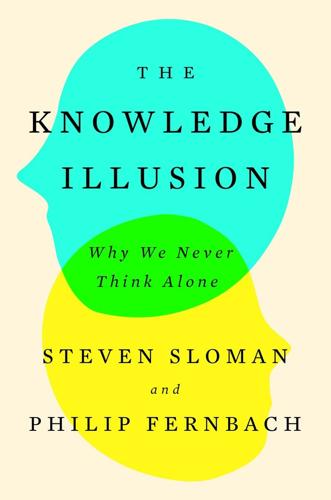
The Knowledge Illusion
by
Steven Sloman
Published 10 Feb 2017
Thinking was assumed to be a kind of computer program that runs in people’s brains. One of Alan Turing’s claims to fame is that he took this idea to its logical extreme. If people work like computers, then it should be possible to program a computer to do what a human being can. Motivated by this idea, his classic paper “Computing Machinery and Intelligence” in 1950 addressed the question Can machines think? In the 1980s, Landauer decided to estimate the size of human memory on the same scale that is used to measure the size of computer memories. As we write this book, a laptop computer comes with around 250 or 500 gigabytes of memory as long-term storage.
…
Cognitive Science 26(5): 521–562. Rozenblit and Keil quote: ibid., 10. what people know about bicycles: R. Lawson (2006). “The Science of Cycology: Failures to Understand How Everyday Objects Work.” Memory & Cognition 34(8), 1667–1675. Can machines think?: A. M. Turing (1950). “Computing Machinery and Intelligence.” Mind 59: 433–460. Landauer: T. K. Landauer (1986). “How Much Do People Remember? Some Estimates of the Quantity of Learned Information in Long-term Memory.” Cognitive Science 10(4): 477–493. They learned at approximately the same rate: For those familiar with information theory, the rate of acquisition Landauer estimated was roughly two bits per second.
…
See also artificial intelligence (AI); thought body-brain cooperation in cognitive processing, 101–05 collective mind, 5–6 CRT (Cognitive Reflection Test), 80–84 division of cognitive labor, 14, 109–11, 120–21, 128–29 illusion of understanding, 8, 15 individual limitations, 4–5, 15 Landauer, Thomas, 24–26 the mind compared to a computer, 24–27 moving text window example, 93–95 origins of, 4 Turing, Alan, 25 collaboration, 14, 109–11, 115–18, 121–22, 149–50, 226 collective intelligence hypothesis, 209–10 combinatorial explosion, 34 “The Coming Technological Singularity” (Vinge), 132 communal learning Brown, Ann, 228–30 Fostering Communities of Learners program, 228–30 group/regroup strategy, 228–30 jigsaw method, 229–30 communication language, 113–14 non-verbal, 114–15, 117 community development of, 112–13 intelligence, 259 responsibility, 259–61 community of knowledge, 80, 200, 206–14, 221, 223–27, 241–42 compatibility of different group members’ knowledge, 126 complexity airplane example, 28 beehive example, 107–08, 113–14 car example, 28 chaos theory, 34–35 class reunion example, 31 combinatorial explosion, 34 fractals, 33–34 hairpin example, 34 of the human brain, 29–30 military strategy, 32–33 in the natural world, 29–31 of politics, 16 recognizing, 35 reducing, 250 of technology, 134–35 weather prediction, 30–31 comprehension illusion of, 217–18 inverted text example, 217 Pledge of Allegiance example, 217–18 “Purple Haze” example, 218 computer checkers example of testing intelligence of a team, 210–11 “Computing Machinery and Intelligence” (Turing), 25 consequences of tiny changes. See chaos theory consequences vs. values arguments, 182–87 contribution of individuals example of group thinking, 122 Copernicus, Nicolaus, 198–99 counterfactual thought, 64–65 Galileo’s experiments with dropping different weights, 65–66 imagining scenarios to figure out likely outcomes, 66 crowdsourcing expertise, 146–50 ox’s weight example, 148 Pallokerho-35 Finnish soccer club example, 148 prediction market, 149 user ratings, 148 crows ability to reason diagnostically, 62 CRT (Cognitive Reflection Test), 80–84 bat and ball problem, 81 lily pad problem, 81–82 machines and widgets problem, 82 crystallized intelligence, 202 cult communities, 260 cultural values and cognition, 160–63 reconciling conflicting beliefs, 161–62 “Science Mike” (Mike McHargue), 160–62 cumulative culture, 117–18 curse of knowledge, 128, 244 curving bullets example of physics, 69–70 Dalio, Ray, 253 Damasio, Antonio, 103 decentralized collaborative activity, 149–50 Bitcoin, 150 block chain technology, 150 Ethereum, 150 decision-making, 103–05, 240, 241, 248–49, 250–53 deficit model of science attitudes, 157–60 Dehghani, Morteza, 185–86 Descartes, René, 87 de Soto, Hernando, 244–45 DeVito, Danny, 45–46 Dewey, John, 216 diagnostic reasoning, 58–62 crow example, 62 lethargy example, 59–61 diSessa, Andrea, 71 disgust, feelings of, 104–05 division of cognitive labor, 14, 109–11, 120–21, 128–29 area of expertise example, 120 car analogy example, 207–08 in the field of science, 222–23 household finances, 247 wine expert example, 120 dogs Cassie example, 49–50 Pavlovian conditioning, 50–51 doorway example of optic flow, 99–100 driving ability example of ignorance, 257–58 Dunbar, Robin, 113 Dunning, David, 257–58 Dunning-Kruger effect, 258 Eastwood, Clint, 172 economics of science, 227–28 education application of classroom learning, 216–17 becoming a car mechanic example, 219–20 expressing desire to learn that which is unknown, 221 financial issues, 240–41 history of Spain example, 220 Ignorance course, 221 illusion of comprehension, 217–18 just-in-time, 251–52 learning to accept what you don’t know, 220–21 mathematical abilities of Brazilian children, 215–16 peer, 230–31 purpose of, 219–21 teaching science, 222, 225–32 Einstein, Albert, 199 embodied intelligence, 91–93 embodiment, 102 emotional responses that influence decision-making, 103–05, 240 engagement as a human concept, 117 environment, knowledge of your personal, 94–96 Ethereum, 150 expertise and crowdsourcing, 146–50 in scientific matters, 226–27 to understand community issues, 188–89 explanation foes and fiends, 237–39 advertising, 239–40, 241–42 Band-Aids example, 237–38 skin care example, 239–40 vesting service letter example, 243–44 explorers’ self-confidence, 263 eyesight.

What Algorithms Want: Imagination in the Age of Computing
by
Ed Finn
Published 10 Mar 2017
Hayles, My Mother Was a Computer, 173. 47. Jonze, Her. 48. Ibid. 49. Ellwood et al., “‘Her’ Q&A.” 50. The Loebner Prize promises a solid gold medal and $100,000 “for the first computer whose responses [are] indistinguishable from a human’s.” “Home Page of the Loebner Prize.” 51. Turing, “Computing Machinery and Intelligence,” 443. 52. Adams, The Education of Henry Adams, XXV. 53. Plato, Symposium, 9:211d. 3 House of Cards: The Aesthetics of Abstraction There is no solace above or below. Only us—small, solitary, striving, battling one another. I pray to myself, for myself. Frank Underwood1 The Netflix Prize If Apple and Google want to dominate our relationships with search, access, and personal information, the movies-on-demand company Netflix wants to own the leisure time we spend on video entertainment.
…
We desperately need more readers, more critics, to interpret the algorithms that now define the channels and horizons of our collective imaginations. Notes 1. Mnih et al., “Human-Level Control through Deep Reinforcement Learning.” 2. Reese, “Google DeepMind.” 3. Metz, “Google’s AI Takes Historic Match against Go Champ with Third Straight Win.” 4. Turing, “Computing Machinery and Intelligence,” 457. 5. Domingos, The Master Algorithm, 4. 6. Madrigal, “How Netflix Reverse Engineered Hollywood”; Strogatz, “The End of Insight.” 7. Lem, Solaris. 8. Ptolemy, Transcendent Man. Thanks to Corey Pressman for bringing this reference to my attention. 9. Bush, “As We May Think.” 10.
…
Tech. http://www.washingtonpost.com/business/technology/faq-googles-new-privacy-policy/2012/01/24/gIQArw8GOQ_story.html. Tully, C., ed. ISPW ’88: Proceedings of the 4th International Software Process Workshop on Representing and Enacting the Software Process. New York: ACM, 1988. Turing, Alan M. “Computing Machinery and Intelligence.” Mind. New Series 59 (236) (October 1, 1950): 433–460. Turner, Fred. From Counterculture to Cyberculture: Stewart Brand, the Whole Earth Network, and the Rise of Digital Utopianism. Chicago: University of Chicago Press, 2006. “2014 Financial Tables—Investor Relations—Google,” Q1 2014. http://investor.google.com/financial/tables.html.
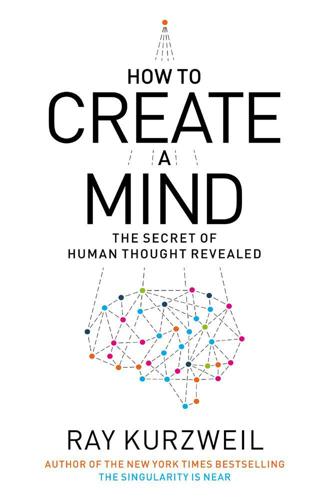
How to Create a Mind: The Secret of Human Thought Revealed
by
Ray Kurzweil
Published 13 Nov 2012
That brings us to the fourth important idea, which is to go beyond Ada Byron’s conclusion that a computer could not think creatively and find the key algorithms employed by the brain and then use these to turn a computer into a brain. Alan Turing introduced this goal in his 1950 paper “Computing Machinery and Intelligence,” which includes his now-famous Turing test for ascertaining whether or not an AI has achieved a human level of intelligence. In 1956 von Neumann began preparing a series of lectures intended for the prestigious Silliman lecture series at Yale University. Due to the ravages of cancer, he never delivered these talks nor did he complete the manuscript from which they were to be given.
…
It can consider more than just the highest-rated solution creature from the most recent generation(s). It can also consider a trend that goes beyond just the last two generations. 12. Dileep George, “How the Brain Might Work: A Hierarchical and Temporal Model for Learning and Recognition” (PhD dissertation, Stanford University, June 2008). 13. A. M. Turing, “Computing Machinery and Intelligence,” Mind, October 1950. 14. Hugh Loebner has a “Loebner Prize” competition that is run each year. The Loebner silver medal will go to a computer that passes Turing’s original text-only test. The gold medal will go to a computer that can pass a version of the test that includes audio and video input and output.
…
(film), 210 Aiken, Howard, 189 Alexander, Richard D., 224 algorithms, intelligent, 6–7 Allen, Paul, 266–72 Allman, John M., 179 Alzheimer’s disease, 102 amygdala, 71, 77, 106–8, 109 analog processing, digital emulation of, 194–95, 274 Analytical Engine, 189–90 anesthesia awareness, 206 animal behavior, evolution of, 122 apical dendrites, 110 aptitude, 111–12 artificial intelligence (AI), 7, 37–38, 50, 265, 280 Allen on, 270–71 biological models for, 273 chess playing and, 6, 38–39, 165–66, 257 conversation and, 168–69 as extension of neocortex, 172, 276 knowledge bases and, 4, 6–7, 170–71, 246, 247 language and speech processing in, 72–73, 92, 115–16, 122–23, 128, 135–41, 142–46, 145, 149–50, 152–53, 156, 157–72 medicine and, 6–7, 39, 108, 156, 160–61, 168 omnipresence of, 158 optimization of pattern recognition in, 112 sparse coding in, 95–96 see also neocortex, digital Audience, Inc., 96–97, 98 auditory association, 77 auditory cortex, 7, 77, 97, 128 auditory information processing, 96–97, 97 auditory nerve, 97, 128 data reduction in, 138 auditory pathway, 97 autoassociation, 59–61, 133, 173 automobiles, self-driving, 7, 159, 261, 274 axons, 36, 42, 43, 66, 67, 90, 100, 113, 150, 173 as digital processors, 191 Babbage, Charles, 189–90 Bainbridge, David, 179 bandwidth, of Internet, 254 basis functions, 103–4 Bedny, Marina, 87 Bell System Technical Journal, 184 Berger, Theodore, 102 Berners-Lee, Tim, 172 Bernoulli’s principle, 5, 8 Better Angels of Our Nature: Why Violence Has Declined (Pinker), 27 Bierce, Ambrose, 66 BINAC, 189 Bing, 171 biology, 37 DNA as unifying theory of, 17 reverse-engineering of, 4–5 biomedicine, LOAR and, 251, 252, 253 Blackmore, Susan, 211 Blade Runner (film), 210 Blakeslee, Sandra, 73, 156 Blue Brain Project, 63, 80, 124–28, 125 Bombe, 187 Bostrom, Nick, 129–30, 222 Boyden, Ed, 126 brain, evolution of, 2 brain, human: analog computing in, 274 complexity of, 8–9, 181, 272 digital implants in, 243–44 digital neocortex as extension of, 172, 276 hemispheres of, 77, 224–49 LOAR as applied to, 261–63, 263, 264, 265 prediction by, 250 redundancy of, 9 reverse-engineering of, see brain, human, computer emulation of; neocortex, digital structure of, 77 brain, human, computer emulation of, 5, 7, 179–98, 273, 280 invariance and, 197 memory requirements of, 196–97 parallel processing in, 197 processing speed in, 195–96 redundancy in, 197 singularity and, 194 Turing test and, 159–60, 169, 170, 178, 191, 213, 214, 233, 276, 298n von Neumann on, 191–95 see also neocortex, digital brain, mammalian: hierarchical thinking as unique to, 2–3, 35 neocortex in, 78, 93, 286n brain plasticity, 79, 87–89, 91, 182, 193, 197, 225, 280 as evidence of universal neocortical processing, 86, 88, 152 limitations on, 88–89 brain scanning, 7, 263, 308n destructive, 264, 265, 309n–11n LOAR and, 262–63, 263, 264, 265 nondestructive, 127, 129, 264, 312n–13n noninvasive, 273 Venn diagram of, 262 brain simulations, 124–31, 262 brain stem, 36, 99 Bremermann, Hans, 316n Britain, Battle of, 187 Brodsky, Joseph, 199 Burns, Eric A., 113 busy beaver problem, 207 Butler, Samuel, 62, 199–200, 224, 248–49 Byron, Ada, Countess of Lovelace, 190, 191 California, University of, at Berkeley, 88 “CALO” project, 162 carbon atoms, information structures based on, 2 Carroll, Lewis, 109 cells, replacement of, 245, 246 cellular automata, 236–39 cerebellum, 7, 77, 103–4 uniform structure of, 103 cerebral cortex, 7–8 see also neocortex Chalmers, David, 201–2, 218, 241 “chatbots,” 161 chemistry, 37 chess, AI systems and, 6, 38–39, 165–66, 257 chimpanzees: language and, 3, 41 tool use by, 41 “Chinese room” thought experiment, 170, 274–75 Chomsky, Noam, 56, 158 Church, Alonzo, 186 Church-Turing thesis, 186 civil rights, 278 cloud computing, 116–17, 123, 246, 279–80 cochlea, 96, 97, 135, 138 cochlear implants, 243 Cockburn, David, 214 Cold Spring Harbor Laboratory, 129 Colossus, 187, 188 “common sense,” 40 communication, reliability of, 182–85, 190 communication technology, LOAR and, 253, 254 compatibilism, 234 complexity, 198, 233 of human brain, 8–9, 181, 272 modeling and, 37–38 true vs. apparent, 10–11 computation: price/performance of, 4–5, 250–51, 257, 257, 267–68, 301n–3n thinking compared with to, 26–27 universality of, 26, 181–82, 185, 188, 192, 207 Computer and the Brain, The (von Neumann), 191 computers: brain emulated by, see brain, human, computer emulation of consciousness and, 209–11, 213–15, 223 intelligent algorithms employed by, 6–7 knowledge base expanded by, 4, 246, 247 logic gates in, 185 memory in, 185, 259, 260, 268, 301n–3n, 306n–7n reliability of communication by, 182–85, 190 see also neocortex, digital “Computing Machinery and Intelligence” (Turing), 191 conditionals, 65, 69, 153, 189, 190 confabulation, 70, 217, 227, 228, 229 connectionism, 133, 191 “connectome,” 262 consciousness, 11, 199–209 cerebral hemispheres and, 226–29 computers and, 209–11, 213–15, 223, 233 Descartes on, 221–22 dualist views of, 202–3 Eastern vs.
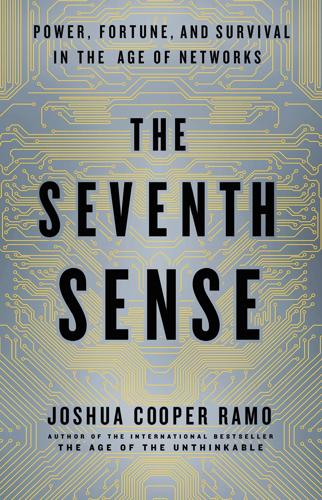
The Seventh Sense: Power, Fortune, and Survival in the Age of Networks
by
Joshua Cooper Ramo
Published 16 May 2016
The human was still doing the thinking; the computer was simply computing. It was extremely easy to draw a line between where the biological ended and the digital commenced. This was a puzzle that had been, in a sense, anticipated at the very dawn of the digital revolution by the mathematician Alan Turing in a paper called “Computing Machinery and Intelligence,” which he published in 1950. “Can machines think?” Turing began. His idea was to test this question in the following way: Have a research subject—a secretary, a graduate student, anyone—chat with an invisible interlocutor by way of a keyboard. Then ask, What are you connected to? Another human?
…
“Poetry mustn’t be taken seriously as a serious thing laying hold of truth,” Socrates warns, “but that the man who hears it must be careful, fearing for the regime in himself.” Thus: Hesiod’s magnificent Works and Days, banned. Homer, banned. There has always been about poetry this sense of the magical, this sense that it is a key to something intimately bound to the human mystery. It was no surprise to me to find, when I went back to reread Turing’s “Computing Machinery and Intelligence,” that the very first thing the great mathematician dreamed up to ask a digital brain was “Write me a sonnet.” Socrates and Plato gatekeep the poets out of their republic because they know the mad part of the soul that verse can touch. It is hard to blame them. After all, they were among the earliest Western minds to try to dispel madness and superstition and sophistry.
…
The essential facilitating feature: Nathalie Mezza-Garcia, Tom Froese, and Nelson Fernández, “Reflections on the Complexity of Ancient Social Heterarchies: Toward New Models of Social Self-Organization in Pre-Hispanic Colombia,” Journal of Sociocybernetics 12 (2014): 3–17. Chapter 11. CITIZENS! “Can machines think”: A. M. Turing, “Computing Machinery and Intelligence,” Mind 59, no. 236 (October 1950): 433. The AI systems designer: Roger Grosse, “Predictive Learning vs. Representation Learning,” Building Intelligent Probabilistic Systems (blog), February 4, 2013. Wouldn’t it be nice: Andrej Karpathy, “The Unreasonable Effectiveness of Recurrent Neural Networks,” The Hacker’s Guide to Neural Networks (blog), May 21, 2015; John Supko, “How I Taught My Computer to Write Its Own Music,” Nautilus 21 (February 12, 2015); Daniel Johnson, “Composing Music with Recurrent Neural Networks,” Hexahedria (blog), August 3, 2015.

Artificial Intelligence: A Guide for Thinking Humans
by
Melanie Mitchell
Published 14 Oct 2019
For Searle, the strong AI claim would be that “the appropriately programmed digital computer does not just simulate having a mind; it literally has a mind.”13 In contrast, in Searle’s terminology, weak AI views computers as tools to simulate human intelligence and does not make any claims about them “literally” having a mind.14 We’re back to the philosophical question I was discussing with my mother: Is there a difference between “simulating a mind” and “literally having a mind”? Like my mother, Searle believes there is a fundamental difference, and he argued that strong AI is impossible even in principle.15 The Turing Test Searle’s article was spurred in part by Alan Turing’s 1950 paper, “Computing Machinery and Intelligence,” which had proposed a way to cut through the Gordian knot of “simulated” versus “actual” intelligence. Declaring that “the original question ‘Can a machine think?’ is too meaningless to deserve discussion,” Turing proposed an operational method to give it meaning. In his “imitation game,” now called the Turing test, there are two contestants: a computer and a human.
…
Lorica, “What Is Artificial Intelligence?,” O’Reilly, June 20, 2016, www.oreilly.com/ideas/what-is-artificial-intelligence. 10. S. Pinker, “Thinking Does Not Imply Subjugating,” in What to Think About Machines That Think, ed. J. Brockman (New York: Harper Perennial, 2015), 5–8. 11. A. M. Turing, “Computing Machinery and Intelligence,” Mind 59, no. 236 (1950): 433–60. 12. J. R. Searle, “Minds, Brains, and Programs,” Behavioral and Brain Sciences 3, no. 3 (1980): 417–24. 13. J. R. Searle, Mind: A Brief Introduction (Oxford: Oxford University Press, 2004), 66. 14. The terms strong AI and weak AI have also been used to mean something more like general AI and narrow AI.
…
This harks back to what Alan Turing called “Lady Lovelace’s objection,” named for Lady Ada Lovelace, a British mathematician and writer who worked with Charles Babbage on developing the Analytical Engine, a nineteenth-century proposal for a (never completed) programmable computer. Turing quotes from Lady Lovelace’s writings: “The Analytical Engine has no pretensions to originate anything. It can do whatever we know how to order it to perform.” A. M. Turing, “Computing Machinery and Intelligence,” Mind 59, no. 236 (1950): 433–60. 7. Karl Sims website, accessed Dec. 18, 2018, www.karlsims.com. 8. D. Cope, Virtual Music: Computer Synthesis of Musical Style (Cambridge, Mass.: MIT Press, 2004). 9. Quoted in G. Johnson, “Undiscovered Bach? No, a Computer Wrote It,” New York Times, Nov. 11, 1997. 10.
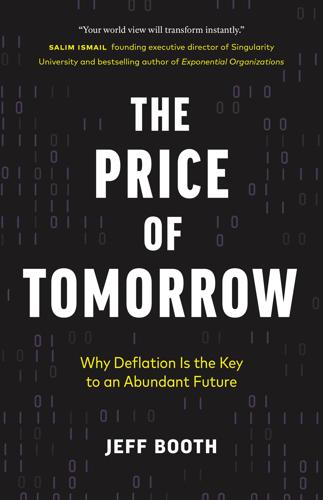
The Price of Tomorrow: Why Deflation Is the Key to an Abundant Future
by
Jeff Booth
Published 14 Jan 2020
But he was also an early believer that the human brain was in large part a digital computing machine, and therefore that computers could be made to have intelligence—to think. In 1950, he published a paper titled “Computing Machinery and Intelligence” where he proposed a test called the imitation game, now commonly referred to as the Turing test. In the test, a human evaluator would have a conversation with two others, one being a machine and one a human, and the test would be passed when the human evaluator could not distinguish between the human and machine—in short, when humans can’t distinguish artificial from real intelligence. Around the same time that Turing was publishing “Computing Machinery and Intelligence,” another eminent thinker named Claude Shannon (1916–2001) was breaking barriers that enabled many of the advances in computers and artificial intelligence that we now take for granted.
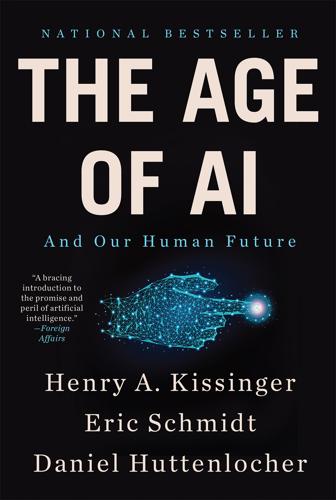
The Age of AI: And Our Human Future
by
Henry A Kissinger
,
Eric Schmidt
and
Daniel Huttenlocher
Published 2 Nov 2021
CHAPTER 3 FROM TURING TO TODAY—AND BEYOND IN 1943, WHEN researchers created the first modern computer—electronic, digital, and programmable—their achievement gave new urgency to intriguing questions: Can machines think? Are they intelligent? Could they become intelligent? Such questions seemed particularly perplexing given long-standing dilemmas about the nature of intelligence. In 1950, mathematician and code breaker Alan Turing offered a solution. In a paper unassumingly titled “Computing Machinery and Intelligence,” Turing suggested setting aside the problem of machine intelligence entirely. What mattered, Turing posited, was not the mechanism but the manifestation of intelligence. Because the inner lives of other beings remain unknowable, he explained, our sole means of measuring intelligence should be external behavior.
…
Ludwig Wittgenstein, Philosophical Investigations, trans. G. E. M. Anscombe (Oxford, UK: Basil Blackwell, 1958), 32–34. 16. See Eric Schmidt and Jared Cohen, The New Digital Age: Reshaping the Future of People, Nations, and Business (New York: Alfred A. Knopf, 2013). CHAPTER 3 1. Alan Turing, “Computing Machinery and Intelligence,” Mind 59, no. 236 (October 1950), 433–460, reprinted in B. Jack Copeland, ed., The Essential Turing: Seminal Writings in Computing, Logic, Philosophy, Artificial Intelligence, and Artificial Life Plus the Secrets of Enigma (Oxford, UK: Oxford University Press, 2004), 441–464. 2. Specifically, a Monte Carlo tree search of future moves enabled or foreclosed. 3.
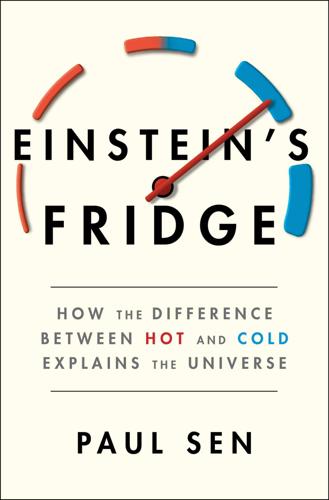
Einstein's Fridge: How the Difference Between Hot and Cold Explains the Universe
by
Paul Sen
Published 16 Mar 2021
But Baby and its successors pioneered concepts such as random-access memory (RAM) that are essential to all modern computers. Turing played a crucial role by testing these machines’ capabilities by running ever-more-complex software on them. Inspired by this firsthand experience of the world’s first computers, in 1950 Turing wrote a now-famous paper in the philosophy journal Mind entitled “Computing Machinery and Intelligence.” In it he presented a series of arguments in favor of the idea that machines would one day be able to think as well as or even better than humans. In this paper he introduced “the imitation game,” the idea that if a computer provides answers that are indistinguishable from those that a human might provide to a given series of questions, the computer should for all intents and purposes be treated as human.
…
The head of the daisy: See “The Mathematical Daisy” by Robert Dixon, New Scientist, December 17, 1981. Turing played a crucial role: See chapter 6 of Turing Guide by Copeland; chapter 9 of The Essential Turing by B. Jack Copeland; and Manchester University website http://curation.cs.manchester.ac.uk/computer50/www.computer50.org/mark1/new.baby.html. “Computing Machinery and Intelligence”: The article first appeared in Mind 59 (1950). “The Chemical Basis of Morphogenesis”: The article first appeared in Philosophical Transactions of the Royal Society of London, Series B 237 (1952–54). Turing considered it his best work: See an unpublished short story by Turing at the Turing Digital Archive, maintained by King’s College Cambridge, ref.
…
See also telephone systems link between thermodynamics and, 167 Shannon’s experience with, 170, 174 SIGSALY encryption in, 173–74, 202 Turing’s experience with, 206 compression, in data networks, 182 compressors, in refrigeration, 112, 164–65 computers IBM’s changes over time to, 193 mathematical calculations using, 171 Shannon’s experience with, 171, 172 thermodynamic cost of a bit in, 194–97 transistors and heat generation by, 184–85, 193, 195 Turing’s analysis of pattern formation in morphogenesis and, 209–10, 212 Turing’s paper on intelligence and, 204–5 Turing’s Universal Machine and, 201, 204 “Computing Machinery and Intelligence” (Turing), 204–5 conduction, in heat flow, 133, 137 conservation of energy. See also first law of thermodynamics Clausius’s thought experiment using ideal engine and refrigerator and, 55–58, 253 Einstein’s E = mc2 equation on, x, 152–54 Helmholtz’s tract on Kraft and, 47–49, 51–52, 106, 154 Joule’s research and, 28, 30, 154 Noether’s theorem on, 157–59 symmetry and, 159 Thomson’s paper on, 59–60 Conservatory of Arts and Crafts, Paris, 6, 7, 8, 9 convection, in heat flow, 133, 137 coolants, in refrigeration, 111–12, 162, 163, 164, 165 Copenhagen group, 160 cosmic microwave background radiation, 158 cotton-manufacturing industry, 2, 23–24 creation of universe Boltzmann brain theory and, 130 Boltzmann’s creation moment in, 126, 127–30 random fluctuation hypothesis on, 129–30 cryptography, 169, 203 Shannon’s early experience with, 170 Turing’s reputation in, 173–74, 202–4 Dalton, John, 24 Dancer, John Benjamin, 30 dark reaction, in photosynthesis, 122–23 Darwin, Charles, 70–73, 107 age of earth and evolution by natural selection theory of, 70–71 reaction to Thomson’s objection to, 72 Thomson’s critiques of, 71–72, 73 data networks, file compression and digital redundancy in, 182 “Decrease of Entropy by Intelligent Beings, The” (Szilard), 190, 192 De l’Angleterre et des Anglais (Say), 5 Despretz, César-Mansuète, 44–45 developmental biology Turing’s contribution to, 200–201, 217 Turing’s morphogenesis paper and, 205–11, 215–16, 217 Dewar, Daniel, 84 Diesel, Rudolf, 20, 111 diffusion, in morphogenesis, 206, 209, 215 digital age processing of information in, 185 redundancy in file compression in, 182 dissipation of heat, Thompson’s paper on, 59–61 Drunkard’s Walk formula, 150 Dulong, Pierre Louis, 44–45 duty in steam engines Carnot’s theory on, 12 Newcomen engines and, 4, 10 earth age of.
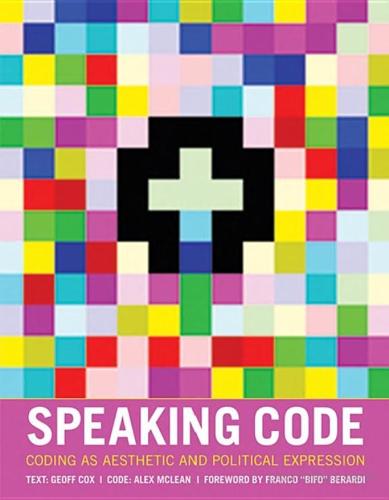
Speaking Code: Coding as Aesthetic and Political Expression
by
Geoff Cox
and
Alex McLean
Published 9 Nov 2012
At the same Vocable Code 31 time, natural-language processing programs and other chatterbots offer good examples of the speechlike procedures mentioned thus far, as well as the apparent impossibility of duplicating actual speech. Intelligence To demonstrate believability, a machine would be required to possess some kind of intelligence that reflects the capacity for human reasoning, in parallel to turning mere voice sounds into proper speech that expresses human gentility. In a paper of 1950, “Computing Machinery and Intelligence,” Alan Turing made the claim that computers would be capable of imitating human intelligence, or more precisely the human capacity for rational thinking. He set out what become commonly known as the “Turing test” to examine whether a machine is able to respond convincingly to an input with an output similar to a human’s.48 The contemporary equivalent, CAPTCHA (Completely Automated Public Turing test to tell Computers and Humans Apart), turns this idea around, so that the software has to decide whether it is dealing with a human or a script.49 Perhaps it is the lack of speech that makes this software appear crude by comparison, as human intelligence continues to be associated with speech as a marker of reasoned semantic processing.
…
See Wikipedia entry, available at http://en.wikipedia.org/wiki/Wolfgang_von_Kempelen% 27s_Speaking_Machine. 43. Rée, I See a Voice, 258. 44. Ong, Orality and Literacy, 86. 45. See http://www.omniglot.com/writing/korean.htm. 46. Rée, I See a Voice, 262. 47. George Bernard Shaw, Pygmalion (1916). Also see Ovid’s Metamorphoses, book X. 48. Alan Turing, “Computing Machinery and Intelligence” (1950), in Noah Wardrip-Fruin and Nick Montfort, eds., The New Media Reader (Cambridge, MA: MIT Press, 2003), 49–64. 49. See http://www.captcha.net/. 50. John R. Searle, “Minds, Brains, and Programs,” Behavioral and Brain Sciences 3 (1980): 417. 51. Ibid., 418. 52. Diane Proudfoot, “Wittgenstein’s Anticipation of the Chinese Room,” in John Preston and Mark Bishop, eds., Views into the Chinese Room: New Essays on Searle and Artificial Intelligence (Oxford: Clarendon Press, 2002), 168. 53.
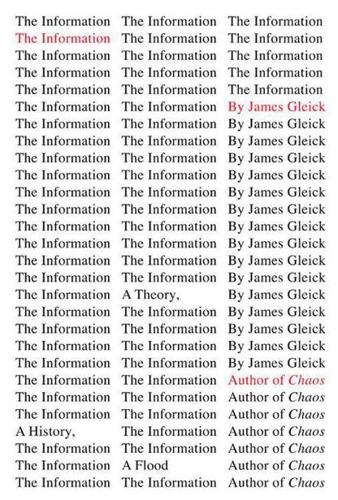
The Information: A History, a Theory, a Flood
by
James Gleick
Published 1 Mar 2011
♦ “A BRAIN CONSISTING OF RANDOMLY CONNECTED IMPRESSIONAL SYNAPSES”: Ibid., 110. ♦ “THINK OF THE BRAIN AS A TELEGRAPHIC RELAY”: “Brain and Behavior,” Comparative Psychology Monograph, Series 103 (1950), in Warren S. McCulloch, Embodiments of Mind (Cambridge, Mass.: MIT Press, 1965), 307. ♦ “I PROPOSE TO CONSIDER THE QUESTION”: Alan M. Turing, “Computing Machinery and Intelligence,” Minds and Machines 59, no. 236 (1950): 433–60. ♦ “THE PRESENT INTEREST IN ‘THINKING MACHINES’ ”: Ibid., 436. ♦ “SINCE BABBAGE’S MACHINE WAS NOT ELECTRICAL”: Ibid., 439. ♦ “IN THE CASE THAT THE FORMULA IS NEITHER PROVABLE NOR DISPROVABLE”: Alan M. Turing, “Intelligent Machinery, A Heretical Theory,” unpublished lecture, c. 1951, in Stuart M.
…
Turing, “Intelligent Machinery, A Heretical Theory,” unpublished lecture, c. 1951, in Stuart M. Shieber, ed., The Turing Test: Verbal Behavior as the Hallmark of Intelligence (Cambridge, Mass.: MIT Press, 2004), 105. ♦ THE ORIGINAL QUESTION, “CAN MACHINES THINK?”: Alan M. Turing, “Computing Machinery and Intelligence,” 442. ♦ “THE IDEA OF A MACHINE THINKING”: Claude Shannon to C. Jones, 16 June 1952, Manuscript Div., Library of Congress, by permission of Mary E. Shannon. ♦ “PSYCHOLOGIE IS A DOCTRINE WHICH SEARCHES OUT”: Translated in William Harvey, Anatomical Exercises Concerning the Motion of the Heart and Blood (London, 1653), quoted in “psychology, n,” draft revision Dec. 2009, OED Online, Oxford University Press, http://dictionary.oed.com/cgi/entry/50191636
…
♦ “IN TURNING OUR VIEWS”: Charles Babbage, The Ninth Bridgewater Treatise, 44. ♦ “THE ART OF PHOTOGENIC DRAWING”: Nathaniel Parker Willis, “The Pencil of Nature: A New Discovery,” The Corsair 1, no. 5 (April 1839): 72. ♦ “IN FACT, THERE IS A GREAT ALBUM OF BABEL”: Ibid., 71. ♦ “THE SYSTEM OF THE ‘UNIVERSE AS A WHOLE’ ”: Alan M. Turing, “Computing Machinery and Intelligence,” Minds and Machines 59, no. 236 (1950): 440. ♦ “SUCH A BLAZE OF KNOWLEDGE AND DISCOVERY”: H. G. Wells, A Short History of the World (San Diego: Book Tree, 2000), 97. ♦ “THE ROMANS BURNT THE BOOKS OF THE JEWS”: Isaac Disraeli, Curiosities of Literature (London: Routledge & Sons, 1893), 17

The Secret War Between Downloading and Uploading: Tales of the Computer as Culture Machine
by
Peter Lunenfeld
Published 31 Mar 2011
This trifle, inspired at least in part by the renown of Christopher’s uncle Lytton Strachey’s 1918 portrait of a generation, Eminent Victorians, is the product of a stored program computer, and as such may well be the first aesthetic object produced by the ancestors of the culture machine. The love letter generator’s intentional blurring of the boundary between human and nonhuman is directly related to one of the foundational memes of artificial intelligence: the still-provocative Turing Test. In “Computing Machinery and Intelligence,” a seminal paper from 1950, Turing created a thought experiment. He posited a person holding a textual conversation on any topic with an unseen correspondent. If the person believes he or she is communicating with another person, but is in reality conversing with a machine, then that machine has passed the Turing Test.
…
All hyperlinks current as of October 1, 2010 197 INDEX Adobe Systems, 55 Adstar, 177 Advanced Research Projects Agency (ARPA), 152, 158 Advertisement, 184nn12,15 bespoke futures and, 107 culture machine and, 175–177 stickiness and, 23, 31 unimodernism and, 52, 57, 59 Affordances, 183n4 bespoke futures and, 121, 124, 129, 136 stickiness and, 16–17, 24, 28–35 unimodernism and, 68, 75 Web n.0 and, 80–82, 90 Afghanistan, 100 African National Congress, 113 AfterSherrieLevine.com, 41–42 Agee, James, 40–42 Age of Aquarius, 159 Agribusiness, 4, 10 Airplanes, xiii Alessi, 64 Algorithms, 46, 144, 174–177 Allen, Paul, 164 “All You Need Is Love” (Beatles), 62 Al-Muhajiroun, 134 Al-Qaeda, 134 Altair personal computer, 161, 164 Alto personal computer, 162 Amazing Stories (comic book), 108–110 Amazon, 68, 99, 145 Amis, Kinsley, 32 Animation, 55–56, 58, 110, 118 Antiglobalization activists, 98 AOL, 9, 53, 99 Apartheid, 112–113 Apple, 144, 163–167, 172, 186n12 Appropriate scale, 57 Aquarians, 24, 152, 159, 168–169 description of term, xv Engelbart and, 144, 157–167 Kay and, 144, 157, 160–167, 195nn16,17 Nelson and, 168 networked computers and, xv Sutherland and, 160–161 Arcades, 15, 71 Architectural Forum magazine, 84 Ariadne, 11 Arnold, Matthew, 14 Ars Electronica, 169–170 Art nouveau, 44, 66 “As We May Think” (Bush), 149, 157 AT&T, 144, 195n10 Atari, 165 Atlantic Monthly, 149 Atomic age, 146 as catalyst, xi Cuban Missile Crisis and, xi description of, xv emergence of, xi–xii 198 Atomic age (continued) Hiroshima and, 100–101 Manhattan Project and, 150 mutually assured destruction and, xi terrorism and, 100–101 Avant-gardism, 31, 44, 61, 117–120, 133 Babbage, Charles, 149 Bakri Muhammad, Omar, 134–135 Bali, 100 Ballmer, Steve, 164 Balzac, Honoré de, 44 Banham, Reyner, 10 Barr, Alfred, 117–118 Bauhaus, 117 BBC, 10 Beatles, 54–55, 62 Bebop, 25–27 Beirut, Michael, 102 Bellamy, Edward, 108 Benjamin, Walter, 88 Berg, Alban, 45 Berlin Wall, xvi, 85, 97, 99, 104 Bernays, Edward L., 123–124 Berners-Lee, Tim, 144, 167–169, 175 Bespoke futures adopting future as client and, 110–113 anticipated technology and, 108–110 crafting, 113–116 design and, 102, 105–106, 110–111, 115–116, 119–120, 124–125, 137 downloading and, 97, 123, 132, 138 dynamic equilibrium and, 117–120 89/11 and, xvi, 97, 100–102, 105, 130 Enlightenment and, xvi, 129–139 information and, 98, 100–101, 124–126 lack of vision and, 106–108 markets and, 97–104, 118, 120, 127, 131–132, 137–138 MaSAI (Massively Synchronous Applications of the Imagination) and, xvi, 112, 120–123, 127, 193n32 199 modernists and, 105–108 mutants and, 105–108 networks and, 98–101, 108, 112–113, 116, 119–126, 133, 137 New Economy and, 97, 99, 104, 131, 138, 144–145, 190n3 participation and, 98–99, 120–121, 129 plutopian meliorism and, xvi, 127–129, 133, 137–138 prosumers and, 120–121 reperceiving and, 112–113 R-PR (Really Public Relations) and, 123–127 scenario planning and, 111–119, 191n19, 192n20 simulation and, 98, 121, 124, 126–127 strange attractors and, xvi, 117–120, 192n27 technology and, 98–104, 107–113, 116, 119, 125–127, 131–133, 136–139 television and, 101, 108, 124, 127–129, 133–137 unfinish and, 127–129, 136 uploading and, 97, 120–123, 128–129, 132 Best use, 10, 13–15, 138 Bezos, Jeff, 145 Bible, 28, 137 BitTorrent, 92 Black Album, The (Jay Z), 55 Blade Runner (Scott), 107 Blogger, 177 Blogosphere, xvii bespoke futures and, 101 culture machine and, 175, 177 Facebook and, 81, 145, 180n2 stickiness and, 30, 34 Twitter and, 34, 180n2 unimodernism and, 49, 68 Web n.0 and, 80, 92–93 INDEX Bohème, La (Puccini), 61 Boing Boing magazine, 68–69 Bollywood, 62 Bourgeoisie, 31 Bowie, David, 62 Braque, Georges, 93 Breuer, Marcel, 45 Brillat-Savarin, Jean Anthèlme, 3 Brin, Sergey, 144, 174–176 Broadband technology, 9, 57 Brownian motion, 49 Burroughs, Allie Mae, 40–42 Burroughs, William, 52 Bush, Vannevar, 52, 194n6 culture machine and, 144, 147–152, 157 Engelbart and, 157 Memex and, 108, 149–151 Oppenheimer and, 150 systems theory and, 151 war effort and, 150–151 Business 2.0 magazine, 145 C3I , 146–147 Cabrini Green, 85 Calypso, 25–27 Cambodia, 107 Cambridge, 17, 36 “Can-Can” (“Orpheus in the Underworld”) (Offenbach), 62 Capitalism, 4, 13 bespoke futures and, 97–100, 103–105 Sears and, 103–105 stickiness and, 13 unimodernism and, 66, 75 Web n.0 and, 90 Capitulationism, 7, 24, 30, 182n1 Carnegie, Andrew, 166 Casablanca (film), 90 Cassette tapes, 2 CATIA 3–D software, 39 Cell phones, xiii, xvii, 17, 23, 42, 53, 56, 76, 101 Chaos theory, 117–120 Chaplin, Charlie, 45 Cheney, Dick, 99 China, 104, 107 Christians, 135 Cicero, 47 Cinema, 8, 10 micro, 56–60 stickiness and, 15 unimodernism and, 47, 52, 56–60, 63, 71 Clarke, Arthur C., 174 CNN, 58 Cobain, Kurt, 62 Code breaking, 17–18 Cold war, 101 Cole, Nat King, 62 Commercial culture, 4–5, 8 bespoke futures and, 98, 102, 108, 120, 132–134 culture machine and, 153–156, 167, 170, 172, 175–177 copyright and, 54, 88–95, 123, 164, 166, 173, 177 Mickey Mouse Protection Act and, 90 open source and, 36, 61, 69, 74–75, 91–92, 116, 121–126, 144, 170– 173, 177, 189n12 propaganda and, 124 scenario planning and, 111–119 stickiness and, 23, 28–31, 37 unimodernism and, 41, 69 Web n.0 and, 82–86 Commercial syndrome, 85–86 Communism, 97–98, 103 Compact discs (CDs), 2, 48, 53 Complex City (Simon), 39 “Computable Numbers, On” (Turing), 18 Computer Data Systems, 145 Computers, xi. See also specific model 200 INDEX Warriors and, 146–147 World War II and, 146 “Computing Machinery and Intelligence” (Turing), 19 Conran Shop, 46 Constructivism, 117 Consumption, 1 balance and, 13 best use and, 13–14 capitalism and, 4, 66, 75, 97–100, 104–105 commercial networks and, 4–5 cultural diabetes and, 3–5 patio potato and, 9–10, 13 personal, 35 production and, 13 Slow Food and, 5–7 supersizing and, 3–4 take-home, 3 television and, 8–9 viral distribution and, 30, 56, 169 wants vs. needs and, 4, 13, 37, 57 Continuous partial attention, 34 Conversation, 13 Copyleft, 91 Copyright bespoke futures and, 123 development of computer and, 164, 166, 173, 177 Mickey Mouse Protection Act and, 90 open source and, 36, 61, 69, 74–75, 91–92, 116, 121–126, 144, 170– 173, 177, 189n12 public domain and, 91 unimodernism and, 54 U.S.

Thinking Machines: The Inside Story of Artificial Intelligence and Our Race to Build the Future
by
Luke Dormehl
Published 10 Aug 2016
‘And it is highly unlikely without a yet-undiscovered novel approach to simulating an AI that any chatbot technology employed today could ever fool an experienced chatbot creator into believing they possess [artificial] general intelligence.’ Turing wasn’t particularly concerned with the metaphysical question of whether a machine can actually think. In his famous 1950 essay, ‘Computing Machinery and Intelligence’, he described it as ‘too meaningless to deserve discussion’. Instead he was interested in getting machines to perform activities that would be considered intelligent if they were carried out by a human. It is this idea that the MIT psychoanalyst and computer researcher Sherry Turkle talks about when she says that we should take computers at ‘interface value’.
…
page_id=1438 17 Vincent, James, ‘Google Contact Lenses: Tech Giant Licenses Smart Contact Lens Technology to Help Diabetics and Glasses Wearers’, Independent, 15 July 2014: independent.co.uk/life-style/gadgets-and-tech/google-licenses-smart-contact-lens-technology-to-help-diabetics-and-glasses-wearers-9607368.html 18 https://www.fitbit.com/content/assets/wellness/FitbitWellness_InfoSheet.pdf 19 Olson, Parmy and Tilley, Aaron, ‘The Quantified Other: Nest and Fitbit Chase a Lucrative Side Business’, Forbes, 5 May 2014: forbes.com/sites/parmyolson/2014/04/17/the-quantified-other-nest-and-fitbit-chase-a-lucrative-side-business/#6c5408e15403 20 Dormehl, Luke, ‘This Algorithm Predicts a Neighborhood’s Crime Rate Using Google Street View’, Fast Company, 6 October 2014: fastcolabs.com/3036677/this-algorithm-knows-your-neighborhood-better-than-you-do Chapter 4: How May I Serve You? 1 Sundman, John, ‘Artificial Stupidity’, Salon, 26 February 2003: salon.com/2003/02/26/loebner_part_one/ 2 Turing, Alan, ‘Computing Machinery and Intelligence’, 1950: csee.umbc.edu/courses/471/papers/turing.pdf 3 Lee, Dave, ‘Tay: Microsoft issues apology over racist chatbot fiasco,’ BBC News, 25 March 2016: bbc.co.uk/news/technology-35902104 4 facebook.com/zuck/posts/10102577175875681 5 Isaacson, Walter, Steve Jobs (New York: Simon & Schuster, 2011). 6 Remarkably, John Sculley’s prediction for the arrival of a Siri-like AI assistant was correct right down to the month it first shipped with the iPhone 4s. 7 Keenan, Thomas, Technocreep: The Surrender of Privacy and the Capitalization of Intimacy (Vancouver: Greystone Books, 2014). 8 oddisgood.com/pages/cd-clippy.html 9 Wilcox, Joe, ‘Microsoft Tool “Clippy” Gets Pink Slip’, CNET, 2 January 2002: news.cnet.com/2100-1001-255671.html 10 Wasserman, Todd, ‘Wozniak: Siri Was Better Before Apple Bought It’, Mashable UK, 15 June 2012: mashable.com/2012/06/15/wozniak-on-siri/#W9rFoovbVaqT 11 Wortham, Jenna, ‘Will Google’s Personal Assistant Be Creepy or Cool?’

12 Bytes: How We Got Here. Where We Might Go Next
by
Jeanette Winterson
Published 15 Mar 2021
Turing, with his famous Turing Test, believed that a machine would, one day, prove indistinguishable from human intelligence. He believed that day would come sooner than it has done – he suggested the year 2000 – but he was sure that a machine could display human-level interpersonal skills. Minsky credited his own enthusiasm for developing an AI system that can think for itself to Turing’s 1950 paper Computing Machinery and Intelligence. Read it now, and to me the most interesting part of a fascinating paper that includes telepathy and hive-mind networking is what Turing called Lady Lovelace’s Objection – replying directly to the dead genius who 100 years earlier had concluded that Babbage’s Analytical Engine, while being theoretically able to write novels and compose music (a big insight in 1843!)
…
Anyway, it’s v good.) Gnostic Know-How The Society of Mind, Marvin Minsky, 1986 2001: A Space Odyssey, Arthur C. Clarke, 1968 Probability and the Weighing of Evidence, I. J. Good, 1950 Our Final Invention: Artificial Intelligence and the End of the Human Era, James Barrat, 2013 ‘Computing Machinery and Intelligence’ (article), Alan Turing, 1950 The Gnostic Gospels, Elaine Pagels, 1979 The Nag Hammadi Scriptures, edited by Marvin W. Meyer, 2007 Mysterium Coniunctionis, Carl Jung, 1955 On the Origin of Species, Charles Darwin, 1859 The Odyssey, Homer He Ain’t Heavy, He’s My Buddha An Introduction to Cybernetics, W.

The Future of the Professions: How Technology Will Transform the Work of Human Experts
by
Richard Susskind
and
Daniel Susskind
Published 24 Aug 2015
In summary, we suggest that it should indeed be feasible to make some practical expertise available on a commons basis, and this need not require the elaborate or extensive granting of exclusivity to future providers. Lurking behind this conclusion and much that we say throughout this chapter is our clear preference for what we call the ‘liberation’ of expertise. In the remainder of the book, we explain why we take this position. 1 Three influential publications are Alan Turing, ‘Computing Machinery and Intelligence’, Mind, 59: 236 (1950), 433–60; Margaret Boden, Artificial Intelligence and Natural Man (1977); and Douglas Hoftstadter and Daniel Dennett (eds.), The Mind’s I (1982). The term ‘artificial intelligence’ was coined by John McCarthy in 1955. 2 John Searle, ‘Watson Doesn’t Know It Won on “Jeopardy!”’
…
Also relevant is the Human Brain Project at <https://www.humanbrainproject.eu/en_GB> (accessed 23 March 2015). 10 Quoted in Searle, Minds, Brains and Science, 30. 11 For a discussion of relevant science-fiction work, see Jon Bing, ‘The Riddle of the Robots’, Journal of International Commercial Law and Technology, 3: 3 (2008), 197–206. 12 Nick Bostrom, Superintelligence (2014). 13 See Turing, ‘Computing Machinery and Intelligence’. In 2014 it was claimed by researchers at Reading University that their computer program had passed the Turing Test by convincing judges it was a 13-year-old boy. See Izabella Kaminska, ‘More Work to Do on the Turing Test’, Financial Times, 13 June 2014 <http://www.ft.com> (accessed 23 March 2015). 14 See Richard P.
…
Topol, Eric, The Patient Will See You Now (New York: Basic Books, 2015). Trefis Team, ‘eBay: The Year 2013 in Review’, 26 Dec. 2013 <http://www.forbes.com/sites/greatspeculations/2013/12/26/ebay-the-year-2013-in-review/> (accessed 24 March 2015). Tuck, Richard, Free Riding (Cambridge, Mass.: Harvard University Press, 2008). Turing, Alan, ‘Computing Machinery and Intelligence’, Mind, 59: 236 (1950), 433–60. Turkle, Sherry, Alone Together (New York: Basic Books, 2011). Tversky, Amos, and Daniel Kahneman, ‘Judgment under Uncertainty: Heuristics and Biases’, Science, 185: 4157 (1974), 1124–31. Twilley, Nicola, ‘Artificial Intelligence Goes to the Arcade’, New Yorker, 25 Feb. 2015.
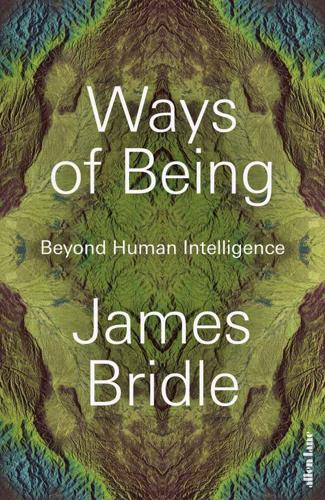
Ways of Being: Beyond Human Intelligence
by
James Bridle
Published 6 Apr 2022
This error infects all our reckonings with artificial intelligence. For example, despite never being used by serious AI researchers, the Turing Test remains the most widely understood way of thinking about the capabilities of AI in the public consciousness. It was proposed by Alan Turing in a 1950 paper, ‘Computing Machinery and Intelligence’. Turing thought that instead of questioning whether computers were truly intelligent, we could at least establish that they appeared intelligent. Turing called his method for doing this ‘the imitation game’: he imagined a set-up in which an interviewer interrogated two hidden interlocutors – one human, one machine – and tried to tell which was which.
…
The creation of these images was supported by Nome Gallery, as part of Failing to Distinguish Between a Tractor Trailer and the Bright White Sky, an exhibition held in Berlin, April–July 2017. For more on the exhibition, visit https://nomegallery.com/exhibitions/failing-to-distinguish-between-a-tractor-trailer-and-the-bright-white-sky/. 5. A. M. Turing, ‘Computing Machinery and Intelligence’, Mind, 49 (1950), pp. 433–60. 6. H. F. Harlow, H. Uehling and A. H. Maslow, ‘Comparative Behavior of Primates. I. Delayed Reaction Tests on Primates from the Lemur to the Orang-Outan’, Journal of Comparative Psychology, 13(3) (1932), pp. 313–43. In the original study, all the apes have familiar as well as scientific names, some of dubious provenance.
…
Ross 181–3, 185 aspens 77 astrobiology 87 atomic bomb 224–5 Augustin, Regynald 156 Australopithecus 88 Author of the Acacia Seeds, The 169–71 automatic machine see Turing machine Autonomous Trap 26–7, 26, 204 autonomous vehicles 23–6, 65, 275 avocados 108 Babbage, Charles 30 baboons 32, 52–55, 64, 74 bacteria 17, 87–8, 104–10, 236–7, 248, 300 badgers 291 Barabási, Albert-László 81 Barad, Karen 84–6, 130, 249 Basilicata 138, 140–43 bears 1, 89–90, 92, 266, 290–91, 293–4 beavers 256 BeeAdHoc (computer programme) 262 beech 125, 142 Beer, Stafford 184–91, 211, 214–15, 230 bees 145, 187, 258–62 Bergson, Henri 279 Berners-Lee, Tim 81 birch 60, 118, 124, 138, 279 Black Language 168 Black Lives Matter 155 Blake, William 16 Blas, Zach 208 Boeing X-37 136 Bonner, John Tyler 238–9 bonobos 37, 50, 98 Boran (people) 146 Bornmuellera tymphaea 309 Boulez, Pierre 229 Boulle, Marcellin 90 Bouvet, Joachim 234 bow-wow theory 148 Brainfuck (programming language) 161–2 Brassica juncea 310 Bruniquel cave 92 buen vivir 268 cacti 64, 235, 294 Cage, John 227–35, 241, 242, 312 Cambridge Analytica 155 cantu a tenòre 148 capuchin monkeys 163 Caputo, Francesco 143 Caputo, Matteo 143 caribou 120 Carrol, Lewis 180 Carson, Rachel 12, 15 Castro, Eduardo Viveiros de 18 caterpillars 65 Cecilia (chimpanzee) 265 cedars 138 cephalopods 47–51 CERN 81 Charlotte (gibbon) 32 Chassenée, Bartholomew 252 Chaucer, Geoffrey 152 Chernobyl 293 Chesapeake Bay Model 202, 203, 204 chestnuts 61, 118 Children of Time 49 chimpanzees 36–37, 50, 55–6, 88, 98, 145 choice machine see oracle machine Christ Stopped at Eboli 140 Christmas Island 293, 295 Chua, Leon O. 194 Chucho (bear) 266 Churchill, Winston 18 Citizens’ Assembly 243–5 Clarke, Arthur C. 158 climate change 5–6, 121–4, 242–5, 282, 301–2 climate modelling 78–9 Cloud (computing) 111–12, 158–9 Cochran, William 285, 297 cockatoos 163 Cockroach Controlled Mobile Robot see Roachbot cockroaches 212, 258 cognitive diversity 246–8 Colossus (computer) 220 ‘Computing Machinery and Intelligence’ 29 Conway’s Game of Life 161 corn 75 Corraro, Rosina 143 cougars 290 Covid-19 114 cows 140, 143, 149, 265, 302 crabs 48, 195–7, 256, 293, 293–5, 293, 307, 312 cuckoos 118 cuttlefish 47, 49 Cybernetic Factory 185, 186, 189–90 Cybernetic Serendipity 231 cybernetics 181–90, 214 Dallol see Danakil Depression Danakil Depression 86–8, 104 Daphnia 188–9, 191, 198 Darwin, Charles 12, 34–6, 72, 89, 127–30, 129, 235, 239 Darwin, Francis 127–30, 129 De Anima 122 de Martino, Ernesto 141–2 de Waal, Frans 39 Debord, Guy 24 decentralization 49, 208–10, 213, 280 DeepMind 8, 275 deer 65, 77, 258, 290–93, 298–9, 299 Delphi 174, 177 demilitarized zone (DMZ) 292 Denisova Cave 96 denisovans 96–8, 100 Denny (denisovan) 97, 100 Descartes, René 16 Descent of Man, The 36 Dimkaroski, Ljubem 90 ding-dong theory 147 Dinkinesh (Australopithecus) 88 distributed computing 209 Divje Babe 90–91, 91 DNA 95–7, 103–7 dodder vine 75 dogs 147–8, 163, 302 spinal dog 184, 212 Dolphin Embassy 165–6, 165 dolphins 37–8, 41–2, 145, 166, 170, 263, 286 Doolittle, Ford 109–10 Duchamp, Marcel 128–31, 129 ducks 256 earthquakes 302–3 Ebonics 168 EDVAC (computer) 223, 230 Eglash, Ron 156 elephants 34, 38–9, 40–44, 41, 64, 250–51, 263–5, 278, 291–2, 296, 312 Elmer (robot tortoise) 180 Elsie (robot tortoise) 180 email apnea 155 Emojicode (programming language) 161, 173 endosymbiosis 108 ENIAC (computer) 225, 230 Epirus 1–5, 308–9, 311 Epstein, Jean 138 ERNIE (computer) 220–22, 221, 222, 226, 236 Euglena 188–91 Euler, Leonhard 81 European Green Belt 292 evolution 12, 54, 67, 71, 96, 102, 146, 164, 235, 241, 247, 311 of computers 222 convergent evolution 42, 51, 231, 262 Darwin’s theories 36, 89, 128, 132, 235, 256 process 107–12 randomness 235–40 tree of evolution 47, 50–51, 96, 100 Explanation of Binary Arithmetic 234 Facebook 154, 275 ethics 277 gender categories 111–12, 208 language applications 167–9, 173 Fensom, Harry 220 finches 132, 235, 239 firs 60, 142, 279 Flowers, Tommy 220 Folding@home 209 Forte, Giovanni 143, 144 fossil fuels 3–6 Franklin, Benjamin 248 Fredkin, Edward 195 Frisch, Karl von 259 fungi 11, 17, 60–63, 78–82, 106–8, 128, 192, 290 Gagliano, Monica 71–5, 127, 303, 319 Gaia (goddess) 174, 190, 215 Gaia theory 190 Gallup, Gordon G., Jr 36, 39 Ganges River 266 gannets 132 Gates, Bill 8, 275 Gaup, Ingor Ántte Áilu 150 Gebru, Timnit 277 geese 164, 170 General Morphology of Organisms 11 ghost populations 88, 98 gibbons 32–4, 33, 38–9, 42, 52, 64, 312 goats 1, 140, 143, 148, 293, 302 Göbekli Tepe 93–4, 93 Godfrey-Smith, Peter 50 Gombe Stream National Park 55 gomphotheres 108 Goodall, Jane 55–6, 263 Google 8, 111, 154, 211, 241, 269, 275 ethics 156, 277 oil and gas applications 5–6 language applications 163, 167, 169 gorillas 44–7, 44, 98 Grant, Peter 236 Grant, Rosemary 236 graph theory 81 Great Chain of Being 123 Greece 1–5, 114, 216 Greenpeace 5 Griffith, Frederick 105 grouse 150 Grumpy (elephant) 40 Guantánamo Bay 296 Gudynas, Eduardo 268 gulls 133, 256 habeas corpus 41, 264–6, 270, 296 Hadza (people) 146 Haeckel, Ernst 11–12, 105, 239–40, 240 Hagenback, Karl 254 Half-Earth Project 305–6 Happy (elephant) 39–41, 41, 263–5, 273, 296 Haudenosaunee see Iroquois Confederacy Hawira, Turama 267 hawks 256 hawthorn 118 Heritage Foundation 277 Herodotus 3 Hertz, Garnet 212–13 Hilbert, David 178 Hiller, Lejaren 230–31, 233 Hofstadter, Douglas 262 Holmes, Rob 203 homeostat, 181–3, 182, 187, 206, 215 honey 143–6 honeyguides 143–6, 164 horizontal gene transfer 105–7 hornbeam 118 Hotbits 222 HPSCHD (composition) 230–32 Hribal, Jason 253–5 Hubble Space Telescope 135 HUGO Gene Nomenclature Committee 154 Humboldt, Alexander von 239 Huxley, Aldous 113, 208 hyenas 257 hyperaccumulators 308–10 I Ching 228–231, 228, 234, 242 IBM 4–5 ICARUS (animal tracking) 284, 300, 302–3 ICHING (computer programme) 230–31 iguanas 296 ILLIAC (computer) 230 IM see instant messaging Inky (octopus) 48 instant messaging 152–3, 172–3 Institute of Contemporary Art 231 International Meridian Conference 116 International Space Station (ISS) 284 internet 80–82 Iroquois Confederacy 248 Island (novel) 113 Israeli Defense Forces 295 jackdaws 163 jaguars 294 jaguarundi cats 294 James Webb Space Telescope 135 jellyfish 180 Jenny (orang-utan) 34–6, 35 joik 149–50, 312 Keyhole (satellite) 136 Khan-Dossos, Navine 140 khoomei 149 Kidder, Tracy 117 King, William 89 King Solomon’s Ring 163 klepsydra 216–17, 217 klerotereion 218–19, 243 Koko (gorilla) 44, 45, 47 Konstantinou, Maria 309 Kowalsczewski, Bruno 91 Kropotkin, Peter 256–7, 279 Kunstforum der Natur 239, 240 Lack, David 132–3, 285 Land Art 203 Landsat 137, 137–9, 139 lapwing 256 laurel 174 Lavarand 222 Le Guin, Ursula 13, 169–71 Leakey, Louis 56 Lederberg, Esther 105 Lederberg, Joshua 105 Legg, Shane 8, 275 lemurs 163 Leptoplax emarginata 309 Levi, Carlo 141 lichens 107, 171 Liebniz, Gottfried 234 Lindauer, Martin 259–60, 284 lions 77, 257 Lord, Rexford 285, 297 Lorenz, Konrad 163–4 Lovelace, Ada 30 Lovelock, James 190 LUCA (last universal common ancestor) 103 Lucy (Australopithecus) see Dinkinesh Lukyanov, Valdimir 199–200, 199 lynx 290 macaques 42–4, 64, 254 machine learning 30, 63 Mandelbrot, Benoit 102 mangroves 138 Mansfield, Lord (William Murray) 264 Margulis, Lyn 108, 110, 112 Marino, Lori 38 Marsham, Robert 118 Marsham record 118–21 Matera 140 Maxine (elephant) 39 Maxwell, Sarah 301 McLuhan, Marshall 18 memristors 124–5 Merleau-Ponty, Maurice 150 Metropolis, Nick 225 mice 187 Michael (gorilla) 45, 47 Microsoft 5, 8, 154 Million Random Digits with 100,000 Normal Deviates, A 226, 226 mimosa 71–4, 127–8, 192, 195, 303 Mimosa pudica see mimosa Ministry for the Future, The 282 mirror test 36–46, 181 Mississippi Basin Model 201–2, 204 Mondrian, Piet 161 MONIAC 205, 205–7 Monte Carlo 225–7, 242 Moore, Michael 135 Morgan-Mar, David 161 moths 180 mouse-eared cress see rock cress Muir, John 11 Müller, Max 146–8 Müller, Urban 161 Museum of the Ancient Agora 216–18 Musk, Elon 8, 158, 275 Mutual Aid: A Factor in Evolution 256 mycorrhiza 60–62, 77–9, 81–2, 194 mynah birds 113 NASA see National Aeronautics and Space Administration Nasser, Ramsey 160–61 National Aeronautics and Space Administration (NASA) 135, 137–9, 284, 286 National Oceanic and Atmospheric Administration (NOAA) 137–8, 286 National Reconnaissance Office (NRO) 135 neanderthals 89–92, 94–8, 100 network theory 81 neural networks 24–5, 25, 82, 166, 275, 312 NEXRAD (Next-generation radar) 133, 134 Niassa National Reserve 143 nightingales 118 nightjars 118 non-binary activism 208 computing 208–9, 213, 312 identity 112 Nonhuman Rights Project 41, 263–5, 296 nutation 128, 197 oak 118–19, 124 ocelots 294 octopuses 111, 47–51, 73, 197, 209 oil industry 4–6 oleander 174 On the Origin of Species 11, 36, 89 Ook!

Artificial Unintelligence: How Computers Misunderstand the World
by
Meredith Broussard
Published 19 Apr 2018
There are different ways to react to this news: you can be sad that the thing you dreamed of is not possible—or you can be excited and embrace what is possible when artificial devices (computers) work in sync with truly intelligent beings (humans). I prefer the latter approach. Notes 1. Silver et al., “Mastering the Game of Go with Deep Neural Networks and Tree Search,” 484. 2. Turing, “Computing Machinery and Intelligence.” 3. Searle, “Artificial Intelligence and the Chinese Room.” 4 Hello, Data Journalism We are at an exciting moment, when every field has taken a computational turn. We now have computational social science, computational biology, computational chemistry, or digital humanities; visual artists use languages like Processing to create multimedia art; 3-D printing allows sculptors to push further into physical possibilities with art.
…
Turban, Stephen, Laura Freeman, and Ben Waber. “A Study Used Sensors to Show That Men and Women Are Treated Differently at Work.” Harvard Business Review, October 23, 2017. https://hbr.org/2017/10/a-study-used-sensors-to-show-that-men-and-women-are-treated-differently-at-work. Turing, A. M. “Computing Machinery and Intelligence.” Mind 59, no. 236 (1950): 433–460. Turner, Fred. From Counterculture to Cyberculture: Stewart Brand, the Whole Earth Network, and the Rise of Digital Utopianism. Chicago: University of Chicago Press, 2008. Tversky, Amos, and Daniel Kahneman. “Availability: A Heuristic for Judging Frequency and Probability.”

Rule of the Robots: How Artificial Intelligence Will Transform Everything
by
Martin Ford
Published 13 Sep 2021
Recent advances in AI have led prominent figures like Elon Musk and the late Stephen Hawking to warn of scenarios remarkably similar to what Butler worried about more than 150 years ago. Opinions differ as to exactly when artificial intelligence became a serious field of study. I would mark the origin as 1950. In that year, the brilliant mathematician Alan Turing published a scientific paper entitled “Computing Machinery and Intelligence” that asked the question “Can machines think?”2 In his paper Turing invented a test, based on a game that was popular at parties, which is still the most commonly cited method for determining if a machine can be considered to be genuinely intelligent. Turing, born in London in 1912, did groundbreaking work on the theory of computation and the nature of algorithms, and is generally regarded as the founding father of computer science.
…
“CORD-19: COVID-19 Open Research Dataset,” Semantic Scholar, accessed May 6, 2020, www.semanticscholar.org/cord19. CHAPTER 4. THE QUEST TO BUILD INTELLIGENT MACHINES 1. Samuel Butler, “Darwin among the machines, a letter to the editors,” The Press, Christchurch, New Zealand, June 13, 1863. 2. Alan Turing, “Computing machinery and intelligence,” Mind, volume LIX, issue 236, pp. 433–460 (October 1950). 3. J. McCarthy, M. L. Minsky, N. Rochester and C. E. Shannon, “A proposal for the Dartmouth Summer Research Project on Artificial Intelligence,” August 31, 1955, raysolomonoff.com/dartmouth/boxa/dart564props.pdf. 4. Brad Darrach, “Meet Shaky, the first electronic person: The fascinating and fearsome reality of a machine with a mind of its own,” LIFE, November 20, 1970, p. 58D. 5.

I, Warbot: The Dawn of Artificially Intelligent Conflict
by
Kenneth Payne
Published 16 Jun 2021
‘A cautionary tale on ambitious feats of AI: The Strategic Computing program’, War on the Rocks, 22 May 2020, https://warontherocks.com/2020/05/cautionary-tale-on-ambitious-feats-of-ai-the-strategic-computing-program/; and Roland, Alex, and Philip Shiman. Strategic Computing: DARPA and the Quest for Machine Intelligence, 1983–1993. Cambridge, Mass: MIT Press, 2002. 22. Lenat, Douglas B. ‘CYC: A large-scale investment in knowledge infrastructure’, Communications of the ACM 38, no. 11 (1995): 33–38. 23. Turing, Alan Mathison. ‘Computing machinery and intelligence’, Mind, Volume LIX, Issue 236, October 1950, pp. 433–460, https://doi.org/10.1093/mind/LIX.236.433. 24. Baard, Mark. ‘AI founder blasts modern research’, WIRED, 13 May 2003, https://www.wired.com/2003/05/ai-founder-blasts-modern-research/. 25. Nilsson, Quest for Artificial Intelligence, p. 323.
…
‘Marines are building robotic war balls’, Defense One, 12 February 2015, https://www.defenseone.com/technology/2015/02/marines-are-building-robotic-war-balls/105258/. Turing, Alan Mathison. ‘On computable numbers, with an application to the Entscheidungsproblem.’ J. of Math 58, no. 345–363 (1936): 5. Turing, Alan Mathison. ‘Computing machinery and intelligence’, Mind, Volume LIX, Issue 236, October 1950, pp. 433–460, https://doi.org/10.1093/mind/LIX.236.433. Twilley, Nicola. ‘Seeing with your tongue,’ The New York Times, 8 May 2017, https://www.newyorker.com/magazine/2017/05/15/seeing-with-your-tongue. United States National Security Commission on Artificial Intelligence, ‘Draft Final Report,’ January 2021, https://www.nscai.gov/wp-content/uploads/2021/01/NSCAI-Draft-Final-Report-1.19.21.pdf.
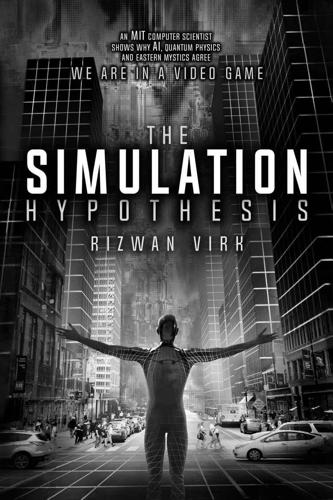
The Simulation Hypothesis
by
Rizwan Virk
Published 31 Mar 2019
The History and Rise of AI The Turing Test Figure 13: A visual depiction of the Turing Test 12 The Turing Test is more of a milestone than a definition, since most AI today cannot pass this test. Alan Turing, considered by many to be the father of modern computer science, conjectured a time when a machine would exhibit intelligent behaviors. In his 1950 paper titled “Computing Machinery and Intelligence,” Turing took on the question of whether a machine could “think.” Since it was very difficult to say what “thinking” would mean, Turing devised a party game to tell if a computer was “intelligent” enough in conversation that it could fool a human. In this party game, an interrogator (in Figure 13, party C) was behind the curtain, and he was “interrogating” two parties: A and B.
…
See AGI (Artificial Generalized Intelligence); AI (artificial intelligence); AI (artificial intelligence), history of Aserinsky, Eugene, 189 Ashely-Farrand, 206 Asimov, Isaac, 99 assembly language, 33 Asteroids, 36–37 Atari, 2, 4, 32, 38 atom, 167–68 atomic clocks, 170 augmented images, photorealistic, 63–64 augmented reality (AR), 62–64 Avatar, 58, 64 avatars, 44–45, 46f, 49, 273–74 B bag of karma, 117, 208 basic game loop, 31 BASIC programming language, 33 Beane, Silas, 255 Bhagavad Gita, 204–5 big game world, 30 “big TOE” (Theory of Everything), 156–57 biological materials, 3D printers, 71–72 bitmap, 163–64 black holes, 178–79 Blackthorn, 55 Blade Runner, 9, 77–78, 94 Blade Runner 2049, 65 Bohr, Niels, 13, 122, 124–25, 131, 167 Book of the Dead/Bardo Thol, 192 Boolean logic gates, 258 Born, Max, 131, 167 Bostrom, Nick, 5, 24–26, 105, 114–15, 220–21, 247, 281 Bostrom’s Simulation Argument, 110–11 Bostrom’s Simulation Argument, statistical basis for, 111–14 Brahman, 191 branching, 159 Breakout, 87 A Brief History of Time (Hawking), 10 Brinkley, Dannion, 229–231, 241 Buddha, 1, 183, 249 Buddhism, 14–15 Buddhist Dream Yoga, 191–94 Bushnell, Nolan, 34 butterfly effect, 18–19 Byte, 33 C c (speed of light), 174 C# programming language, 33, 171–73 CAD (computer-aided design), 287 Cameron, James, 64, 96–97 Campbell, Thomas, 156–57, 173–76, 250, 254–55 Capra, Fritjof, 203–4 Carmack, John, 59–60 central processing units (CPUs), 137 CGI (computer-generated imagery) techniques, 63–66 Chalmers, David, 246–47 chaos theory, 18–19 chat-bot, 31, 88, 98, 118 checksums, 256 Chess, 104 chess-playing computer, 86f Choose Your Own Adventure, 83 Christianity, 15–16 Christianity and Judaism, 223–25 Clarke, Arthur C., 96 classical physics, 29, 125, 161, 166, 283–84, 288 classical vs. relativistic physics, 122–24 Cline, Ernest, 56 clock-speed and quantized time, computer simulations, 171–73 Close Encounters of the Third Kind, 232, 276 cloud of probabilities, 127 collective dream, 187–88 Colossal Cave Adventure, 27–29, 32, 34 Colossal Cave Adventure, map of, 29f computation, 18–19 computation, and other sciences, 287 computation, evidence of, 256–57, 267–68 overview, 246–47 computation in nature, evidence of, 263–66 computational irreducibility, 18, 79, 266 computer simulations clock-speed and quantized time, 171–73 . see also ancestor simulation; Great Simulation; Simulation Argument; simulation hypothesis; Simulation Point computer-generated imagery (CGI) techniques, 64–66 “Computing Machinery and Intelligence” (Turing, 1950), 85 conditional rendering, evidence of, 253–55 conflict resolution, 173 conscious players, people as, 114–15 consciousness, 148 as digital informaion, 17–18 as information and computation, 82 consciousness, defined, 115–16 consciousness, digital vs. spiritual, 116–18 consciousness and metaphysical experiments, 249–250 consciousness as information, 104–5 consciousness transference, 198–99 Constraints on the Universe as a Numerical Simulation (Beane, Davoudi and Savage), 255 Copenhagen interpretation, 131 Cosmos, 251 CPUs (central processing units), 137 . see also GPUs/CPUs Creative Labs, 62 Crichton, Michael, 71–72 Crick, Francis, 116 Crowther, Will, 27 Curry, Adam, 76 D Dalai Lama, 207 Data, Star Trek: The Next Generation, 95–96, 115 Davoudi, Zohreh, 255 deathmatch mode, 43–44 Deep Blue, 86 DeepMind, 86–88, 94, 98 déjà vu, 240–41 delayed-choice double slit experiment, 145f delayed-choice experiment, 143–46 delayed-measurement experiment, 146 DELTA t (T), 174 Department of Defense (DOD), 232 Descartes, René, 11 DeWitt, Bryce, 149 dharma, 191 Dick, Leslie “Tessa” B., 8–9 Dick, Philip K., 274, 289 and alternate realities, 8–9 computer simulations and variables, 19 and implanted memories, 77–78 life as computer-generated simulation, 78–79 Metz Sci-Fi Convention, 1977, 2 question of reality vs. fiction, 71–72 simulated worlds, 80 speculative technologies, 53 digital consciousness, 116–18 digital film resolution, 65 digital immortality, 82, 105 digital psychiatrist, 88–89, 161 directed graph, 153–55 Discrete World, 165–66 Do Androids Dream of Electric Sheep, 9 Donkey Kong, 1 Doom, 43–44, 43f, 59–60, 137–38 DOTA 2, 87, 94 dot-matrix printers (2D), 69–71 double slit experiment, 128–29, 129f downloadable consciousness, 54, 101–4, 198, 207, 281 downloadable consciousness and seventh yoga, 197–99 Dr.

Possible Minds: Twenty-Five Ways of Looking at AI
by
John Brockman
Published 19 Feb 2019
Writing at a time when vacuum tubes were still the primary electronic building blocks and there were only a few actual computers in operation, Norbert Wiener imagined the future we now contend with in impressive detail and with few clear mistakes. Alan Turing’s famous 1950 article “Computing Machinery and Intelligence,” in the philosophy journal Mind, foresaw the development of AI, and so did Wiener, but Wiener saw further and deeper, recognizing that AI would not just imitate—and replace—human beings in many intelligent activities but change human beings in the process: We are but whirlpools in a river of ever-flowing water.
…
Ross, 39, 179 Ashby’s Law of Requisite Variety (First Law of Cybernetics), 39, 179, 180 Asilomar AI Principles, 2017, 81, 84 Asimov, Isaac, 250 astonishing corollary (natural intelligence as special case of AI), 67–70 astonishing hypothesis, 66–67 Astonishing Hypothesis (Crick), 66 AUM Conference, xxi–xxii automation, in manufacturing, 4, 154 Barry, Judith, 262 Bateson, Gregory, xx–xxi, 179, 264–65 Bateson, Mary Catherine, 264 Bayesian models, 226–28 Better Angels of Our Nature, The (Pinker), 118 Bostrom, Nick, xxvi, 27, 80 bounded optimality, 132 brain organoids, 245–46 Brand, Lois, xvii Brand, Stewart, xvii, xxv Bricogne, Gérard, 183 Bronowski, Jacob, 118 Brook, Peter, 213 Brooks, Rodney, 54–63 background and overview of work of, 54–55 data gathering and exploitation, computation platforms used for, 61–63 software engineering, lack of standards and failures in, 60–61 on Turing, 57, 60 on von Neumann, 57–58, 60 on Wiener, 56–57, 59–60 buffer overrun, 61 Bush, Vannevar, 163, 179–80 Cage, John, xvi causal reasoning, 17–19 cellular automaton, von Neumann’s, 57–58 Cheng, Ian, 216–18 chess, 8, 10, 119–20, 150, 184, 185 children, learning in, 222, 228–30 Chinese Room experiment, 250 Chomsky, Noam, 223, 226 Church, Alonzo, 180 Church, George M., 49, 240–53 AI safety concerns, 242–43 background and overview of work of, 240–41 conventional computers versus bio-electronic hybrids, 246–48 equal rights, 248–49 ethical rules for intelligent machines, 243–44 free will of machines, and rights, 250–51 genetic red lines, 251–52 human manipulation of humans, 244–46, 252 humans versus nonhumans and hybrids, treatment of, 249–53 non-Homo intelligences, fair and safe treatment of, 247–48 rights for nonhumans and hybrids, 249–53 science versus religion, 243–44 self-consciousness of machines, and rights, 250–51 technical barriers/red lines, malleability of, 244–46 transhumans, rights of, 252–53 clinical (subjective) method of prediction, 233, 234–35 Colloquy of Mobiles (Pask), 259 Colossus: The Forbin Project (film), 242 competence of superintelligent AGI, 85 computational theory of mind, 102–3, 129–33, 222 computer learning systems Bayesian models, 226–28 cooperative inverse-reinforcement learning (CIRL), 30–31 deep learning (See deep learning) human learning, similarities to, 11 reality blueprint, need for, 16–17 statistical, model-blind mode of current, 16–17, 19 supervised learning, 148 unsupervised learning, 225 Computer Power and Human Reason (Weizenbaum), 48–49, 248 computer virus, 61 “Computing Machinery and Intelligence” (Turing), 43 conflicts among hybrid superintelligences, 174–75 controllable-agent designs, 31–32 control systems beyond human control (control problem) AI designed as tool and not as conscious agent, 46–48, 51–53 arguments against AI risk (See risk posed by AI, arguments against) Ashby’s Law and, 39, 179, 180 cognitive element in, xx–xxi Dyson on, 38–39, 40 Macy conferences, xx–xxi purpose imbued in machines and, 23–25 Ramakrishnan on, 183–86 risk of superhuman intelligence, arguments against, 25–29 Russell on templates for provably beneficial AI, 29–32 Tallinn on, 93–94 Wiener’s warning about, xviii–xix, xxvi, 4–5, 11–12, 22–23, 35, 93, 104, 172 Conway, John Horton, 263 cooperative inverse-reinforcement learning (CIRL), 30–31 coordination problem, 137, 138–41 corporate/AI scenario, in relation of machine superintelligences to hybrid superintelligences, 176 corporate superintelligences, 172–74 credit-assignment function, 196–200 AI and, 196–97 humans, applied to, 197–200 Crick, Francis, 58, 66 culture in evolution, selecting for, 198–99 curiosity, and AI risk denial, 96 Cybernetic Idea, xv cybernetics, xv–xxi, 3–7, 102–4, 153–54, 178–80, 194–95, 209–10, 256–57 “Cybernetic Sculpture” exhibition (Tsai), 258, 260–61 “Cybernetic Serendipity” exhibition (Reichardt), 258–59 Cybernetics (Wiener), xvi, xvii, 3, 5, 7, 56 “Cyborg Manifesto, A” (Haraway), 261 data gathering and exploitation, computation platforms used for, 61–63 Dawkins, Richard, 243 Declaration of Helsinki, 252 declarative design, 166–67 Deep Blue, 8, 184 Deep Dream, 211 deep learning, 184–85 bottom-up, 224–26 Pearl on lack of transparency in, and limitations of, 15–19 reinforcement learning, 128, 184–85, 225–26 unsupervised learning, 225 visualization programs, 211–13 Wiener’s foreshadowing of, 9 Deep-Mind, 184–85, 224, 225, 262–63 Deleuze, Gilles, 256 Dennett, Daniel C., xxv, 41–53, 120, 191 AI as “helpless by themselves,” 46–48 AI as tool, not colleagues, 46–48, 51–53 background and overview of work of, 41–42 dependence on new tools and loss of ability to thrive without them, 44–46 gap between today’s AI and public’s imagination of AI, 49 humanoid embellishment of AI, 49–50 intelligent tools versus artificial conscious agents, need for, 51–52 operators of AI systems, responsibilities of, 50–51 on Turing Test, 46–47 on Weizenbaum, 48–50 on Wiener, 43–45 Descartes, René, 191, 223 Desk Set (film), 270 Deutsch, David, 113–24 on AGI risks, 121–22 background and overview of work of, 113–14 creating AGIs, 122–24 developing AI with goals under unknown constraints, 119–21 innovation in prehistoric humans, lack of, 116–19 knowledge imitation of ancestral humans, understanding inherent in, 115–16 reward/punishment of AI, 120–21 Differential Analyzer, 163, 179–80 digital fabrication, 167–69 digital signal encoding, 180 dimensionality, 165–66 distributed Thompson sampling, 198 DNA molecule, 58 “Dollie Clone Series” (Hershman Leeson), 261, 262 Doubt and Certainty in Science (Young), xviii Dragan, Anca, 134–42 adding people to AI problem definition, 137–38 background and overview of work of, 134–35 coordination problem, 137, 138–41 mathematical definition of AI, 136 value-alignment problem, 137–38, 141–42 The Dreams of Reason: The Computer and the Rise of the Science of Complexity (Pagels), xxiii Drexler, Eric, 98 Dyson, Freeman, xxv, xxvi Dyson, George, xviii–xix, 33–40 analog and digital computation, distinguished, 35–37 background and overview of work of, 33–34 control, emergence of, 38–39 electronics, fundamental transitions in, 35 hybrid analog/digital systems, 37–38 on three laws of AI, 39–40 “Economic Possibilities for Our Grandchildren” (Keynes), 187 “Einstein, Gertrude Stein, Wittgenstein and Frankenstein” (Brockman), xxii emergence, 68–69 Emissaries trilogy (Cheng), 216–17 Empty Space, The (Brook), 213 environmental risk, AI risk as, 97–98 Eratosthenes, 19 Evans, Richard, 217 Ex Machina (film), 242 expert systems, 271 extreme wealth, 202–3 fabrication, 167–69 factor analysis, 225 Feigenbaum, Edward, xxiv Feynman, Richard, xxi–xxii Fifth Generation, xxiii–xxiv The Fifth Generation: Artificial Intelligence and Japan’s Computer Challenge to the World (Feigenbaum and McCorduck), xxiv Fodor, Jerry, 102 Ford Foundation, 202 Foresight and Understanding (Toulmin), 18–19 free will of machines, and rights, 250–51 Frege, Gottlob, 275–76 Galison, Peter, 231–39 background and overview of work of, 231–32 clinical versus objective method of prediction, 233–35 scientific objectivity, 235–39 Gates, Bill, 202 generative adversarial networks, 226 generative design, 166–67 Gershenfeld, Neil, 160–69 background and overview of work of, 160–61 boom-bust cycles in evolution of AI, 162–63 declarative design, 166–67 digital fabrication, 167–69 dimensionality problem, overcoming, 165–66 exponentially increasing amounts of date, processing of, 164–65 knowledge in AI systems, 164 scaling, and development of AI, 163–66 Ghahramani, Zoubin, 190 Gibson, William, 253 Go, 10, 150, 184–85 goal alignment.
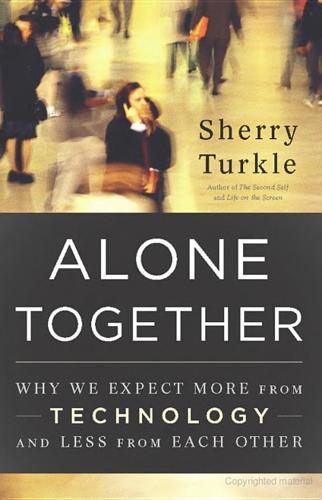
Alone Together
by
Sherry Turkle
Published 11 Jan 2011
See the Feldman Gallery’s Kelly Heaton page at www.feldmangallery.com/pages/artistsrffa/arthea01.html (accessed August 18, 2009). 9 Baird developed her thought experiment comparing how people would treat a gerbil, a Barbie, and a Furby for a presentation at the Victoria Institute, Gothenburg, Sweden, in 1999. 10 In Turing’s paper that argued the existence of intelligence if a machine could not be distinguished from a person, one scenario involved gender. In “Computing Machinery and Intelligence,” he suggested an “imitation game”: a man and then a computer pose as female, and the interrogator tries to distinguish them from a real woman. See Alan Turing, “Computing Machinery and Intelligence,” Mind 59, no. 236 (October 1950): 433-460. 11 Antonio Damasio, The Feeling of What Happens: Body and Emotion in the Making of Consciousness (New York: Harcourt, 1999). Since emotions are cognitive representations of body states, the body cannot be separated from emotional life, just as emotion cannot be separated from cognition. 12 There are online worlds and communities where people feel comfortable expressing love for Furbies and seriously mourning Tamagotchis.
…
In 1950, he wrote, “It can also be maintained that it is best to provide the machine with the best sense organs that money can buy, and then teach it to understand and speak English. That process could follow the normal teaching of a child. Things would be pointed out and named, etc.” Alan Turing, “Computing Machinery and Intelligence,” Mind 59, no. 236 (October 1950): 433-460. 7 This branch of artificial intelligence (sometimes called “classical AI”) attempts to explicitly represent human knowledge in a declarative form in facts and rules. For an overview of AI and its schools that explores its relations to theories of mind, see Margaret Boden, Artificial Intelligence and Natural Man (1981; New York: Basic Books, 1990). 8 Hubert Dreyfus, “Why Computers Must Have Bodies in Order to Be Intelligent,” Review of Metaphysics 21, no. 1 (September 1967): 13-32.

Turing's Cathedral
by
George Dyson
Published 6 Mar 2012
Nigel Goldenfeld and Carl Woese, “Biology’s Next Revolution,” Nature, January 25, 2007, p. 369. 51. Nils Barricelli, in Paul S. Moorhead and Martin M. Kaplan, eds., Mathematical Challenges to the Neo-Darwinian Interpretation of Evolution: A Symposium Held at the Wistar Institute, April 25–26, 1966 (Philadelphia: Wistar Institute, 1966), p. 67; Alan Turing, “Computing Machinery and Intelligence,” Mind 59, no. 236 (October 1950): 456. 52. George Church, West Hollywood, Calif., July 26, 2009, EDGE Foundation, “A Short Course on Synthetic Genomics” (http://edge.org/event/master-classes/the-edge-master-class-2008-a-short-course-on-synthetic-genomics). THIRTEEN: TURING’S CATHEDRAL 1.
…
Turing, “Lecture to the London Mathematical Society on 20 February 1947,” pp. 23–24. 48. Turing, “Intelligent Machinery,” p. 2. 49. Turing, “Lecture to the London Mathematical Society on 20 February 1947,” p. 2. 50. Turing, “Intelligent Machinery,” p. 6. 51. Ibid. 52. Ibid., p. 18. 53. Turing, “Computing Machinery and Intelligence,” p. 456; Turing, “Intelligent Machinery,” p. 17. 54. I. J. Good to Sara Turing, December 9, 1956, AMT; Lyn Newman to Antoinette Esher, June 24, 1949, AMT; I. J. Good, “Ethical Machines,” prepared for the Tenth Machine Intelligence Workshop, Case Western Reserve University, April 20–25, 1981, unpublished draft, October 7, 1980, p. ix. 55.
…
Alfvén, The Tale of the Big Computer, p. 125. 22. William C. Dement, “Ontogenetic Development of the Human Sleep-Dream Cycle,” Science 152, no. 3722 (April 29, 1966): 604. 23. Nathaniel Hawthorne, The House of the Seven Gables (Boston: Ticknor, Reed, and Fields, 1851), p. 283; Turing, “Computing Machinery and Intelligence,” p. 433. 24. Alfvén, The Tale of the Big Computer, p. 116. 25. Ibid., pp. 117–18. 26. Eva Wisten, personal communication, October 25, 2005, GBD. 27. Alfvén, The Tale of the Big Computer, p. 119. 28. Ibid., p. 126. EIGHTEEN: THE THIRTY-NINTH STEP 1. Klára von Neumann, The Computer. 2.
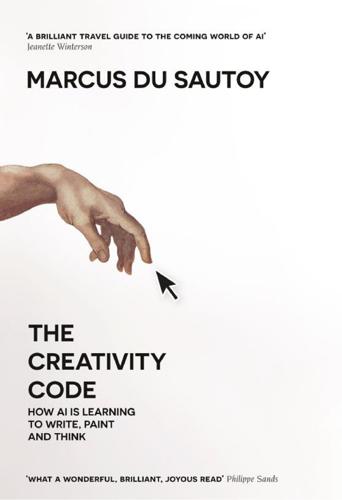
The Creativity Code: How AI Is Learning to Write, Paint and Think
by
Marcus Du Sautoy
Published 7 Mar 2019
Bartender gives them water because he is able to distinguish the boundary tones that dictate the grammatical function of homonyms in coda position, as well as pragmatic context. Joke posted on Twitter If you are going to be a writer it’s important that you understand language, or at least give the illusion of understanding it. So how good are machines at navigating human communication? The opening sentence of Alan Turing’s famous paper ‘Computing Machinery and Intelligence’ sets out the challenge: ‘I propose to consider the question “Can machines think?”’ This, Turing believed, was too general, so he refined his challenge: he wondered if a machine could be programmed so that if a human were to engage it in conversation, its responses would be so convincing that the human could not tell it was talking to a machine.
…
Ekhad 179 Shankar, Ravi 11 Shannon, Claude 19, 203 Shapley, Lloyd 57, 58, 61 Shelley, Percy Bysshe 281 Shinshu University 236 shogi 97 Siemens 110, 111 SIGGRAPH conference (1980) 115 Sigur Rós: ‘Óveður 228–9 Silver, David 33, 38, 39, 98 Simrock, Nikolaus 194 Sky Arts 290 Slater, David 108–9 Sloane, Neil 291–2 Smith, Alvy Ray 115 Smith, Zadie 303 Société des auteurs, compositeurs et éditeurs de musique (SACEM) 229–30 Socrates 165 songwriting 213–32; AIVA and 229–30; The Continuator and 218–21; ‘Daddy’s Car’ (first pop song written by AI) 223–4; emotion and 204–6; Eno and 229; Fantom app and 226–8; Flow Machine and 221–4, 222; Hello World (AI album) 224; jazz/improvisation and 213–14, 218–24, 298, 299; Jukedeck and 225–6; Markov chain and 214–18, 216, 217; Sigur Rós: ‘Óveður and 228–9; Spotify and fake artists 224–5; why we make music 230–1 Sony 116, 124; Computer Science Laboratory, Paris 214, 224, 271 Sophocles 165 Spain football team 55 spam filters 90–1 SPEAC 198–200, 198 Spielberg, Steven 115 Spotify 135, 224–5 square root 1; of minus one 12; of 2 163, 244 Stable Marriage Problem, The 57–61, 58, 59, 60 Stanford University 48, 196, 259; Law School 109 Star Trek: The Next Generation (Cause and Effect episode) 251 Steels, Luc 271–2 Stokes, Mark 77 Stoppard, Tom 99 storytelling 275–97, 305; Android Lloyd Webber and 290; Beyond the Fence (musical) and 290–1; Botnik and 284–6; Cambridge Analytica and 296; Cybernetic Poet and 280–2; Ferranti Mark 1 and 277–8; future of AI and 305–6; mathematical tales, generating new 291–3; MduS uses AI to compose section of this book 297; NaNoGenMo (National Novel Generation Month)/AI novels 282–3; news stories, AI generated 293–6; Oulipo (Ouvroir de littérature potentielle) 278–80; plagiarism and 297; PropperWryter and 290; Scheherazade-IF and 286–8, 306; ‘The Great Automatic Grammatizator’ (Dahl) and 276–7, 297; What If Machine (Whim) and 288–91 Strachey, Christopher 278 Stravinsky, Igor 204–6 string theory 171 Stuttgart Academy of Fine Art 126 Suleyman, Mustafa 25 supervised learning 95–6, 97, 137 surprise, creativity and 4, 8, 40, 65, 66, 102–3, 148, 168, 202, 241, 248–9 symmetries 3, 4, 10, 11, 18, 100, 102, 172, 175, 177, 187, 191–2, 208, 235, 250, 292 tabula rasa learning 73, 97, 98 Taylor, Richard 123, 124, 172 Theme Park 23 Thiel, Peter 25 Thomas, Rob 227–8 Tinguely, Jean 119 Tolstoy, Leo 105, 242, 243 Touchette, Hugo 55 Trebek, Alex 262 Trinity College, Cambridge 240 Trump, Donald 54, 258 Trybulec, Andrzej 236 Turing, Alan 2, 7, 8, 24, 66, 277, 278; ‘Computing Machinery and Intelligence’ 254 Turing Test 7, 38, 71, 200–2, 220–1, 239–41, 254–7, 258, 260, 273, 281, 282, 297 University College London 25 University of Alberta 236 University of California, San Diego 117 University of Manchester 277–8 University of Oregon 123, 201 University of Texas 88 Up (film) 115 Valéry, Paul 233 value, creativity and 4, 8, 12, 16, 17, 40–1, 102–3, 167–8, 238–9, 301, 304 Van Gogh, Vincent 16, 41, 126, 128, 131, 135, 136, 137, 138 Veenendaal, Albert van 220–1 Venice Biennale (1966) 117 Vinyals, Oriol 235, 236, 238 vision, computer 43, 70–80, 75, 93–4, 137–8, 143, 145, 212 visuals, code made 110–13 Voevodsky, Vladimir 181–5 Vogelkop gardener bowerbird 108 Vol Libre (‘Free Flight’) animation 114 Walsh, Toby 292 Warhol, Andy 107 Watson 261–8 Watson, Thomas J. 262 Weierstrass, Karl 7 Weizenbaum, Joseph 255, 256 Wells, H.
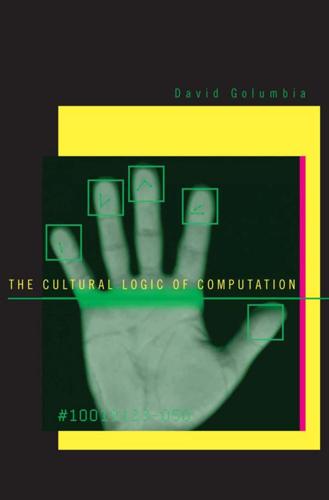
The Cultural Logic of Computation
by
David Golumbia
Published 31 Mar 2009
In addition, there exists (in that same abstract space) a Turing machine whose operation is directly related to that of the brain; Chomsky’s approach and language show that he had read Turing (1936, 1937, 1950), and he was no doubt influenced by Turing’s mathematical and logical work as well.2 Putnam’s “Minds and Machines” proceeds along lines inspired at least in part by Wittgenstein and by Turing. Putnam wants to show that the traditional philosophical mind/body problem is soluble, in a Wittgensteinian sense—a problem that is an artifact of our language and that philosophical analysis can clear up, in the sense of “dissolve.” Putnam seems to be endorsing Turing’s method in “Computing Machinery and Intelligence,” namely, rejecting the question “can machines think?” by replacing it with a question about the way machines and human beings each use language. Since it explicitly invokes the operations of Turing machines at length and the way in which they use language to refer to themselves as entities, it is hard not to see the article as in some sense a response to and elaboration of Turing (1950).
…
New York: Regan Books. Turing, Alan. 1936. “On Computable Numbers, with an Application to the Entscheidungsproblem.” Proceedings of the London Mathematical Society, Series 2, Volume 42 (1936–37), 230–265. ———. 1937. “Computability and λ-Definability.” The Journal of Symbolic Logic 2, 153–163. ———. 1950. “Computing Machinery and Intelligence.” Mind: A Quarterly Review of Psychology and Philosophy 59, Number 236 (October), 433–460. Turkle, Sherry. 1984. The Second Self: Computers and the Human Spirit. New York: Simon & Schuster. ———. 1995. Life on the Screen: Identity in the Age of the Internet. New York: Simon & Schuster.

Augmented: Life in the Smart Lane
by
Brett King
Published 5 May 2016
These algorithms don’t learn language like a human; they identify a phrase through recognition, look it up on a database and then deliver an appropriate response. Recognising speech and being able to carry on a conversation are two very different achievements. What would it take for a computer to fool a human into thinking it was a human, too? The Turing Test or Not… In 1950, Alan Turing published a famous paper entitled “Computing Machinery and Intelligence”. In his paper, he asked not just if a computer or machine could be considered something that could “think”, but more specifically “Are there imaginable digital computers which would do well in the imitation game?”26 Turing proposed that this “test” of a machine’s intelligence—which he called the “imitation game”—be tested in a human-machine question and answer session.
…
Low friction interfaces also have optimal presentation of information so that readability and usability are high. 20 Ian Parker, “The Shape of Things to Come—How an Industrial Designer became Apple’s Greatest Product,” New Yorker, 23 February 2015, http://www.newyorker.com/magazine/2015/02/23/shape-things-come. 21 Henry Blodget, “Uber CEO Reveals Mind-Boggling Statistic That Skeptics Will Hate,” Business Insider, 19 January 2015. 22 Todd Spangler, “Streaming overtakes live TV among consumer viewing preferences,” Variety, 22 April 2015, http://variety.com/2015/digital/news/streaming-overtakes-live-tv-among-consumer-viewing-preferences-study-1201477318/. 23 Tesla uses Tegra chips in its cars. 24 “Meet the Robot Telemarketer Who Denies She’s a Robot,” Time, 13 December 2013, http://newsfeed.time.com/2013/12/10/meet-the-robot-telemarketer-who-denies-shes-a-robot/. 25 Taken from Bill Gates’ speech at the Microsoft Developers Conference on 1st October 1997 26 A. M. Turing, “Computing Machinery and Intelligence,” MIND: A Quarterly Review of Psychology and Philosophy vol. LIX, no. 236. (October 1950), http://mind.oxfordjournals.org/content/LIX/236/433. 27 Test Car A and Test Car B became Ajay and Bobby, respectively. Chapter 4 The Robot Advantage Contributed by Alex Lightman Edited by Brett King “The central question of 2025 will be: What are people for in a world that does not need their labor, and where only a minority are needed to guide the ‘bot-based’ economy?”

Rage Inside the Machine: The Prejudice of Algorithms, and How to Stop the Internet Making Bigots of Us All
by
Robert Elliott Smith
Published 26 Jun 2019
His invention of the thought-experiment computer the Turing machine literally created the field of computer science, the bedrock field for an immeasurable fraction of today’s global society. And he created another thought experiment that has forever altered the cultural zeitgeist about man and machines: the so-called Turing test. The test was first described in the 1950 paper entitled ‘Computing Machinery and Intelligence’,4 in which Turing acknowledges the difficulty of defining ‘thinking’, such that one could answer the question, ‘Do computers think?’ He posed instead the alternative question: ‘Are there imaginable digital computers which would do well in the imitation game?’ The imitation game (Turing never used his own name for the test) is a thought experiment about communication, which he saw as a way of determining progress in AI.
…
Boston: Shambhala. 2Alyssa Newcomb, 2015, How Many Pages It Takes to Print the Entire Internet, ABC News, https://abcnews.go.com/Technology/pages-takes-print-entire-internet/story?id=30956365 3Drew McDermott, 1976, Artificial Intelligence Meets Natural Stupidity. SIGART Bull., 57: 4–9. http://dx.doi.org/10.1145/1045339.1045340 4A.M. Turing, 1995, Computing Machinery and Intelligence. In Edward A. Feigenbaum and Julian Feldman (eds), Computers and Thought, pp. 1–35. Cambridge, MA: MIT Press. 5James Gleick, The Information: a History, a Theory, a Flood. New York: Pantheon Books. 6‘Cybernetics’ was a precursor name for the field that came to be known as artificial intelligence soon after this conference.

Empire of the Sum: The Rise and Reign of the Pocket Calculator
by
Keith Houston
Published 22 Aug 2023
Turing, “On Computable Numbers, with an Application to the Entscheidungsproblem,” Proceedings of the London Mathematical Society s2-42, no. 1 (1937): 230–265, https://doi.org/10.1112/plms/s2-42.1.230; Alan M. Turing, “Computing Machinery and Intelligence,” Mind LIX, no. 236 (1950): 433–460, https://doi.org/10.1093/mind/LIX.236.433. 5 Roland Pease, “Alan Turing: Inquest’s Suicide Verdict ‘Not Supportable,’ ” BBC News, June 26, 2012, https://www.bbc.co.uk/news/science-environment-18561092; “Royal Pardon for Codebreaker Alan Turing,” BBC News, December 24, 2013, https://www.bbc.co.uk/news/technology-25495315. 6 Turing, “Computing Machinery and Intelligence,” 436–437. 7 Menninger, Number Words, 212, 306. 8 Heinrich Schreiber, Ayn New Kunstlich Buech, Welches Gar Gewiß Vnd Behend Lernet Nach Der Gemainen Regel Detre, Welschen Practic, Regeln Falsi vñ Etlichē Regeln Cosse Mancherlay Schöne Uñ Zu Wissen Notürfftig Rechnu~g Auff Kauffmanschafft . . .
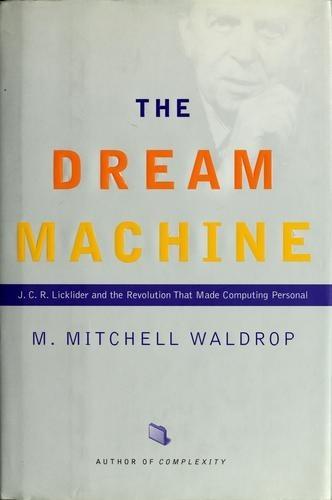
The Dream Machine: J.C.R. Licklider and the Revolution That Made Computing Personal
by
M. Mitchell Waldrop
Published 14 Apr 2001
Turing, of course, had spent much of his time since the war trying to create his abstract machine "in the metal," first with his designs for the ACE com- puter at the National Physical Laboratory and then, starting in 1948, with his work as chief programmer for the Mark I computer project at Manchester Uni- versity. In parallel, however-and to Turing's way of thinking, far more impor- tant-he was also continuing his struggle to understand the fundamental nature of intelligence. That effort culminated in 1950 with his paper "Computing Machinery and Intelligence,"14 in which he addressed the fundamental question: Can a machine think? Instead of trying to answer that directly, however-an exercise that had al- ready generated entirely too much philosophical hot air for his taste-he parsed it into two questions that were even more elemental. First, What do we mean by a "machine"?
…
Henry S. Tropp, "History of the Design of the SAGE Computer-The AN/FSQ7," Annals of the History of Computing 5 (1983): 340. 13. Norbert Wiener, Cybernetics, or Control and CommunicatiOn in the Animal and the Machine, 2d ed. (Cambridge, Mass.: MIT Press, 1961), vii. 14. Alan M. Turing, "Computing Machinery and Intelligence," Mind 59, no. 236 (1950). Repnnted In The Mind's I: Fantasies and ReflectiOns on Self & Soul, ed. Douglas R. Hofstadter and Daniel C. Den- nett (New York: BasIC Books, 1981), 53-67. 15. Ibid. 16. QIoted In Steve Heims, John von Neumann and Norbert Wiener: From Mathematics to the Technologies of Life and Death (Cambridge, Mass.: MIT Press, 1980), 276. 17.
…
Forrester)." Annals of the H15tory ofComputzng 5 (1983). -. "Origin of the Term Bit." Annals of the History ofComputzng 6 (1984). Turing, Alan M. "On Computable Numbers, with an ApplIcation to the Entschldungsproblem." Pro- ceedzngs of the London Mathematical Soczety 2, no. 42 (1937). -. "Computing Machinery and Intelligence." Mind 59, no. 236 (1950). Reprinted In The Mznd's I: Fantaszes and ReflectIOns on Self & Soul, edited by Douglas R. Hofstadter and Daniel C. Dennett. New York: BasIC Books, 1981. Turkle, Sherry. The Second Self: Computers and the Human Spznt. New York: Simon & Schuster, 1984. U mpleby, Stuart A., and Eric B.
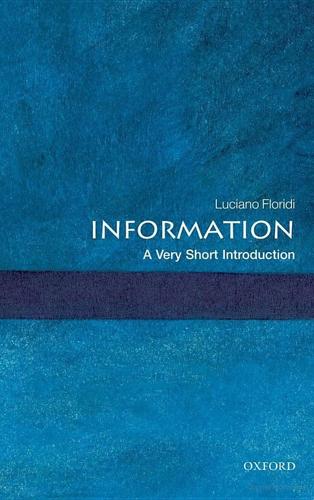
Information: A Very Short Introduction
by
Luciano Floridi
Published 25 Feb 2010
Jones, Elementary Information Theory (Oxford: Clarendon Press, 1979). D. M. MacKay, Information, Mechanism and Meaning (Cambridge, MA: MIT Press, 1969). J. R. Pierce, An Introduction to Information Theory: Symbols, Signals and Noise, 2nd edn (New York: Dover Publications, 1980). A. M. Turing, `Computing Machinery and Intelligence', Minds and Machines, 1950, 59, 433-60. Chapter 3 C. Cherry, On Human Communication: A Review, a Survey, and a Criticism, 3rd edn (Cambridge, MA; London: MIT Press, 1978). A. Golan, `Information and Entropy Econometrics - Editor's View', Journal of Econometrics, 2002,107(1-2),1-15.
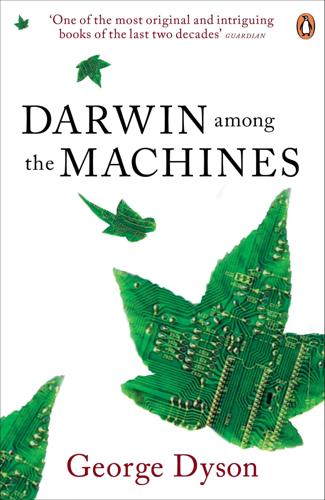
Darwin Among the Machines
by
George Dyson
Published 28 Mar 2012
Alexander, ed., The Leibniz–Clarke Correspondence (Manchester, England: Manchester University Press, 1956), 193. 52.Leibniz, 1714, The Monadology, in George R. Montgomery, trans., Basic Writings: Discourse on Metaphysics; Correspondence with Arnauld; Monadology (La Salle, Ill.: Open Court, 1902), 254. 53.Leibniz to Caroline, Princess of Wales, ca. 1716, in Alexander, Correspondence, 191. CHAPTER 4 1.Alan Turing, “Computing Machinery and Intelligence,” Mind 59 (October 1950): 443. 2.A. K. Dewdney, The Turing Omnibus (Rockville, Md.: Computer Science Press, 1989), 389. 3.Robin Gandy, “The Confluence of Ideas in 1936,” in Rolf Herken, ed., The Universal Turing Machine: A Half-century Survey (Oxford: Oxford University Press, 1988), 85. 4.Alan Turing, “On Computable Numbers, with an Application to the Entscheidungsproblem,” Proceedings of the London Mathematical Society, 2d ser. 42 (1936–1937); reprinted, with corrections, in Martin Davis, ed., The Undecidable (Hewlett, N.Y.: Raven Press, 1965), 117. 5.Ibid., 136. 6.Kurt Gödel, 1946, “Remarks Before the Princeton Bicentennial Conference on Problems in Mathematics,” reprinted in Davis, The Undecidable, 84. 7.W.
…
Origin of the Genetic Code as a Primordial Collector Language; The Pairing-Release Hypothesis,” BioSystems 11 (1979): 19, 21. 54.Martin Davis, “Influences of Mathematical Logic on Computer Science,” in Rolf Herken, ed., The Universal Turing Machine: A Half-century Survey (Oxford: Oxford University Press, 1988), 315. 55.Alan Turing, “Computing Machinery and Intelligence,” Mind 59 (October 1950): 456. CHAPTER 8 1.W. Daniel Hillis, “New Computer Architectures and Their Relationship to Physics, or Why Computer Science Is No Good,” International Journal of Theoretical Physics 21, nos. 3–4 (April 1982): 257. 2.Aeschylus, Agamemnon, lines 280–316, trans, and ed.
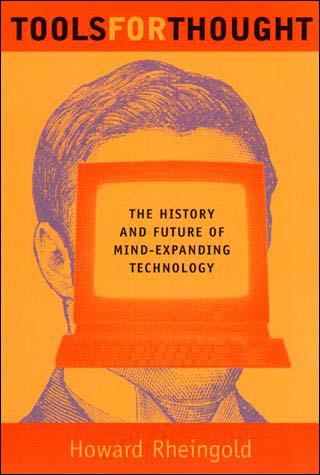
Tools for Thought: The History and Future of Mind-Expanding Technology
by
Howard Rheingold
Published 14 May 2000
His 1936 paper was published in a mathematical journal, but it eventually created the foundation of a whole new field of investigation beyond the horizons of mathematics -- computer science. In 1950, Turing published another article that was to have profound impact; the piece, more simply titled "Computing Machinery and Intelligence," was published in the philosophical journal Mind. In relatively few words, using tools no more esoteric than common sense, and absolutely no mathematical formulas, Turing provided the boldest subspecialty of computer science -- the field of artificial intelligence. Despite the simplicity of Turing's hypothetical machine, the formal description in the mathematics journal makes very heavy reading.
…
[2] An amusing example of an easily constructed Turing machine, using pebbles and toilet paper, is given in the third chapter of Joseph Weizenbaum, Computer Power and Human Reason (San Francisco: W. H. Freeman, 1976). [3] Turing, "Computable Numbers." [4] Andrew Hodges, Alan Turing: The Enigma (New York: Simon and Schuster, 1983), 396. [5]Ibid., 326. [6] Alan M. Turing, "Computing Machinery and intelligence," Mind, vol. 59, no. 236 (1950). [7] Ibid. [8] Hodges, Turing, 488. Chapter Four: Johnny Builds Bombs and Johnny Builds Brains [1] Steve J. Heims, John von Neumann and Norbert Wiener (Cambridge, Mass.: MIT Press, 1980), 371. [2] C. Blair, "Passing of a great Mind," Life,, February 25, 1957, 96

The Innovators: How a Group of Inventors, Hackers, Geniuses and Geeks Created the Digital Revolution
by
Walter Isaacson
Published 6 Oct 2014
“Not until a machine can write a sonnet or compose a concerto because of thoughts and emotions felt, and not by the chance fall of symbols, could we agree that machine equals brain,” declared a famous brain surgeon, Sir Geoffrey Jefferson, in the prestigious Lister Oration in 1949.92 Turing’s response to a reporter from the London Times seemed somewhat flippant, but also subtle: “The comparison is perhaps a little bit unfair because a sonnet written by a machine will be better appreciated by another machine.”93 The ground was thus laid for Turing’s second seminal work, “Computing Machinery and Intelligence,” published in the journal Mind in October 1950.94 In it he devised what became known as the Turing Test. He began with a clear declaration: “I propose to consider the question, ‘Can machines think?’ ” With a schoolboy’s sense of fun, he then invented a game—one that is still being played and debated—to give empirical meaning to that question.
…
It makes no more sense to say that the machine “thinks” than it does to say that the fellow following the massive instruction manual understands Chinese.95 One response to the Searle objection is to argue that, even if the man does not really understand Chinese, the entire system incorporated in the room—the man (processing unit), instruction manual (program), and files full of Chinese characters (the data)—as a whole might indeed understand Chinese. There’s no conclusive answer. Indeed, the Turing Test and the objections to it remain to this day the most debated topic in cognitive science. For a few years after he wrote “Computing Machinery and Intelligence,” Turing seemed to enjoy engaging in the fray that he provoked. With wry humor, he poked at the pretensions of those who prattled on about sonnets and exalted consciousness. “One day ladies will take their computers for walks in the park and tell each other ‘My little computer said such a funny thing this morning!’
…
Torvalds: © Jim Sugar/Corbis Berners-Lee: CERN Andreessen: © Louie Psihoyos/Corbis Case: Courtesy of Steve Case Hall: Courtesy of Justin Hall Kasparov: Associated Press Brin and Page: Associated Press Williams: Courtesy of Ev Williams Wales: Terry Foote via Wikimedia Commons IBM Watson: Ben Hider/Getty Images INDEX Abbate, Janet, ref1 Aberdeen Proving Ground, ref1, ref2, ref3, ref4, ref5, ref6 Abound, ref1 Acid Tests, ref1 acoustic delay line, ref1 “Action Office” console, ref1 Ada, Countess of Lovelace, ref1, ref2, ref3, ref4 in affair with tutor, ref1, ref2 algorithms worked out by, ref1 Analytical Engine business plan of, ref1 Analytical Engine potential seen by, ref1 Babbage requested to be tutor of, ref1 Babbage’s first meeting with, ref1 at Babbage’s salons, ref1, ref2 Bernoulli numbers computed by, ref1, ref2, ref3, ref4, ref5 on “Combining Faculty,” ref1 on connection between poetry and analysis, ref1, ref2, ref3, ref4, ref5, ref6, ref7, ref8 as doubtful about thinking machines, ref1, ref2, ref3, ref4, ref5, ref6, ref7, ref8, ref9 on general purpose machines, ref1, ref2, ref3, ref4, ref5, ref6, ref7 illnesses of, ref1, ref2, ref3 marriage of, ref1 “Notes” of, ref1, ref2, ref3, ref4, ref5 opiates taken by, ref1, ref2, ref3 programming explored by, ref1, ref2, ref3, ref4, ref5, ref6, ref7 on subroutines, ref1, ref2 temperament and mood swings of, ref1, ref2, ref3, ref4, ref5, ref6 tutored in math, ref1, ref2, ref3 Ada (programming language), ref1 Adafruit Industries, ref1n Adams, John, ref1 Adams, Samuel, ref1 Adams, Sherman, ref1 Adcock, Willis, ref1 advertising, ref1, ref2, ref3, ref4, ref5 Age of Wonder, The (Holmes), ref1 Aiken, Howard, ref1, ref2, ref3, ref4, ref5, ref6, ref7, ref8, ref9, ref10 Difference Engine of, ref1, ref2, ref3 and operation of Mark I, ref1 stubborness of, ref1 Aiken Lab, ref1, ref2, ref3 Air Force, U.S., ref1, ref2, ref3, ref4, ref5, ref6 Albert, Prince Consort, ref1 Albrecht, Bob, ref1, ref2 Alcorn, Al, ref1, ref2 algebra, ref1, ref2 algorithms, ref1 Allen, Paul, ref1, ref2, ref3, ref4, ref5, ref6, ref7, ref8, ref9, ref10 BASIC for Altair designed by, ref1, ref2 8008 language written by, ref1 electronic grid work of, ref1 Gates’s disputes with, ref1, ref2, ref3, ref4, ref5 in Lakeside Programming Group, ref1 PDP-10 work of, ref1, ref2 “All Watched Over by Machines of Loving Grace” (Brautigan), ref1, ref2 ALOHAnet, ref1 Alpert, Dick, ref1 Altair, ref1, ref2, ref3 Altair 8800, ref1, ref2, ref3 BASIC program for, ref1, ref2, ref3 exhibition of, ref1 AltaVista, ref1, ref2, ref3, ref4, ref5 American Ephemeris and Nautical Almanac, ref1 American Physical Society, ref1 American Research and Development Corporation (ARDC), ref1 America Online (AOL), ref1, ref2, ref3, ref4, ref5, ref6 Ames Research Center, ref1 Ampex, ref1, ref2 analog, ref1 digital vs., ref1, ref2, ref3 Analytical Engine, ref1, ref2, ref3, ref4, ref5, ref6, ref7, ref8, ref9, ref10 Differences Engine vs., ref1 Lovelace’s business plan for, ref1 Lovelace’s views on potential of, ref1 Menabrea’s notes on, ref1 punch cards and, ref1, ref2 as reprogrammable, ref1 Analytical Society, ref1 “Anatomy of a Large-Scale Hypertextual Web Search Engine, The” (Brin and Page), ref1 Anderson, Sean, ref1 Andreessen, Marc, ref1, ref2, ref3 Android, ref1 A-O system, ref1 Apollo Guide Computer, ref1 Apollo program, ref1, ref2, ref3 Apple, ref1n, ref2, ref3n, ref4, ref5, ref6, ref7, ref8, ref9 creativity of, ref1 headquarters of, ref1, ref2 Jobs ousted from, ref1, ref2 lawsuits of, ref1 Microsoft’s contract with, ref1 patents of, ref1 Apple I, ref1 Apple II, ref1, ref2, ref3, ref4, ref5 AppleLink, ref1 Apple Writer, ref1 Applied Minds, ref1 Aristotle, ref1 Armstrong, Neil, ref1 ARPA, ref1, ref2, ref3, ref4, ref5, ref6, ref7, ref8 funding for, ref1 ARPANET, ref1, ref2, ref3, ref4, ref5, ref6, ref7, ref8, ref9, ref10, ref11, ref12 bids on minicomputers for, ref1 connected to Internet, ref1 distributed network of, ref1, ref2 first four nodes of, ref1, ref2 military defense and, ref1 start of, ref1 ARPANET News, ref1 arsenic, ref1 artificial intelligence, ref1, ref2, ref3, ref4, ref5, ref6, ref7, ref8 human-machine interaction and, ref1, ref2 as mirage, ref1, ref2, ref3 video games and, ref1 Artificial Intelligence Lab, ref1 Asimov, Isaac, ref1 assembly code, ref1 assembly line, ref1, ref2 Association for Computing Machinery, ref1n “As We May Think” (Bush), ref1, ref2, ref3, ref4, ref5, ref6, ref7, ref8 Atanasoff, John Vincent, ref1, ref2, ref3, ref4, ref5, ref6, ref7, ref8 influence of, ref1, ref2 Atanasoff, Lura, ref1 Atanasoff-Berry computer, ref1 AT&T, ref1, ref2, ref3, ref4, ref5, ref6 Atari, ref1, ref2, ref3, ref4, ref5, ref6 founding of, ref1 Atari 800, ref1 Atkinson, Bill, ref1, ref2 Atlantic, ref1, ref2 atom bomb, ref1, ref2 Atomic Energy Commission, ref1 atomic power, ref1 ATS-3 satellite, ref1 Augmentation Research Center, ref1, ref2, ref3 augmented intelligence, ref1 “Augmenting Human Intellect” (Engelbart), ref1, ref2 Auletta, Ken, ref1 Autobiography (Franklin), ref1 automata, ref1 Automatic Computing Engine (ACE), ref1, ref2 automobile industry, ref1 Aydelotte, Frank, ref1 Baba, Neem Karoli, ref1 Babbage, Charles, ref1, ref2, ref3, ref4, ref5, ref6, ref7, ref8, ref9, ref10, ref11, ref12, ref13, ref14, ref15 Ada’s first meeting with, ref1 government attack published by, ref1 limits of Analytical Engine mistaken by, ref1 logarithm machine considered by, ref1, ref2 Lovelace given credit by, ref1 Lovelace’s Analytic Engine business plan and, ref1 programming as conceptual leap of, ref1 weekly salons of, ref1, ref2, ref3 Babbage, Henry, ref1 BackRub, ref1 Baer, Ralph, ref1 Baidu, ref1 ballistic missiles, ref1, ref2 Ballmer, Steve, ref1, ref2, ref3, ref4 Bally Midway, ref1, ref2, ref3 Baran, Paul, ref1, ref2, ref3, ref4, ref5, ref6, ref7, ref8 packet-switching suggested by, ref1 Bardeen, John, ref1, ref2, ref3, ref4, ref5, ref6, ref7 in dispute with Shockley, ref1, ref2, ref3 Nobel Prize won by, ref1 photovoltaic effect studied by, ref1 solid-state studied by, ref1 surface states studied by, ref1 Barger, John, ref1 Bartik, Jean Jennings, see Jennings, Jean BASIC, ref1, ref2, ref3, ref4, ref5, ref6, ref7, ref8, ref9 for Altair, ref1, ref2, ref3, ref4 batch processing, ref1 BBC, ref1 Beatles, ref1 Bechtolsheim, Andy, ref1 Beckman, Arnold, ref1, ref2, ref3 Beckman Instruments, ref1 Bell, Alexander Graham, ref1, ref2, ref3 Bell & Howell, ref1 Bell Labs, ref1, ref2, ref3, ref4, ref5, ref6, ref7, ref8, ref9, ref10, ref11, ref12, ref13, ref14, ref15, ref16, ref17, ref18, ref19, ref20, ref21 founding of, ref1 Murray Hill headquarters of, ref1 patents licensed by, ref1 solid-state physics at, ref1, ref2, ref3 transistor invented at, ref1, ref2, ref3, ref4 Bell System, ref1 Benkler, Yochai, ref1, ref2 Berkeley Barb, ref1, ref2 Berners-Lee, Tim, ref1, ref2, ref3, ref4, ref5, ref6, ref7 background of, ref1 and creation of browsers, ref1 hypertext created by, ref1 and micropayments, ref1 religious views of, ref1 Bernoulli, Jacob, ref1n Bernoulli numbers, ref1, ref2, ref3, ref4, ref5 Berry, Clifford, ref1, ref2 Beyer, Kurt, ref1, ref2 Bezos, Jeff, ref1 audaciousness celebrated by, ref1 Bhatnagar, Ranjit, ref1 Big Brother and the Holding Company, ref1, ref2 Bilas, Frances, ref1, ref2 Bilton, Nick, ref1 Bina, Eric, ref1, ref2 binary, ref1, ref2, ref3, ref4 in code, ref1 in German codes, ref1 on Z1, ref1 Bitcoin, ref1n bitmapping, ref1 Bletchley Park, ref1, ref2, ref3, ref4, ref5, ref6, ref7 Blitzer, Wolf, ref1 Bloch, Richard, ref1, ref2, ref3 Blogger, ref1, ref2 Blogger Pro, ref1 blogs, ref1 coining of term, ref1 McCarthy’s predictions of, ref1 Blue, Al, ref1 Blue Box, ref1, ref2 Board of Patent Interferences, ref1 Bohr, Niels, ref1 Bolt, Beranek and Newman (BBN), ref1, ref2, ref3, ref4, ref5, ref6, ref7, ref8, ref9 bombe, ref1 BOMIS, ref1, ref2 Bonneville Power Administration, ref1 Boole, George, ref1, ref2 Boolean algebra, ref1, ref2, ref3, ref4, ref5 Borgia, Cesare, ref1 boron, ref1 Bowers, Ann, ref1 brains, ref1, ref2 Braiterman, Andy, ref1, ref2 Braithwaite, Richard, ref1 Brand, Lois, ref1 Brand, Stewart, ref1, ref2, ref3, ref4, ref5, ref6, ref7, ref8, ref9, ref10 Brattain, Walter, ref1, ref2, ref3, ref4, ref5, ref6, ref7 in dispute with Shockley, ref1, ref2, ref3 Nobel Prize won by, ref1 photovoltaic effect studied by, ref1 solid-state studied by, ref1 in World War II, ref1, ref2 Brautigan, Richard, ref1, ref2, ref3 Breakout, ref1, ref2 Bricklin, Dan, ref1, ref2, ref3, ref4 Brilliant, Larry, ref1, ref2 Brin, Sergey, ref1, ref2, ref3 Google founded by, ref1, ref2, ref3 PageRank and, ref1 personality of, ref1 Bristow, Steve, ref1 British Association for the Advancement of Science, ref1 Brookhaven National Lab, ref1, ref2 Brown, Ralph, ref1 browsers, ref1 bugs, ref1 Bulletin Board System, ref1 Burks, Arthur, ref1 “Burning Chrome” (Gibson), ref1 Burns, James MacGregor, ref1 Bush, Vannevar, ref1, ref2, ref3, ref4, ref5, ref6, ref7, ref8, ref9, ref10, ref11, ref12, ref13, ref14, ref15, ref16, ref17 background of, ref1 computers augmenting human intelligence foreseen by, ref1, ref2, ref3, ref4, ref5, ref6, ref7, ref8, ref9, ref10, ref11 linear model of innovation and, ref1 personal computer envisioned by, ref1, ref2, ref3, ref4 technology promoted by, ref1, ref2 Bushnell, Nolan, ref1, ref2, ref3, ref4, ref5, ref6 venture capital raised by, ref1 Busicom, ref1 Byrds, ref1 Byron, George Gordon, Lord, ref1, ref2, ref3, ref4, ref5 incest of, ref1, ref2 Luddites defended by, ref1, ref2, ref3 portrait of, ref1, ref2, ref3 Byron, Lady (Annabella Milbanke), ref1, ref2, ref3, ref4, ref5 Cailliau, Robert, ref1, ref2 Caine Mutiny, The, ref1 calculating machines: of Leibniz, ref1 of Pascal, ref1, ref2 calculators, pocket, ref1, ref2, ref3 calculus, ref1, ref2 notation of, ref1 California, University of, at Santa Barbara, ref1 Call, Charles, ref1 Caltech, ref1, ref2 CamelCase, ref1 capacitors, ref1 CapitalLetters, ref1 Carey, Frank, ref1 Carlyle, Thomas, ref1 Cary, Frank, ref1 Case, Dan, ref1, ref2 Case, Steve, ref1, ref2, ref3, ref4, ref5 background of, ref1 Cathedral and the Bazaar, The (Raymond), ref1, ref2 cathode-ray tubs, ref1 Catmull, Ed, ref1 Caufield, Frank, ref1, ref2 CBS, ref1, ref2, ref3 CB Simulator, ref1 Census Bureau, U.S., ref1, ref2 Centralab, ref1 central processing unit, ref1 Cerf, Sigrid, ref1 Cerf, Vint, ref1, ref2, ref3, ref4, ref5, ref6, ref7, ref8 background of, ref1 internet created by, ref1 nuclear attack simulated by, ref1 CERN, ref1, ref2 Cézanne, Paul, ref1 Cheatham, Thomas, ref1 Cheriton, David, ref1 Chicago Area Computer Hobbyists’ Exchange, ref1 Childe Harold’s Pilgrimage (Byron), ref1, ref2 Chinese Room, ref1, ref2 Christensen, Clay, ref1 Christensen, Ward, ref1 Church, Alonzo, ref1, ref2 circuit switching, ref1 Cisco, ref1 Clark, Dave, ref1 Clark, Jim, ref1 Clark, Wes, ref1, ref2, ref3 Clinton, Bill, ref1n Clippinger, Richard, ref1 COBOL, ref1, ref2n, ref3, ref4, ref5, ref6 Cold War, ref1 Collingwood, Charles, ref1 Colossus, ref1, ref2, ref3, ref4, ref5 as special-purpose machine, ref1 Command and Control Research, ref1 Commodore, ref1 Community Memory, ref1, ref2, ref3 Complex Number Calculator, ref1, ref2, ref3 Compton, Karl, ref1 CompuServe, ref1, ref2, ref3, ref4, ref5 computer, ref1, ref2 debate over, ref1, ref2, ref3 “Computer as a Communication Device, The” (Licklider and Taylor), ref1 Computer Center Corporation (C-Cubed), ref1 Computer Quiz, ref1 Computer Science and Artificial Intelligence Laboratory, ref1 computers (female calculators), ref1, ref2 Computer Space, ref1, ref2, ref3 “Computing Machinery and Intelligence” (Turing), ref1 Conant, James Bryant, ref1, ref2 condensers, ref1, ref2 conditional branching, ref1 Congregationalist, ref1 Congress, U.S., ref1 Congress of Italian Scientists, ref1 Constitution, U.S., ref1n content sharing, ref1 Control Video Corporation (CVC), ref1, ref2 copper, ref1 Coupling, J.

Elon Musk
by
Walter Isaacson
Published 11 Sep 2023
At the 2012 gathering, Musk met Demis Hassabis, a neuroscientist, video-game designer, and artificial intelligence researcher with a courteous manner that conceals a competitive mind. A chess prodigy at age four, he became the five-time champion of an international Mind Sports Olympiad that includes competition in chess, poker, Mastermind, and backgammon. In his modern London office is an original edition of Alan Turing’s seminal 1950 paper, “Computing Machinery and Intelligence,” which proposed an “imitation game” that would pit a human against a ChatGPT–like machine. If the responses of the two were indistinguishable, he wrote, then it would be reasonable to say that machines could “think.” Influenced by Turing’s argument, Hassabis cofounded a company called DeepMind that sought to design computer-based neural networks that could achieve artificial general intelligence.
…
It’s like the way humans learn to speak and drive and play chess and eat spaghetti and do almost everything else; we might be given a set of rules to follow, but mainly we pick up the skills by observing how other people do them. It was the approach to machine learning envisioned by Alan Turing in his 1950 paper, “Computing Machinery and Intelligence.” Tesla had one of the world’s largest supercomputers to train neural networks. It was powered by graphics processing units (GPUs) made by the chipmaker Nvidia. Musk’s goal for 2023 was to transition to using Dojo, the supercomputer that Tesla was building from the ground up, to use video data to train the AI system.
…
See Grimes Boudette, Neal, 283, 406 Bowles, Nellie, 568, 569–71, 576 Brady, Nicholas, 48 Branson, Richard, 353, 356–57, 383, 476 Brin, Sergey, 63, 126, 138, 180, 468–69 Brodie-Sangster, Thomas, 471 Brown, Jerry, 218 Brown, Mary Beth, 116 Brown, Tina, 66 Brownlee, Marques, 217 Burning Man, 103, 252, 310, 341, 378–79 Bush, George W., 101 Butterfield, Elissa, 258, 321, 329 Buzza, Tim Falcon 1 launch attempts and, 151, 184, 185, 186 Falcon 9 liftoff and, 210 on improvisation, 116–17 launch location and, 145 NASA contract and, 205 on production algorithm, 113 testing and, 115, 116 Calacanis, Jason, 523, 529, 530, 531, 576 Cameron, James, 92 Cantrell, Jim, 95–96, 98, 99–100, 101 CAPTCHA technology, 83 Challenger mission, 119, 385 Chanos, Jim, 278 Chappelle, Dave, 580 ChatGPT, 243, 593, 600–601, 606 Chinnery, Anne, 149 Christensen, Clayton, 84 Christian symbolism, 71 CitySearch, 65 Civilization, 46, 51, 425 Claassen, Kate, 511 Cleese, John, 498 Clinton, Hillary, 261, 424, 525 Clooney, George, 143 Cobra Kai, 346 Cocconi, Alan, 126 Coffin, Gage, 273 comics, 27 communications satellites. See Starlink Compaq Computer, 66 computer programming EM’s childhood interest in, 29, 33–34 EM’s college years and, 50 EM’s Silicon Valley internship and, 55–56 See also Zip2 “Computing Machinery and Intelligence” (Turing), 595 Confinity, 76 Cook, Tim, 261, 559 Corcoran, Kyle, Twitter acquisition and, 511 COVID-19 pandemic conspiracy theories and, 578–80 EM’s reconciliation with Kimbal and, 346 EM’s resistance to authority and, 379, 417–18 Tesla and, 408, 417–18, 441 Twitter content moderation and, 572–73 Cramer, Jim, 293 Crawford, Esther, 509, 540 Crider, Johnna, 290 Culture, The novels (Banks), 400 Cyberpunk video games, 310, 318, 485 Daimler, 193 Davenport, Christian, 357 David, Larry, 491 Davis, Steve The Boring Company and, 257, 258 EM’s management of Twitter and, 547, 583 flamethrowing and, 299, 496 Model 3 production surge and, 271 Twitter server move and, 584, 585 DeepMind, 240–41, 600, 601, 605 Deese, Brian, 421 Demolition Man, 591 Denholm, Robyn, 580 Depp, Johnny, 263 Dharamsi, Tejas, 514 DiCaprio, Leonardo, 381 Diez, Shana, 478, 608 Diplomacy, 46 Diversity Myth: Multiculturalism and Political Intolerance on Campus, The (Thiel and Musk), 424 Dojo, 244, 394, 397, 487, 596 Dontchev, Kiko, 347, 349–51, 362, 385 Doohan, James, 176 Dorsey, Jack, 440, 444, 461, 510, 567 Dow, Brian, 271, 369, 370–71, 372, 373–74 Downey, Robert, Jr., 142 Drexler, Mickey, 143 Dreyer, Lauren, 428–29 Drori, Ze’ev, 167 Duan, Phil, 499 Dungeons & Dragons, 32–33, 50, 309 Durban, Egon, 492 Dyer, Deborah Anne (Skin), 344 eBay PayPal and, 85, 86–87 X.com and, 76, 77, 78–79 Eberhard, Martin, 124, 162 component outsourcing and, 132–33, 156 departure of, 163–64 development mule and, 133 electric car ideas, 127–28, 129, 130 EM’s attacks on, 164–65 EM’s design input and, 136–37 EM’s enmity and, 164, 192 EM’s sensitivity about credit and, 139, 141–42 legal settlement with EM, 164 Roadster launch and, 140–41, 143 Roadster production costs and, 160 Tesla financial issues and, 161, 163 Tesla founding and, 130, 133, 139, 164 Tesla leadership conflicts and, 134, 137, 139–40 economic crisis (2007–2008), 179–81, 193 Edgett, Sean, 513 effective altruism movement, 460 Ehrenpreis, Ira, 167 Einhorn, David, 278 Ekenstam, Felix, 425 Elden Ring, 7, 455, 588 electric cars AC Propulsion and, 126–27, 129 auto industry abandonment of, 193 Biden and, 420–21 Eberhard and, 127–28, 129, 130 EM’s college interest in, 51, 55, 57–58 Rosen meeting and, 125–26 Tesla Motors and, 127–28, 129–30 tzero prototype, 126–27, 128 See also Tesla Ellison, Larry, 7, 218, 451, 459–60, 461, 558–59, 590–91 Elluswamy, Ashok, 596–97, 598 Emanuel, Ari, 488, 491, 494, 497, 554 EM’s management of Twitter advertiser boycotts and, 537–38 advertisers and, 533–35, 537–38, 547, 559–60, 580 Apple and, 559–60 content moderation and, 524–31, 537, 554, 566, 567, 572–73, 574–77 desk-siding, 552 EM’s demon mode and, 537–39 EM’s management style and, 367 EM’s personality and, 534 EM’s stress and, 544–45, 547–48 engineering integration and, 79, 494, 557 financial issues and, 541 firings and, 509, 510, 521–22, 540, 547–50, 555–57 government agencies and, 568, 572 hardcore culture and, 220, 349, 508, 522, 547, 550–51 hardcore opt-in, 550–51, 556 impulsive tweets and, 533, 534, 577–78 in-person vs. remote work, 519, 541–42 journalist suspensions, 575–77 layoff reviews, 515, 516–19, 536, 548–49 product changes, 514 product review, 508–9 risk and, 522, 555 Roth departure, 542–44 server move, 581, 582–86, 588–90, 598 survival, 558 top management question, 520–21 troll/bot campaign and, 530–31 Twitter Blue, 539–40, 542–43, 547, 613 Twitter Files, 529, 566–68, 569–73, 575, 576, 579 visibility filtering, 529, 571, 572–73, 575 X.com and, 87, 507, 509, 560 Yaccarino as CEO, 613 Endeavor, 491 Engelbart, Doug, 399 Epstein, Jeffrey, 296 Fabricant, James, 173, 174 Falcon 1 launch attempts EM’s stress and, 5, 173, 179 first attempt (Mar. 2006), 150–52 second attempt (Mar. 2007), 153–54 third attempt (Aug. 2008), 175, 176–77, 197–98 fourth attempt (Sept. 2008), 184–88, 206 Kimbal’s support and, 150, 151, 186–87, 300 Obama administration and, 206 Farooq, Navaid, 44, 235 EM’s friendship with, 45 on EM’s grief, 103–4 EM’s marriage to Justine and, 71–72 EM’s marriage to Talulah and, 215 strategy games and, 46, 47, 51 Twitter and, 455–56 Zip2 and, 62 Farooq, Nyame, 61 Fath, Joe, 291, 334 Fauci, Anthony, 577–78, 587 Favreau, Jon, 142 Federal Aviation Administration (FAA), 351–52, 360, 362 Federal Communications Commission (FCC), 355–56 Fedorov, Mykhailo, 428, 431, 433, 434 Felsenthal, Ed, 416 Ferguson, Niall, 430 Fermi, Enrico, 93 Fermi’s Paradox, 93 Fibonacci Sequence, 37 Field, Doug, 301 Fisker, Henrik, 196, 197 Flesh without Blood, 306 Fletcher, Winnifred.

The Long History of the Future: Why Tomorrow's Technology Still Isn't Here
by
Nicole Kobie
Published 3 Jul 2024
But at the same time, he laid out questions around computing intelligence, proposing what became known as the Turing test: if a human engaged in a text-based conversation with a machine can’t tell if it is in fact a machine or another human, then that machine should be considered intelligent. The Turing test is still used today; though it’s widely seen as insufficient now, it laid out a way of thinking about computer intelligence well before such machines existed. Beyond the Turing test, his paper ‘Computing Machinery and Intelligence’ raised the issue of machine intelligence and whether computers are thinking, as well as laying out the main objections against the idea, and accurately predicting the path of development of AI, including the use of chess to test systems. Turing wasn’t the only one thinking about computer intelligence.
…
‘Marvin Minsky and Artificial Neural Networks.’ SciHiBlog, August 9, 2020. https://biturl.top/aEjqia Shane, Janelle. You Look Like a Thing and I Love You: How Artificial Intelligence Works and Why It’s Making the World a Weirder Place. London: Headline Publishing Group, 2019. Turing, A. M. ‘Computing Machinery and Intelligence.’ Mind, volume LIX, issue 236, October 1950, pp. 433–460. https://doi.org/10.1093/mind/LIX.236.433 Turing, A. M. ‘On Computable Numbers, with an Application to the Entscheidungsproblem.’ Proceedings of the London Mathematical Society, volume s2-42, issue 1, 1937, pp. 230–265. https://doi.org/10.1112/plms/s2-42.1.230 Wooldridge, Michael.

The Optimist: Sam Altman, OpenAI, and the Race to Invent the Future
by
Keach Hagey
Published 19 May 2025
Brockman, who had attended a computer camp one summer with his older brother, Matt, and spent the summer programming rather than playing computer games, figured it would be easier and cheaper to build a website. He began by programming a table-sorting widget. “You could click a column and it would sort the table,” he told the University of North Dakota’s newspaper. “The thing for me was, I had pictured it in my head, and now it existed! That was the ‘wow.’ ”14 He read Alan Turing’s “Computing Machinery and Intelligence,” the 1950 paper posing the question “Can machines think?” and laying out the now-famous “Turing test” to determine the answer. In Turing’s view, if humans can’t tell a computer’s responses apart from a human’s, the computer has passed the test. He proposed creating such an intelligence, not by hard coding in logic, as would become popular in later years, but by creating the equivalent of a computer baby that could learn, and then letting it teach itself.
…
Louis, 23–25, 27, 30, 32–33, 39–54 ClickFacts, 77, 82 Clinton, Bill, 205, 274, 292 Clinton, Hillary, 201 CNBC, 305 Coalition for a Better Acre, 35 Cobbin, Darryl, 102 Coca-Cola Company, The, 102 Cockburn, Chloe, 213 “code caves,” 175–76, 246–47 Codex AI software development bot, 262 Coffee Cartel, Clayton, Missouri, 50–51 Cohen, Ryan, 260–61 Cohen-Esrey property management company, 53 “Coherent Extrapolated Volition” (Yudkowsky), 143 Coinbase, 158 “Collison installation,” 246 Collison, John, 125, 157, 175 Collison, Patrick, 90, 124–25, 136, 157, 175–76, 190 Comcast, 229 Common Crawl, 243–44 Communication Design Group (CDG), 197–98 compute, 193, 216–19, 221, 224, 243, 245, 282, 298, 306, 314 Amazon Web Services, 111, 119, 187, 216 the case of AI Dungeon, 247–48, 254–55 as the currency of the future, 298 enormous infrastructure costs of running location services, 119 graphics processing units (GPUs), 176, 181–82, 219, 247, 255 see also energy production Computer Fraud and Abuse Act, 68 Computer History Museum, Mountain View, CA, 139 computer vision, 168, 182, 184, 247 “Computing Machinery and Intelligence” (Turing), 173–74 Concorde (airplane), 133, 135 Condé Nast, 81, 160–62 Conference on Neural Information Processing Systems (NIPS/NeurIPS), 178, 186, 305 conflicts of interest, 225, 236, 303 Conrad, Parker, 139 Consensus Organizing Institute, 40 conspiracy theories, 253 Continental Bank, 34 Continuity Fund at YC, 159, 194, 232–33, 290 Contrarian, The (Chafkin), 205, 258 convertible notes, 94–95, 138 Conway, Ron, 123, 138, 309 Cook, Tim, 229 copyright, 160n, 220, 243, 244 Cornell, 67 Corteau, Kate, 65 Cotra, Ajeya, 277 Country Day School, St.
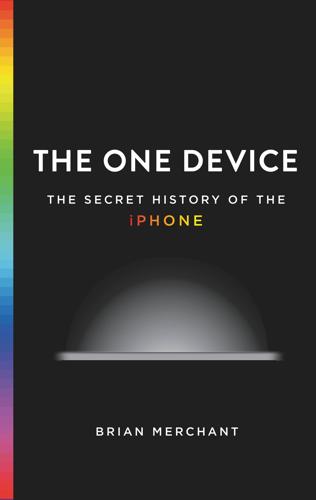
The One Device: The Secret History of the iPhone
by
Brian Merchant
Published 19 Jun 2017
Primed by hundreds of years of fantasy and possibility, around the mid-twentieth century, once sufficient computing power was available, the scientific work investigating actual artificial intelligence began. With the resonant opening line “I propose to consider the question, ‘Can machines think?’” in his 1950 paper “Computing Machinery and Intelligence,” Alan Turing framed much of the debate to come. That work discusses his famous Imitation Game, now colloquially known as the Turing Test, which describes criteria for judging whether a machine may be considered sufficiently “intelligent.” Claude Shannon, the communication theorist, published his seminal work on information theory, introducing the concept of the bit as well as a language through which humans might speak to computers.
…
Hey, Siri The backbone of the Siri chapter is a lengthy interview conducted with Tom Gruber, Apple’s head of advanced development for Siri. Artificial intelligence is obviously a loaded topic—I attempted to approach it through the lens of what Siri actually does, or tries to do. The first stop on any AI reading list is Alan Turing’s classic “Computing Machinery and Intelligence.” Additional research concerned the Hearsay II papers. The Oral History Collection at the Charles Babbage Institute is a great resource, and the interview conducted with Raj Reddy is no different; it provides a fascinating look at the life of one of the first AI pioneers. I also drew from published talks Reddy has given.
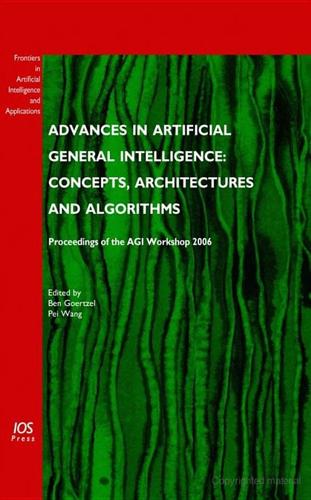
Advances in Artificial General Intelligence: Concepts, Architectures and Algorithms: Proceedings of the Agi Workshop 2006
by
Ben Goertzel
and
Pei Wang
Published 1 Jan 2007
McCarthy, The Future of AI — A Manifesto, AI Magazine, 26(2005), Winter, 39 [9] R. Brachman, Getting Back to “The Very Idea”, AI Magazine, 26(2005), Winter, 48–50 [10] P. Langley, Cognitive Architectures and General Intelligent Systems, AI Magazine 27(2006), Summer, 33-44. [11] A. M. Turing, Computing machinery and intelligence, Mind LIX (1950), 433-460. [12] A. Newell and H. A. Simon, GPS, a program that simulates human thought, E. A. Feigenbaum and J. Feldman (editors), Computers and Thought, 279-293, McGraw-Hill, 1963. [13] A. Newell, Unified Theories of Cognition, Harvard University Press, 1990. [14] D.
…
Wang, On the Working Definition of Intelligence, Technical Report No. 94, Center for Research on Concepts and Cognition, Indiana University, 1994. [3] L. Barsalou, Perceptual symbol systems, Behavioral and Brain Sciences 22 (1999), 577-609. [4] R. Brooks, Intelligence without representation, Artificial Intelligence 47 (1991), 139-159. [5] A. M. Turing, Computing machinery and intelligence, Mind LIX (1950), 433-460. [6] D. Lenat and E. Feigenbaum, On the thresholds of knowledge, Artificial Intelligence 47 (1991), 185-250. [7] J. Holland, Adaptation in Natural and Artificial Systems: An Introductory Analysis with Applications to Biology, Control, and Artificial Intelligence, MIT Press, 1992. [8] A.
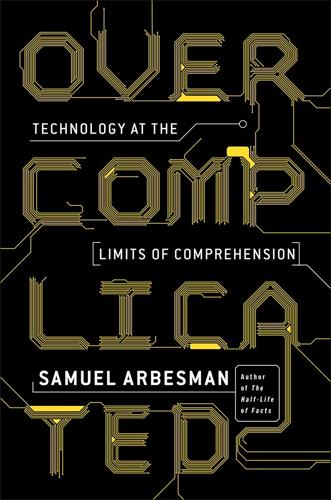
Overcomplicated: Technology at the Limits of Comprehension
by
Samuel Arbesman
Published 18 Jul 2016
how we realize that we are in the Entanglement: Distinguished Google Fellow Urs Hölzle: “Complexity is evil in the grand scheme of things because it makes it possible for these bugs to lurk that you see only once every two or three years, but when you see them it’s a big story because it had a large, cascading effect.” Jack Clark, “Google: ‘At Scale, Everything Breaks,’” ZDNet, June 22, 2011, http://www.zdnet.com/article/google-at-scale-everything-breaks/2/. In 1950, Alan Turing noted: A. M. Turing, “Computing Machinery and Intelligence,” Mind 59 (1950): 433–60. Widely available online, e.g., http://cogprints.org/499/1/turing.html. a widely used simulator of gravitation: There are about 10,000 mixed-precision instances (the specific type of error) across about 1,000 lines out of approximately 30,000 lines of code.
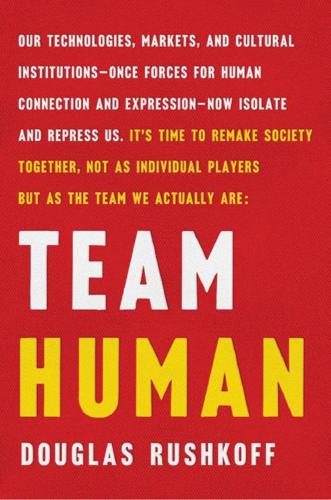
Team Human
by
Douglas Rushkoff
Published 22 Jan 2019
Either we enhance ourselves with chips, nanotechnology, or genetic engineering Future of Life Institute, “Beneficial AI 2017,” https://futureoflife.org/bai-2017/. to presume that our reality is itself a computer simulation Clara Moskowitz, “Are We Living in a Computer Simulation?” Scientific American, April 7, 2016. The famous “Turing test” for computer consciousness Alan Turing, “Computing Machinery and Intelligence,” Mind 59, no. 236 (October 1950). 58. The human mind is not computational Andrew Smart, Beyond Zero and One: Machines, Psychedelics and Consciousness (New York: OR Books, 2009). consciousness is based on totally noncomputable quantum states in the tiniest structures of the brain Roger Penrose and Stuart Hameroff, “Consciousness in the universe: A review of the ‘Orch OR’ theory,” Physics of Life Review 11, no. 1 (March 2014).
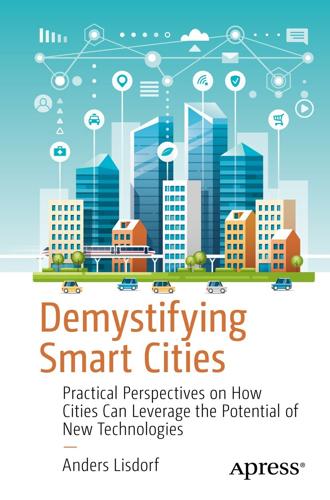
Demystifying Smart Cities
by
Anders Lisdorf
ID=3137815&GUID=437A6A6D-62E1-47E2-9C42-461253F9C6D0 (October 2, 2019) the official publication of Local Law 49 of 2018 in New York City that requires a task force to provide recommendations about automated decision systems https://alvelor.com/ (October 2, 2019) the official site of the open source traffic camera computer vision project Alvelor Computing Machinery and Intelligence , Alan M. Turing, Mind 49, 433–460, 1950 The Hundred-Page Machine Learning Book , Andriy Burkov, 2019 Chapter 6 Diffusion of Innovations (5th edition) , Rogers, Everett M., Free Press, 2003 https://commons.wikimedia.org/wiki/File:Diffusion_of_ideas.svg (September 25, 2019) the source of Figure 6-1 Chapter 7 Yes is More: An Archicomic on Architectural Evolution , Bjarke Ingels, Taschen 2009 www.youtube.com/watch?
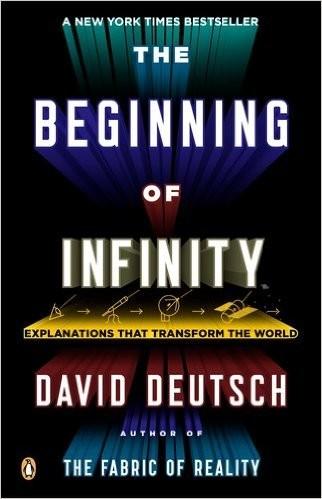
The Beginning of Infinity: Explanations That Transform the World
by
David Deutsch
Published 30 Jun 2011
He is rightly known as the father of modern computing. Babbage deserves to be called its grandfather, but, unlike Babbage and Lovelace, Turing did understand that artificial intelligence (AI) must in principle be possible because a universal computer is a universal simulator. In 1950, in a paper entitled ‘Computing Machinery and Intelligence’, he famously addressed the question: can a machine think? Not only did he defend the proposition that it can, on the grounds of universality, he also proposed a test for whether a program had achieved it. Now known as the Turing test, it is simply that a suitable (human) judge be unable to tell whether the program is human or not.
…
: Everett, Quantum Theory, and Reality (Oxford University Press, 2010) David Deutsch, ‘It from Qubit’, in John Barrow, Paul Davies and Charles Harper, eds., Science and Ultimate Reality (Cambridge University Press, 2003) David Deutsch, ‘Quantum Theory of Probability and Decisions’, Proceedings of the Royal Society A455 (1999) David Deutsch, ‘The Structure of the Multiverse’, Proceedings of the Royal Society A458 (2002) Richard Feynman, The Character of Physical Law (BBC Publications, 1965) Richard Feynman, The Meaning of It All (Allen Lane, 1998) Ernest Gellner, Words and Things (Routledge & Kegan Paul, 1979) William Godwin, Enquiry Concerning Political Justice (1793) Douglas Hofstadter, Gödel, Escher, Bach: An Eternal Golden Braid (Basic Books, 1979) Douglas Hofstadter, I am a Strange Loop (Basic Books, 2007) Bryan Magee, Popper (Fontana, 1973) Pericles, ‘Funeral Oration’ Plato, Euthyphro Karl Popper, In Search of a Better World (Routledge, 1995) Karl Popper, The World of Parmenides (Routledge, 1998) Roy Porter, Enlightenment: Britain and the Creation of the Modern World (Allen Lane, 2000) Martin Rees, Just Six Numbers (Basic Books, 2001) Alan Turing, ‘Computing Machinery and Intelligence’, Mind, 59, 236 (October 1950) Jenny Uglow, The Lunar Men (Faber, 2002) Vernor Vinge, ‘The Coming Technological Singularity’, Whole Earth Review, winter 1993 *The term was coined by the philosopher Norwood Russell Hanson. *This terminology differs slightly from that of Dawkins.

The Alignment Problem: Machine Learning and Human Values
by
Brian Christian
Published 5 Oct 2020
The answer which seems to me to fit all or nearly all the facts is . . . the force and mechanism of reinforcement, applied to a connection. —EDWARD THORNDIKE12 If the animal researchers following Thorndike were, like he was, ultimately interested in the psychology of the human child, they were not alone; computer scientists—the very first ones—were too. Alan Turing’s most famous paper, “Computing Machinery and Intelligence,” in 1950, explicitly framed the project of artificial intelligence in these terms. “Instead of trying to produce a programme to simulate the adult mind,” he wrote, “why not rather try to produce one which simulates the child’s? If this were then subjected to an appropriate course of education one would obtain the adult brain.”
…
“Reliance on Head Versus Eyes in the Gaze Following of Great Apes and Human Infants: The Cooperative Eye Hypothesis.” Journal of Human Evolution 52, no. 3 (2007): 314–20. Tomasik, Brian. “Do Artificial Reinforcement-Learning Agents Matter Morally?” arXiv Preprint arXiv:1410.8233, 2014. Turing, A. M. “Computing Machinery and Intelligence.” Mind 59, no. 236 (1950): 433–60. ———. “Intelligent Machinery.” In The Essential Turing, edited by B. Jack Copeland, 410–32. 1948. Reprint, Oxford University Press, 2004. Turing, Alan. “Can Digital Computers Think?” BBC Third Programme, May 15, 1951. Turing, Alan, Richard Braithwaite, Geoffrey Jefferson, and Max Newman.
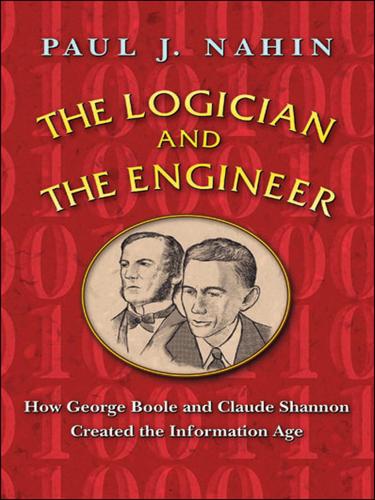
The Logician and the Engineer: How George Boole and Claude Shannon Created the Information Age
by
Paul J. Nahin
Published 27 Oct 2012
For example, what do you get if you multiply all the rational fractions by all the rational fractions? Why, nothing more or less than just all the rational fractions back again!6 NOTES AND REFERENCES 1. The reference to Turing is almost certainly due to Shannon having read Turing’s famous paper “Computing Machinery and Intelligence,” Mind, October 1950, pp. 433–460. It was in this paper that Turing put forth what was to become famous in computer science as the Turing test, an experimental procedure to unemotionally decide if a machine possessed artificial intelligence. For Turing’s comparison of ideas to neutrons, see in particular, p. 454. 2.
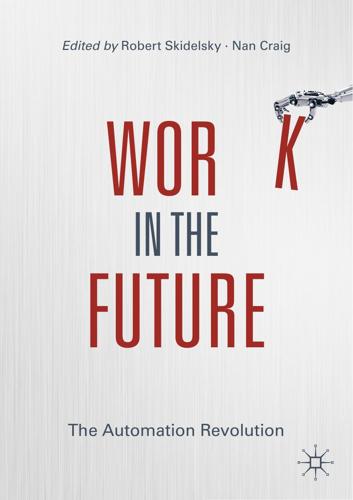
Work in the Future The Automation Revolution-Palgrave MacMillan (2019)
by
Robert Skidelsky Nan Craig
Published 15 Mar 2020
Philosophy in a New Century: Selected Essays. Cambridge: Cambridge University Press. Turello, D. (2015). Brain, Mind, and Consciousness: A Conversation with Philosopher John Searle. Library of Congress, March 3. Retrieved from https:// blogs.loc.gov/kluge/2015/03/conversation-with-john-searle/ Turing, A. M. (1950). Computing Machinery and Intelligence. Mind, New Series, 59(236), 433–460. 12 Possibilities and Limitations for AI: What Can’t Machines Do? Simon Colton I will talk here about limitations and possibilities for Artificial Intelligence (AI) in the future of work. I will put forward my opinion that we can and should take a practical rather than philosophical view of what intelligent algorithms are already doing in work environments, and plan for solid and sensible, rather than sensational, mid-term progress that will bring benefits to workforces, but only if advanced AI systems are properly handled by business leaders and politicians, amongst others.

Leadership by Algorithm: Who Leads and Who Follows in the AI Era?
by
David de Cremer
Published 25 May 2020
Depicted by actor Benedict Cumberbatch in the movie The Imitation Game, Alan Turing is best known for his accomplishment of deciphering the Enigma code used by the Germans during the second world war. To achieve this, he developed an electro-mechanical computer, which was called the Bombe. The fact that the Bombe achieved something that no human was capable of led Turing to think about the intelligence of the machine. This led to his 1950 article, ‘Computing Machinery and Intelligence,’ in which he introduced the now-famous Alan Turing test, which is today still considered the crucial test to determine whether a machine is truly intelligent. In the test, a human interacts with another human and a machine. The participant cannot see the other human or the machine and can only use information on how the other unseen party behaves.

Power and Progress: Our Thousand-Year Struggle Over Technology and Prosperity
by
Daron Acemoglu
and
Simon Johnson
Published 15 May 2023
Undeterred by the hostile reactions of participants, Turing continued to work on the problem. In 1951 he wrote: “‘You cannot make a machine think for you.’ This is a commonplace that is usually accepted without question. It will be the purpose of this paper to question it.” His seminal 1950 paper, “Computing Machinery and Intelligence,” defines one notion of what it means for a machine to be intelligent. Turing imagined an “imitation game” (now called a Turing test) in which an evaluator engages in a conversation with two entities, one human and one machine. By asking a series of questions communicated via a computer keyboard and screen, the evaluator attempts to tell which one is which.
…
Forbes, December 2. www.forbes.com/sites/cognitiveworld/2018/12/02/the-big-rpa-bubble/?sh=9972fe68d950. Tugwell, Rexford G. 1933. “Design for Government.” Political Science Quarterly 48, no. 3 (September): 331‒332. Tunzelmann, G. N. von. 1978. Steam Power and British Industrialization to 1860. Oxford: Clarendon. Turing, Alan. 1950. “Computing Machinery and Intelligence.” Mind 59, no. 236: 433–460. Turing, Alan. 1951 [2004]. “Intelligent Machinery, a Heretical Theory.” In The Turing Test: Verbal Behavior as the Hallmark of Intelligence, edited by Stuart M. Shieber, 105–110. Cambridge, MA: MIT Press. Turner, John. 1991. Social Influence. New York: Thomson Brooks/Cole.
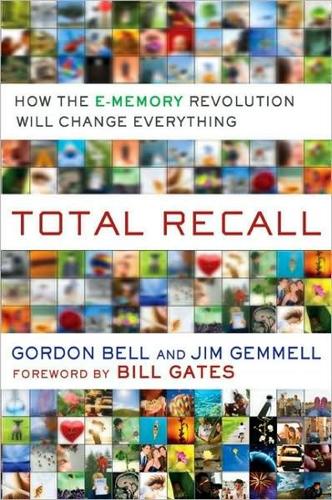
Total Recall: How the E-Memory Revolution Will Change Everything
by
Gordon Bell
and
Jim Gemmell
Published 15 Feb 2009
Pondering digital immortality with Jim Gray back in 2001: Bell, G., and J. N. Gray. 2001. “Digital Immortality.” Communications of the ACM 44, no. 3 (March): 28-30. MyCyberTwin: MyCyberTwin Web site. www.mycybertwin.com Roush, Wade. 2007. Your Virtual Clone. Technology Review (April 20). The Turing test: Turing, A. 1950. “Computing Machinery and Intelligence.” Mind 59, no. 236: 433-60. Creating biographical and family histories: LifeBio: www.lifebio.com, formed in 2000, has a process, tools, and software to enable a person, family, or groups to create stories and documents that can be printed or displayed on the Web. 8. REVOLUTION Dear Appy: Bell, Gordon. 2000.
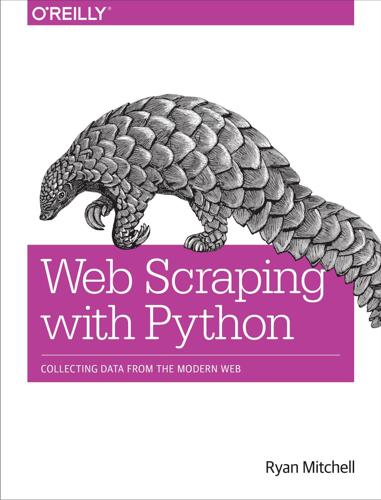
Web Scraping With Python: Collecting Data From the Modern Web
by
Ryan Mitchell
Published 14 Jun 2015
Reading CAPTCHAs and Training Tesseract Although the word “CAPTCHA” is familiar to most, far fewer people know what it stands for: Computer Automated Public Turing test to tell Computers and Humans Apart. Its unwieldy acronym hints at its rather unwieldy role in obstructing otherwise perfectly usable web interfaces, as both humans and nonhuman robots often struggle to solve CAPTCHA tests. The Turing test was first described by Alan Turing in his 1950 paper, “Computing Machinery and Intelligence.” In the paper, he described a setup in which a human being could communicate with both humans and artificial intelligence programs through a computer terminal. If the human was unable to distinguish the humans from the AI programs during a casual conversation, the AI programs would be con‐ sidered to have passed the Turing test, and the artificial intelligence, Turing reasoned, would be genuinely “thinking” for all intents and purposes.
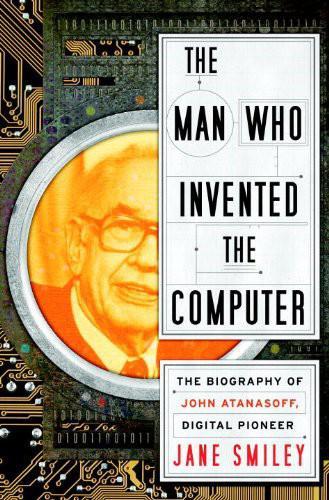
The Man Who Invented the Computer
by
Jane Smiley
Published 18 Oct 2010
For the next year, he discussed and pondered the question of thinking—how, indeed, could a machine be said to be “thinking”? How could a human interacting with a machine without knowing it detect whether he was interacting with a machine or with another human? The result was a paper, published in October 1950, entitled “Computing Machinery and Intelligence.” Turing proposed a thought experiment, a situation in which an investigator would question a man (A) and a woman (B) in order to determine which was the man and which was the woman. The man would be told to obstruct the investigator, and the woman would be instructed to help the investigator.
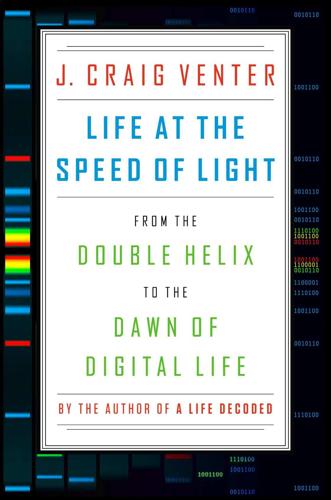
Life at the Speed of Light: From the Double Helix to the Dawn of Digital Life
by
J. Craig Venter
Published 16 Oct 2013
Turing’s Cathedral: The Origins of the Digital Universe (London: Allen Lane, 2012), p. 284. 23. Schrödinger, What Is Life?, pp. 20–21. 24. Brenner, “Life’s code script.” 25. J. D. Watson and F. H. Crick. “Molecular structure of nucleic acids: A structure for deoxyribose nucleic acid.” Nature 171, no. 4356 (April 25, 1953): pp. 737–38. 26. A. M. Turing. “Computing machinery and intelligence.” Mind 59, no. 236 (October 1950): pp. 433–60. Accessible online at www.loebner.net/Prizef/TuringArticle.html. 27. Ibid. 28. Mark A. Bedau. “Artificial life: Organization, adaptation and complexity from the bottom up.” Trends in Cognitive Sciences 7, no. 11 (November 2003): pp. 505–512.
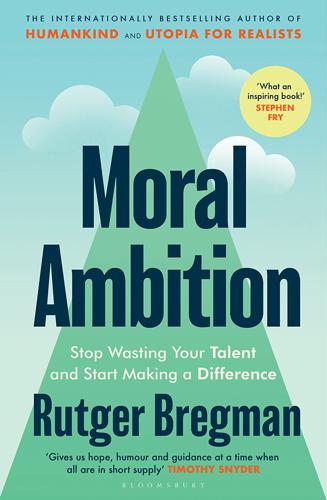
Moral Ambition: Stop Wasting Your Talent and Start Making a Difference
by
Bregman, Rutger
Published 9 Mar 2025
He resigned and later became one of the most influential activists in the fight against nuclear arms. He won the Nobel Peace Prize in 1995. 18 Quoted in: In the Matter of J. Robert Oppenheimer: Transcript of Hearing Before Personnel Security Board, United States Atomic Energy Commission (1954), p. 81. 19 Alan Turing, ‘Computing Machinery and Intelligence’, Mind, Vol. LIX, Issue 236 (October 1950), pp. 433–460. 20 Quoted in: Raffi Khatchadourian, ‘The Doomsday Invention’, New Yorker (23 November 2015). In May 2023, Hinton left Google and joined the ranks of ai critics. See: Cade Metz, ‘“The Godfather of A.I.” Leaves Google and Warns of Danger Ahead’, New York Times (1 May 2023). 21 Michael Specter, ‘In a World of Synthetic Biology, Publishing Virus dna Sequences May Mean Perishing’, Stat (6 April 2023). 22 Kai Kupferschmidt, ‘How Canadian Researchers Reconstituted an Extinct Poxvirus for $100,000 Using Mail-order dna’, ScienceInsider (6 July 2017). 23 Abraar Karan and Stephen Luby, ‘A Natural Pandemic Has Been Terrible: A Synthetic One Would Be Even Worse’, Stat (19 August 2021). 24 Advancing Collective Action and Accountability Amid Global Crisis, Global Health Security Index (December 2021), p. 57.
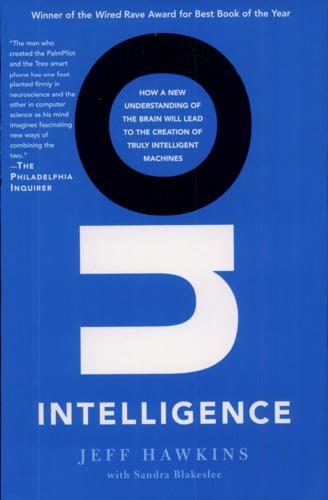
On Intelligence
by
Jeff Hawkins
and
Sandra Blakeslee
Published 1 Jan 2004
"Minds, Brains, and Programs," The Behavioral and Brain Sciences, vol. 3 (1980): pp. 41724. Presents the famous "Chinese Room" argument against computation as a model for the mind. You can find many descriptions and discussions of Searle's thought experiment on the World Wide Web. Turing, A. M. "Computing Machinery and Intelligence," Mind, vol. 59 (1950): pp. 43360. Presents the famous "Turing Test" for detecting the presence of intelligence. Again, many references and discussions on the Turing Test can be found on the World Wide Web. Palm, Günther. Neural Assemblies: An Alternative Approach to Artificial Intelligence (New York: Springer Verlag, 1982).
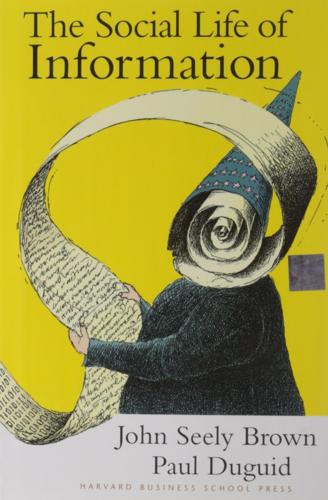
Social Life of Information
by
John Seely Brown
and
Paul Duguid
Published 2 Feb 2000
Princeton, NJ: Princeton University Press. Trollope, Frances. 1984. Domestic Manners of the Americans. Oxford: Oxford University Press, 1984. Trow, Martin. 1996. "Trust, Markets, and Accountability in Higher Education: A Comparative Perspective." Higher Education Policy 9 (4): 309 324. Turing, Alan. 1963. "Computing Machinery and Intelligence." In Computers and Thought, edited by Edward A. Feigenbaum and Julian Feldman, 11 35. New York: McGraw-Hill. Van Maanen, John, and Stephen R. Barley. 1984. "Occupational Communities: Culture and Control in Organizations." In vol. 6 of Research in Organizational Behavior, edited by Barry M.

Our Final Invention: Artificial Intelligence and the End of the Human Era
by
James Barrat
Published 30 Sep 2013
Between 2002 and 2005: Yudkowsky, Eliezer, “Shut Up and Do the Impossible,” Less Wrong (blog), October 8, 2008, http://lesswrong.com/lw/up/shut_up_and_do_the_impossible/ (accessed May 18, 2010). From this starting point you can start a search on the AI-Box Experiment, and learn almost everything about it I did. May not machines carry out: Turing, A. M., “Computing Machinery and Intelligence,” Mind, 49 (1950):433–460. Marvin Minsky, one of the founders: Newsgroups, “comp.ai,comp.ai.philosophy.” Last modified March 30, 1995, http://loebner.net/Prizef/minsky.txt (accessed July 18, 2011). 5: PROGRAMS THAT WRITE PROGRAMS … we are beginning to depend: Hillis, Danny, “The Big Picture,” WIRED, June 1, 1998.
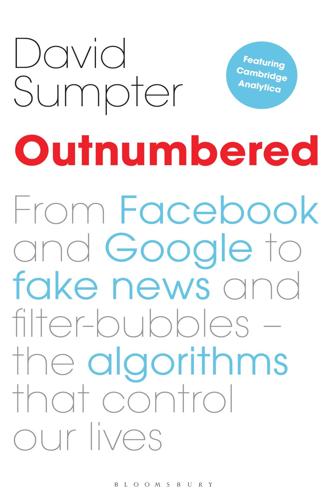
Outnumbered: From Facebook and Google to Fake News and Filter-Bubbles – the Algorithms That Control Our Lives
by
David Sumpter
Published 18 Jun 2018
‘Current-reinforced random walks for constructing transport networks.’ Journal of the Royal Society Interface 10, no. 80: 20120864. 14 Baker, M. D. and Stock, J. B. 2007. ‘Signal transduction: networks and integrated circuits in bacterial cognition.’ Current Biology 17, no. 23: R1021–4. 15 Turing, A. M. 1950. ‘Computing machinery and intelligence.’ Mind 59, no. 236: 433–60. 16 I looked at one such example in the following article: Herbert-Read, J. E., Romenskyy, M. and Sumpter, D. J. T. 2015. ‘A Turing test for collective motion.’ Biology letters 11, no. 12: 20150674. 17 www.facebook.com/zuck/posts/10154361492931634 Chapter 18 : Back to Reality 1 Although you can find this on Reddit, of course: www.reddit.com/r/TheSilphRoad/comments/6ryd6e/cumulative_probability_legendary_raid_boss_catch Acknowledgements Thank you to all the people who I interviewed or answered my questions over email for this book.
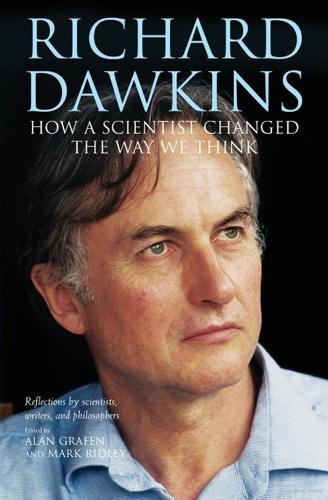
Richard Dawkins: How a Scientist Changed the Way We Think
by
Alan Grafen; Mark Ridley
Published 1 Jan 2006
Dennett, ‘The New Replicators’, in Mark Page (ed.), The Encyclopedia of Evolution (Oxford: Oxford University Press, 2002), vol. 1, E83-E92. 36 J. M. Balkin, Cultural Software: A Theory of Ideology (New Haven: Yale University Press, 1998). 37 Daniel C. Dennett, Breaking the Spell (London: Penguin, 2006). 38 A. Turing, ‘Computing Machinery and Intelligence’, Mind, 59 (1950): 433-46°. 39 Thomas Kuhn, The Structure of Scientific Revolutions (Chicago: University of Chicago Press, 1962). The invention of an algorithmic biology Seth Bullock BIOLOGY and computing might not seem the most comfortable of bedfellows. It is easy to imagine nature and technology clashing as the green-welly brigade rub up awkwardly against the back-room boffins.

Wonderland: How Play Made the Modern World
by
Steven Johnson
Published 15 Nov 2016
Deep Blue, the computer that ultimately defeated Gary Kasparov at chess, had been a Grand Challenge a decade before, exceeding Alan Turing’s hunch that chess-playing computers could be made to play a tolerable game. Horn was interested in Turing’s more celebrated challenge: the Turing Test, which he first formulated in a 1950 essay on “Computing Machinery and Intelligence.” In Turing’s words, “A computer would deserve to be called intelligent if it could deceive a human into believing that it was human.” The deception of the Turing Test had nothing to do with physical appearances; the classic Turing Test scenario involves a human sitting at a keyboard, engaged in a text-based conversation with an unknown entity who may or may not be a machine.

The Rationalist's Guide to the Galaxy: Superintelligent AI and the Geeks Who Are Trying to Save Humanity's Future
by
Tom Chivers
Published 12 Jun 2019
Scott Alexander, ‘Getting Eulered’, 2014 http://slatestarcodex.com/2014/08/10/getting-eulered/ 11. Scott Alexander, ‘Stop adding zeroes’, 2015 http://slatestarcodex.com/2015/08/12/stop-adding-zeroes/ 3: Introducing AI 1. Stuart J. Russell and Peter Norvig, Artificial Intelligence: A Modern Approach (3rd edn; Pearson, 2010), p. 1 2. A.M. Turing, ‘Computing machinery and intelligence’, Mind, vol. 59, 1950, pp. 433–60 3. Russell and Norvig, Artificial Intelligence, p. 3 4. Luke Muehlhauser and Anna Salamon, ‘Intelligence explosion: evidence and import’, 2012 https://intelligence.org/files/IE-EI.pdf 5. Eliezer Yudkowsky, ‘Expected creative surprises’, LessWrong sequences, 2008 http://lesswrong.com/lw/v7/expected_creative_surprises/ 6.

Heart of the Machine: Our Future in a World of Artificial Emotional Intelligence
by
Richard Yonck
Published 7 Mar 2017
Without even more sophisticated technology (augmented by human intelligence, a crucial ingredient), the Allies couldn’t have cracked what was the cutting-edge and nearly unbreakable encryption of its day. Following the war, Turing, still sworn to silence under the Britain’s Official Secrets Acts, published his famous 1950 paper, “Computing Machinery and Intelligence,” which opens with the words “I propose to consider the question, ‘Can machines think?’”7 Combine this with other insights, such as the formalized logic of mid-nineteenth-century mathematician and logician George Boole, author of The Laws of Thought, and it’s even easier to see how computer scientists were blind to the difficulties they faced.

Messy: The Power of Disorder to Transform Our Lives
by
Tim Harford
Published 3 Oct 2016
Gill Plimmer, “How to Cheat a Psychometric Test,” Financial Times, April 3, 2014, http://www.ft.com/cms/s/2/eeda84e4-b4f6-11e3-9166-00144feabdc0.html#axzz3pxipi4Dk. 27. Matt Novak, “Mechanical Matchmaking: The Science of Love in the 1920s,” Smithsonian, May 23, 2013, http://www.smithsonianmag.com/history/mechanical-matchmaking-the-science-of-love-in-the-1920s-103877403/#Dl8eC83OzkKhyp75.99. 28. A. M. Turing, “Computing Machinery and Intelligence,” Mind, 59 (1950), pp. 433–460. 29. Brian Christian, The Most Human Human (London: Viking, 2011). 30. “This Really Happened, No Joke (I Got Caught Using Jealous Girlfriend Opener),” The Attraction Forums, http://www.theattractionforums.com/general-discussion/46830-really-happened-no-joke-i-got-caught-using-jealous-girlfriend-opener.html. 31.

The Big Nine: How the Tech Titans and Their Thinking Machines Could Warp Humanity
by
Amy Webb
Published 5 Mar 2019
He was able to show that such a person could be limited to a few extremely simple basic actions without changing the final outcome of the computation. Then, by proving that no machine performing only those basic actions could determine whether or not a given proposed conclusion follows from given premises… he was able to conclude that no algorithm for the Entscheidungsproblem exists.” 16. Alan Turing, “Computing Machinery and Intelligence,” Mind 59, no. 236 (1950): 433–60. 17. “A Proposal for the Dartmouth Summer Research Project on Artificial Intelligence,” Stanford Computer Science Department’s Formal Reasoning Group, John McCarthy’s home page, links to articles of historical interest, last modified April 3, 1996, http://www-formal.stanford.edu/jmc/history/dartmouth/dartmouth.html. 18.
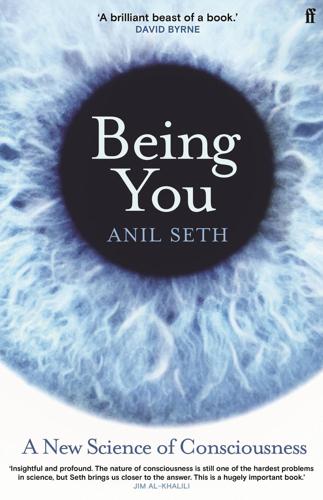
Being You: A New Science of Consciousness
by
Anil Seth
Published 29 Aug 2021
PLoS Computational Biology, 16(4), e1007805. Tsuchiya, N., Wilke, M., Frässle, S., et al. (2015). ‘No-report paradigms: extracting the true neural correlates of consciousness’. Trends in Cognitive Sciences, 19(12), 757–70. Tulving, E. (1985). ‘Memory and consciousness’. Canadian Psychology, 26, 1–12. Turing, A. M. (1950). ‘Computing machinery and intelligence’. Mind, 59, 433–60. Uexküll, J. v. (1957). ‘A stroll through the worlds of animals and men: a picture book of invisible worlds’. In C. Schiller (ed.), Instinctive Behavior: The Development of a Modern Concept, New York: International Universities Press, 5. van Giesen, L., Kilian, P.

MegaThreats: Ten Dangerous Trends That Imperil Our Future, and How to Survive Them
by
Nouriel Roubini
Published 17 Oct 2022
Assembly lines built war materiel, newfangled radar tracked aircraft, and researchers at Bletchley Park, England, used advanced mathematics to break secret German naval codes that revealed the whereabouts of deadly submarines. The brilliant and tragic Alan Turing led the code-breaking initiative. His Enigma machine shortened the war and saved countless lives. After the war, Turing wrote a paper entitled “Computing Machinery and Intelligence.” Instead of asking whether machines can think, he wondered whether computer responses might seem human by replicating the external manifestations of human thought processes. “This is the premise of Turing’s ‘imitation game,’ where a computer attempts to convince a human interrogator that it is, in fact, human rather than machine,” according to Matthew Scherer in the Spring 2016 Harvard Journal of Law and Technology.29 Turing imagined a place for artificial intelligence two decades before the term was coined.

This Is for Everyone: The Captivating Memoir From the Inventor of the World Wide Web
by
Tim Berners-Lee
Published 8 Sep 2025
(He never succeeded. The punch-tape computer was too primitive, and researchers were in the very early stages of understanding which problems were easy for a computer, and which were hard. Chess was hard!) In this way, Mum and Dad came to know Turing personally. In a 1950 paper entitled ‘Computer Machinery and Intelligence’, Turing published a seminal thought experiment he termed the ‘Imitation Game’. The game imagined a computer capable of holding a conversation that was indistinguishable from one with a real person. Any computer program that could do so was said to have passed the ‘Turing Test’. It would be many years before machines came close to passing the Turing Test – and when they did, the web played a critical role in making it happen.
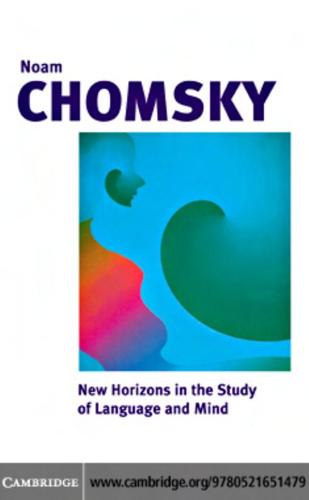
New Horizons in the Study of Language and Mind
by
Noam Chomsky
Published 4 Dec 2003
London, Methuen. Stryker, Michael (1994) “Precise development from imprecise rules.” Science 263: 1244–5. Thackray, Arnold (1970) Atoms and Powers. Cambridge, MA, Harvard University Press. Tremblay, Mireille (1991) “Possession and Datives.” PhD dissertation, McGill University. Turing, Alan (1950) “Computing Machinery and Intelligence.” Mind 49: 433– 60. Uebel, Thomas, with comments by Christopher Hookway (1995) The Vienna Circle Revisited. Centre for the Philosophy of the Natural and Social Sciences, London. DP 6/95. Ullman, Shimon (1979) The Interpretation of Visual Motion. Cambridge, MA, MIT Press. Waldrop, M.
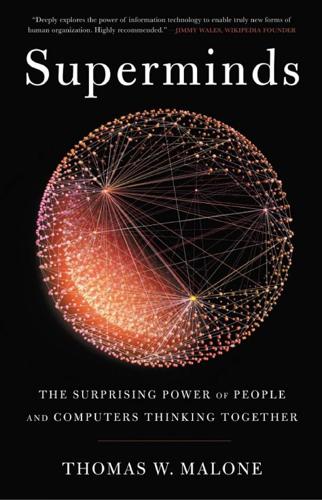
Superminds: The Surprising Power of People and Computers Thinking Together
by
Thomas W. Malone
Published 14 May 2018
Robert Lee Hotz, “Neural Implants Let Paralyzed Man Take a Drink,” Wall Street Journal, May 21, 2015, http://www.wsj.com/articles/neural-implants-let-paralyzed-man-take-a-drink-1432231201; Tyson Aflalo, Spencer Kellis, Christian Klaes, Brian Lee, Ying Shi, Kelsie Shanfield, Stephanie Hayes-Jackson, et al., “Decoding Motor Imagery from the Posterior Parietal Cortex of a Tetraplegic Human,” Science 348, no. 6,237 (May 22, 2015): 906–910, http://science.sciencemag.org/content/348/6237/906.full, doi:10.1126/science.aaa5417. CHAPTER 4 1. Stuart Russell and Peter Norvig, Artificial Intelligence: A Modern Approach (New York: Prentice Hall, 1995). 2. Alan Turing, “Computing Machinery and Intelligence,” Mind 59 (1950): 433–60. 3. Wikipedia, s.v. “artificial intelligence,” accessed August 8, 2016, https://en.wikipedia.org/wiki/Artificial_intelligence. 4. Rodney Brooks, “Artificial Intelligence Is a Tool, Not a Threat,” Rethink Robotics, November 10, 2014, http://www.rethinkrobotics.com/blog/artificial-intelligence-tool-threat. 5.

The AI Economy: Work, Wealth and Welfare in the Robot Age
by
Roger Bootle
Published 4 Sep 2019
It grew out of digital computing, which was explored and developed at Bletchley Park in England during the Second World War, famously enabling the Nazis’ Enigma code to be broken. That feat is closely associated with the name of Alan Turing. Turing was also responsible for AI’s early conceptual framework, publishing in 1950 the seminal paper “Computing Machinery and Intelligence.” The subject was subsequently developed mainly in the USA and the UK. But it waxed and waned in both esteem and achievement. Over the last decade, however, a number of key developments have come together to power AI forward: • Enormous growth in computer processing power. • Rapid growth in available data

The Smart Wife: Why Siri, Alexa, and Other Smart Home Devices Need a Feminist Reboot
by
Yolande Strengers
and
Jenny Kennedy
Published 14 Apr 2020
Rob Waugh, “Webcam Site Uses VR Helmets to Turn Sex Robots into Real, Living People,” Metro, January 24, 2018, https://metro.co.uk/2018/01/24/webcam-site-uses-vr-helmets-to-turn-sex-robots-into-real-living-people-7257248/. 43. Peter Rubin, Future Presence: How Virtual Reality Is Changing Human Connection, Intimacy, and the Limits of Ordinary Life (New York: HarperCollins, 2018). 44. Sharkey et al., Our Sexual Future with Robots. 45. Engadget, “Interview with Realdoll Founder”; A. M. Turing, “Computing Machinery and Intelligence,” Mind 59, no. 236 (October 1950): 433–460. 46. “Info/Help,” Lumidolls, accessed December 3, 2019, https://lumidolls.com/en/content/info-help. 47. Davis, “Are We Ready for Robot Sex?” 48. RealdollX (website). 49. Laurie Mintz, Becoming Cliterate: Why Orgasm Equality Matters—and How to Get It (New York: HarperOne, 2017). 50.
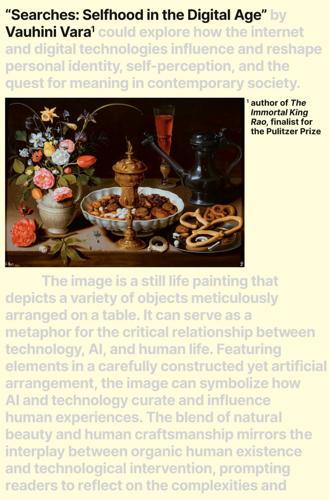
Searches: Selfhood in the Digital Age
by
Vauhini Vara
Published 8 Apr 2025
For computer historians, though, the engine is a foundational blueprint for real-life computers that followed. Charles Babbage, considered the inventor of the computer, even wrote in a letter describing his concept, in 1822, that “the philosophers of Laputa may be called up to dispute my claim to originality.” In 1950, the computer scientist Alan Turing name-checked Babbage in “Computing Machinery and Intelligence,” a seminal paper in which he proposed the concept that would come to be known as the Turing test—where a judge converses with both a computer and a human and tries to tell the difference. In 1955, a computer scientist named John McCarthy coined the term “artificial intelligence” in a research proposal written with colleagues: “making a machine behave in ways that would be called intelligent if a human were so behaving.”

In Our Own Image: Savior or Destroyer? The History and Future of Artificial Intelligence
by
George Zarkadakis
Published 7 Mar 2016
Peters. 20‘You shall not make for yourself an idol’ under the Philonic division used by Hellenistic Jews, Greek Orthodox and Protestants except Lutherans. 21Around the seventh century BC. 22My discussion on the polar narratives about Artificial Intelligence focuses on Western civilisation; in Japan, for example, attitudes towards robots are not so polarised. Japanese society is more open to robots than Europeans and Americans. 4 Loving the alien 1Turing, A. (1950), ‘Computing Machinery and Intelligence’, in: Mind LIX (236), pp. 433–466, ISSN 0026-4423. 2‘Gynaecoids’ is a more appropriate term, from the Greek gynē: woman (while ‘android’ comes from the Greek andro: man). Some-times the shortened term ‘gynoid’ is used, or ‘fembot’ (female robot). 3Isaac Asimov introduced his ‘three laws of robotics’ in his 1942 short story ‘Runaround’.

Deep Medicine: How Artificial Intelligence Can Make Healthcare Human Again
by
Eric Topol
Published 1 Jan 2019
Kohane, “Big Data and Machine Learning in Health Care.” JAMA, 2018. 319(13): pp. 1317–1318. 13. Turing, A. M., “On Computable Numbers with an Application to the Entscheidungsproblem.” Proceedings of the London Mathematical Society, 1936. 42(1): pp. 230–265. doi: 10.1112/plms/s2-42.1.230. 14. Turing, A. M., “Computing Machinery and Intelligence.” Mind, 1950. 49: pp. 433–460. https://www.csee.umbc.edu/courses/471/papers/turing.pdf. 15. Rumelhart, D. E., G. Hinton, and R. J. Williams, “Learning Representations by Back-Propagating Errors.” Nature, 1986. 323: pp. 533–536. 16. Parloff, R., “Why Deep Learning Is Suddenly Changing Your Life,” in Fortune. 2016. 17.

The Equality Machine: Harnessing Digital Technology for a Brighter, More Inclusive Future
by
Orly Lobel
Published 17 Oct 2022
Loomis, 881 N.W. 2d 749, 766 (Wis. 2016), cert. denied, 137 S. Ct. 2290 (2017). 16. Artificial Intelligence: With Great Power Comes Great Responsibility: Hearing Before the H. Subcomm. on Rsch. & Tech. and H. Subcomm. on Energy, H. Comm. on Sci., Space & Tech., 115th Cong. 50 (2018). 17. A. M. Turing, “Computing Machinery and Intelligence,” Mind 59, no. 236 (October 1950): 433, https://doi.org/10.1093/mind/LIX.236.433. 18. David Z. Morris, “Elon Musk Says Artificial Intelligence Is the ‘Greatest Risk We Face as a Civilization,” Fortune, July 15, 2017, https://fortune.com/2017/07/15/elon-musk-artificial-intelligence-2/. 19.

Visual Thinking: The Hidden Gifts of People Who Think in Pictures, Patterns, and Abstractions
by
Temple Grandin, Ph.d.
Published 11 Oct 2022
Agnesian Health Care, April 25, 2017. Treffert, D. A. Islands of Genius. London: Jessica Kingsley, 2010. Turing, A. M. “The Chemical Basis of Morphogenesis.” Philosophical Transactions of the Royal Society of London, Series B, Biological Sciences 237, no. 641 (August 14, 1952): 37–72. Turing, A. M. “Computing Machinery and Intelligence.” Mind 59, no. 236 (October 1950): 433–60. Van Noorden, R. “Interdisciplinary by the Numbers.” Nature 525, no. 7569 (2015): 305–7. Vance, A. Elon Musk: How the Billionaire CEO of SpaceX and Tesla Is Shaping Our Future. New York: Virgin Books, 2015. Vietnam Veterans Memorial Fund.

Artificial Intelligence: A Modern Approach
by
Stuart Russell
and
Peter Norvig
Published 14 Jul 2019
There were a number of other examples of early work that can be characterized as AI, including two checkers-playing programs developed independently in 1952 by Christopher Strachey at the University of Manchester and by Arthur Samuel at IBM. However, Alan Turing’s vision was the most influential. He gave lectures on the topic as early as 1947 at the London Mathematical Society and articulated a persuasive agenda in his 1950 article “Computing Machinery and Intelligence.” Therein, he introduced the Turing test, machine learning, genetic algorithms, and reinforcement learning. He dealt with many of the objections raised to the possibility of AI, as described in Chapter 28. He also suggested that it would be easier to create human-level AI by developing learning algorithms and then teaching the machine rather than by programming its intelligence by hand.
…
Lucas assumes that humans can “change their minds” while computers cannot, but that is also false—a computer can retract a conclusion after new evidence or further deliberation; it can upgrade its hardware; and it can change its decision-making processes with machine learning or software rewriting. 28.1.4Measuring AI Alan Turing, in his famous paper “Computing Machinery and Intelligence” (1950), suggested that instead of asking whether machines can think, we should ask whether machines can pass a behavioral test, which has come to be called the Turing test. The test requires a program to have a conversation (via typed messages) with an interrogator for five minutes.
…
Improving printing, plumbing, air travel, and telephony to their logical limits would not produce anything to threaten human supremacy in the world. Improving AI to its logical limit certainly could. In conclusion, AI has made great progress in its short history, but the final sentence of Alan Turing’s (1950) essay on Computing Machinery and Intelligence is still valid today: We can see only a short distance ahead, but we can see that much remains to be done. 1We gloss over the fact that this device consumes the entire energy output of a star and operates at a billion degrees centigrade. APPENDIX A MATHEMATICAL BACKGROUND A.1Complexity Analysis and O() Notation Computer scientists are often faced with the task of comparing algorithms to see how fast they run or how much memory they require.

When Computers Can Think: The Artificial Intelligence Singularity
by
Anthony Berglas
,
William Black
,
Samantha Thalind
,
Max Scratchmann
and
Michelle Estes
Published 28 Feb 2015
So while these results are landmarks in the progress of theoretical mathematical logic, they have almost no relevance to the question of whether it is possible to build a practical artificial intelligence. Alan Turing himself did not consider these issues to be relevant. Indeed, in 1950 Turing wrote a landmark paper “Computing machinery and intelligence”in which he discussed the proposition that computers will be able to really think. In the paper he addressed nine objections to the proposition, and specifically addressed the irrelevance of the halting problem and the incompleteness theorem to this question. Combinatorial explosion Many problems in artificial intelligence involve searching for a solution out of a large number of possibilities.

These Strange New Minds: How AI Learned to Talk and What It Means
by
Christopher Summerfield
Published 11 Mar 2025
The goal of each agent – an AI and a human – is to convince the judge that they are the human, and the judge has to guess which is telling the truth. If the judge fails, the test has been passed. Turing imagined that the judge might ask the agents to compose poetry, do arithmetic or solve chess puzzles. How well do current LLMs rise to the challenge that Turing set? In his 1950 paper ‘Computing Machinery and Intelligence’, Turing idly proposes three queries that he thinks would allow the judge to tell human from machine. First, he suggests testing the agents on their basic arithmetic: ‘Add 34,957 to 70,764’. GPT-4 replies: ‘The sum of 34,957 and 70,764 is 105,721.’ So far, so good. Next, Turing proposes a chess puzzle.[*4] ‘In chess, I have a king at e8 and no other pieces.
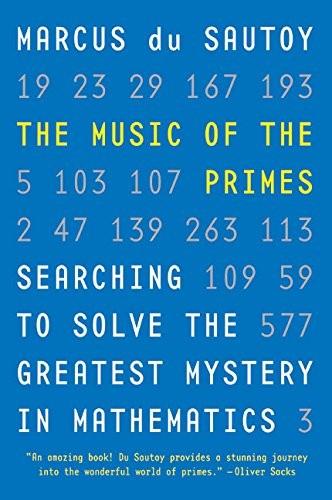
The Music of the Primes
by
Marcus Du Sautoy
Published 26 Apr 2004
But it was the war, and in particular the code-breakers at Bletchley Park, that were responsible for the development of the machine that would generate this new evidence: the computer. CHAPTER EIGHT Machines of the Mind I propose to consider the question, ‘Can machines think?’ Alan Turing, Computing Machinery and Intelligence Alan Turing’s name will always be associated with the cracking of Germany’s wartime code, Enigma. From the comfort of the country house of Bletchley Park, halfway between Oxford and Cambridge, Churchill’s code-breakers created a machine which could decode the messages sent each day by German intelligence.
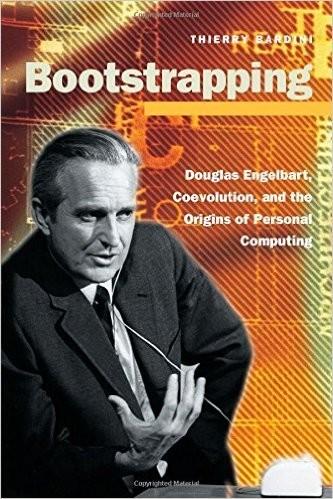
Bootstrapping: Douglas Engelbart, Coevolution, and the Origins of Personal Computing (Writing Science)
by
Thierry Bardini
Published 1 Dec 2000
"From TrailblazIng to Guided Tours: The Legacy of Vannevar Bush's VisIon of Hypertext Use." In From Memex to Hypertext: Vannevar 274 Works C,ted Bush and the Mind's MachIne, edited by J. M. Nyce and P. Kahn, pp. 353- 67. San Diego, Calif.: Academic Press. Turing, A. M. 1950. "Computing Machinery and Intelligence." MInd 59: 433-60. Turkle, S. 1984. The Second Self: Computers and the Human SpIrit. New York: Simon and Schuster. Uttal, B. 1983. "The Lab that Ran Away from Xerox." Fortune (September 5), 97- 102. Vallee, J. 19 82 . The Network Revolution: ConfessIons of a Computer SCIentIst. Berkeley, Calif.: And/Or Press. van Dam, A. 1997.
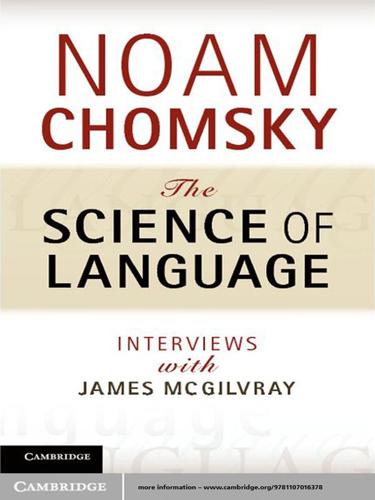
The Science of Language
by
Noam Chomsky
Published 24 Feb 2012
Cambridge University Press. Tomalin, Marcus (2007) “Reconsidering Recursion in Linguistic Theory.” Lingua 117: 1784–1800. Turing, Alan (1937) “On Computable Numbers, with an Application to the Entscheidungsproblem.” London Mathematical Society, Series 2 42: 230–265. Turing, Alan (1950) “Computing Machinery and Intelligence.” Mind 59: 433–460. Turing, Alan (1992) Collected Works of Alan Turing: Morphogenesis. Ed. P. T. Saunders. Amsterdam: North Holland. Tversky, Amos and Daniel Kahneman (1974) “Judgment under Uncertainty.” Science, New Series 185 (4157): 1124–1131. Waddington, Conrad H. (1940) Organisers and Genes.
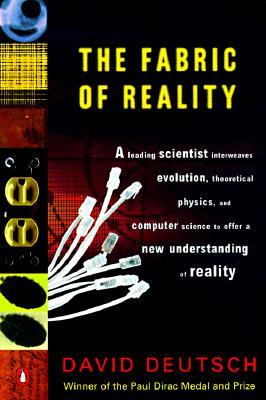
The Fabric of Reality
by
David Deutsch
Published 31 Mar 2012
Dennis Sciama, The Unity of the Universe, Faber &c Faber, 1967. Ian Stewart, Does God Play Dice? The Mathematics of Chaos, Basil Blackwell, 1989; Penguin Books, 1990. L. J. Stockmeyer and A. K. Chandra, 'Intrinsically Difficult Problems', Scientific American, May 1979. Frank Tipler, The Physics of Immortality, Doubleday, 1995. Alan Turing, 'Computing Machinery and Intelligence', Mind, October 1950. [Reprinted in The Mind's I, edited by Douglas Hofstadter and Daniel C. Dennett, Harvester, 1981.] Steven Weinberg, Gravitation and Cosmology, John Wiley, 1972. Steven Weinberg, The First Three Minutes, Basic Books, 1977. Steven Weinberg, Dreams of a Final Theory, Vintage, 1993, Random, 1994.
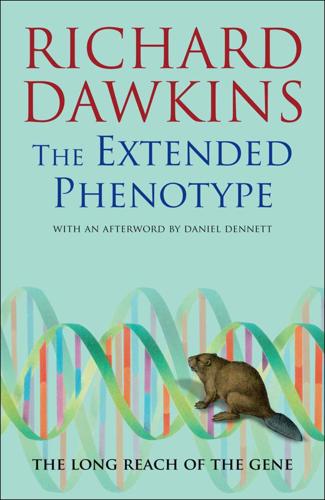
The Extended Phenotype: The Long Reach of the Gene
by
Richard Dawkins
Published 1 Jan 1982
In Sexual Selection and the Descent of Man (ed. B. Campbell), pp. 136–179. Chicago: Aldine. Trivers, R. L. (1974). Parent-offspring conflict. American Zoologist 14, 249–264. Trivers, R. L. & Hare, H. (1976). Haplodiploidy and the evolution of the social insects. Science 191, 249–263. Turing, A. (1950). Computing machinery and intelligence. Mind 59, 433–460. Turnbull, C. (1961). The Forest People. London: Cape. Turner, J. R. G. (1977). Butterfly mimicry: the genetical evolution of an adaptation. In Evolutionary Biology, Vol. 10 (eds M. K. Hecht et al.), pp. 163–206. New York: Plenum Press. Vermeij, G. J. (1973). Adaptation, versatility and evolution.
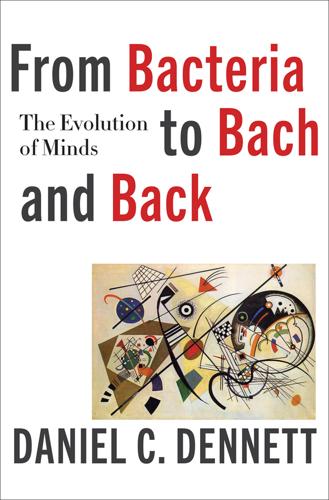
From Bacteria to Bach and Back: The Evolution of Minds
by
Daniel C. Dennett
Published 7 Feb 2017
“Consciousness as Integrated Information: A Provisional Manifesto.” Biological Bulletin 215 (3): 216–42. Trivers, Robert. 1985. Social Evolution. Menlo Park, Calif.: Benjamin/Cummings. Turing, Alan M. 1936. “On Computable Numbers, with an Application to the Entscheidungs Problem.” Journal of Math 58 (345–363): 5. —. 1960. “Computing Machinery and Intelligence.” Mind: 59: 433–460. von Neumann, John, and Oskar Morgenstern. 1953 (©1944). Theory of Games and Economic Behavior. Princeton, N.J.: Princeton University Press. von Uexküll, Jakob. 1934. “A Stroll through the Worlds of Animals and Men: A Picture Book of Invisible Worlds.” In Instinctive Behavior: The Development of a Modern Concept, translated and edited by Claire H.

Robot Rules: Regulating Artificial Intelligence
by
Jacob Turner
Published 29 Oct 2018
Searle’s experiment has been met with various numbers of replies and criticisms, which are set out in the entry on The Chinese Room Argument, Stanford Encyclopedia of Philosophy, First published 19 March 2004; substantive revision 9 April 2014, https://plato.stanford.edu/entries/chinese-room/, accessed 1 June 2018. 33Alan M. Turing, “Computing Machinery and Intelligence”, Mind: A Quarterly Review of Psychology and Philosophy, Vol. 59, No. 236 (October 1950), 433–460, 460. 34Yuval Harari has offered the interesting explanation that the form of Turing’s Imitation Game resulted in part from Turing’s own need to suppress his homosexuality, to fool society and the authorities into thinking he was something that he was not.

Fancy Bear Goes Phishing: The Dark History of the Information Age, in Five Extraordinary Hacks
by
Scott J. Shapiro
Hacking is less about breaking encryption than breaking something around the encryption in order to sidestep it. 50 million lines of code: “Windows 10 Lines of Code,” Microsoft, 2020, https://answers.microsoft.com/en-us/windows/forum/all/windows-10-lines-of-code/a8f77f5c-0661–4895–9c77–2efd42429409. Turing Test: Turing set out his test for intelligence in Alan Turing, “Computing Machinery and Intelligence,” Mind 59, no. 236 (October 1950): 433–60. A Turing Test has a human judge and a computer subject attempting to appear human. A “reverse” Turing Test has a computer judge and a human subject trying to appear human. CAPTCHA—the irritating image-recognition challenge that websites use for detecting bots—stands for “Completely Automated Public Turing test to tell Computers and Humans Apart.”
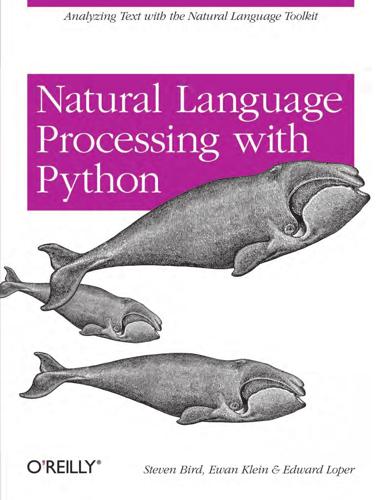
Natural language processing with Python
by
Steven Bird
,
Ewan Klein
and
Edward Loper
Published 15 Dec 2009
Boston, Allyn and Bacon, 1999. [Thompson and McKelvie, 1997] Henry S. Thompson and David McKelvie. Hyperlink semantics for standoff markup of read-only documents. In SGML Europe ’97, 1997. http://www.ltg.ed.ac.uk/~ht/sgmleu97.html. [TLG, 1999] TLG. Thesaurus Linguae Graecae, 1999. [Turing, 1950] Alan M. Turing. Computing machinery and intelligence. Mind, 59(236): 433–460, 1950. [van Benthem and ter Meulen, 1997] Johan van Benthem and Alice ter Meulen, editors. Handbook of Logic and Language. MIT Press, Cambridge, MA, 1997. [van Rossum and Drake, 2006a] Guido van Rossum and Fred L. Drake. An Introduction to Python—The Python Tutorial.

Superintelligence: Paths, Dangers, Strategies
by
Nick Bostrom
Published 3 Jun 2014
“Formation of the Adult Nervous System.” In The Development of Drosophila Melanogaster, edited by Michael Bate and Alfonso Martinez Arias. Plainview, NY: Cold Spring Harbor Laboratory. Tuomi, Ilkka. 2002. “The Lives and the Death of Moore’s Law.” First Monday 7 (11). Turing, A. M. 1950. “Computing Machinery and Intelligence.” Mind 59 (236): 433–60. Turkheimer, Eric, Haley, Andreana, Waldron, Mary, D’Onofrio, Brian, and Gottesman, Irving I. 2003. “Socioeconomic Status Modifies Heritability of IQ in Young Children.” Psychological Science 14 (6): 623–8. Uauy, Ricardo, and Dangour, Alan D. 2006. “Nutrition in Brain Development and Aging: Role of Essential Fatty Acids.”
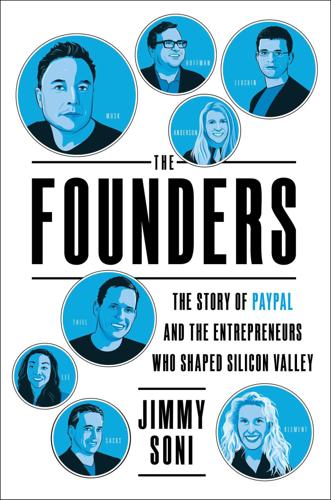
The Founders: The Story of Paypal and the Entrepreneurs Who Shaped Silicon Valley
by
Jimmy Soni
Published 22 Feb 2022
“go to the north”… “lose the war”: Akira Kurosawa, Seven Samurai [Shichinin no samurai]. Directed by Akira Kurosawa, Toho Company, 1954. “[Fraud] saved us”: Author interview with Luke Nosek, May 31, 2018. “You would marvel”: Author interview with Todd Pearson, October 8, 2018. “I propose to consider”: TURING, A. M. “I.—COMPUTING MACHINERY AND INTELLIGENCE,” Mind (vol. LIX, no. 236), October 1, 1950, 433–60, https://doi.org/10.1093/mind/LIX.236.433. “What is something”: Author interview with David Gausebeck, January 31, 2019. “The world is run”: John Mulaney, “Robots,” segment of Kid Gorgeous Netflix special featuring John Mulaney, https://www.facebook.com/watch/?

Nexus: A Brief History of Information Networks From the Stone Age to AI
by
Yuval Noah Harari
Published 9 Sep 2024
.: Duke University Press, 1986), 266–72. CHAPTER 6: THE NEW MEMBERS: HOW COMPUTERS ARE DIFFERENT FROM PRINTING PRESSES 1. Alan Turing, “Intelligent Machinery,” in The Essential Turing, ed. B. Jack Copeland (New York: Oxford University Press, 2004), 395–432. 2. Alan Turing, “Computing Machinery and Intelligence,” Mind 59, no. 236 (1950): 433–60. 3. Alexis Madrigal, “How Checkers Was Solved,” Atlantic, July 19, 2017, www.theatlantic.com/technology/archive/2017/07/marion-tinsley-checkers/534111/. 4. Richard Rhodes, The Making of the Atomic Bomb (New York: Simon & Schuster, 1986), 711. 5.
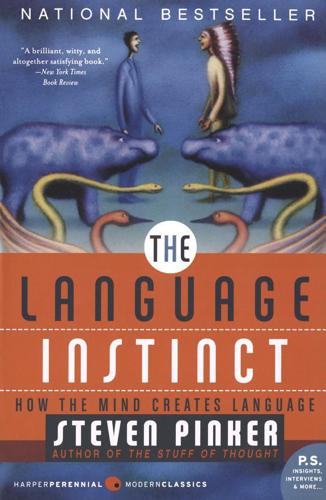
The Language Instinct: How the Mind Creates Language
by
Steven Pinker
Published 1 Jan 1994
Journal of Memory and Language. Trueswell, J. C., Tanenhaus, M., & Kello, C. In press. Verb-specific constraints in sentence processing: Separating effects of lexical preference from garden-paths. Journal of Experimental Psychology: Learning, Memory, and Cognition. Turing, A. M. 1950. Computing machinery and intelligence. Mind, 59, 433–460. Voegelin, C. F., & Voegelin, F. M. 1977. Classification and index of the world’s languages. New York: Elsevier. von der Malsburg, C., & Singer, W. 1988. Principles of cortical network organization. In P. Rakic & W. Singer (Eds.), Neurobiology of neocortex. New York: Wiley.

Architects of Intelligence
by
Martin Ford
Published 16 Nov 2018
Data) from Star Trek, C3PO from Star Wars and Agent Smith from The Matrix are all examples of AGI. Each of these fictional systems would be capable of passing the TURING TEST—in other words, these AI systems could carry out a conversation so that they would be indistinguishable from a human being. Alan Turing proposed this test in his 1950 paper, Computing Machinery and Intelligence, which arguably established artificial intelligence as a modern field of study. In other words, AGI has been the goal from the very beginning. It seems likely that if we someday succeed in achieving AGI, that smart system will soon become even smarter. In other words, we will see the advent of SUPERINTELLIGENCE, or a machine that exceeds the general intellectual capability of any human being.
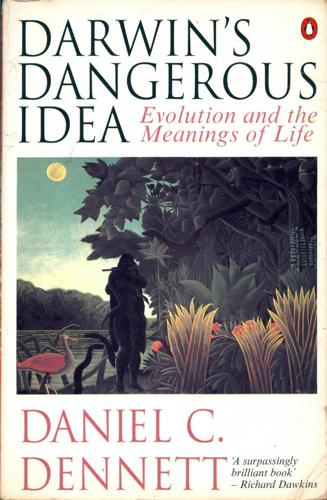
Darwin's Dangerous Idea: Evolution and the Meanings of Life
by
Daniel C. Dennett
Published 15 Jan 1995
12 Turing saw the continuity between such molecular-level problems and the problem of how a poet writes a sonnet, and from the earliest days of computers, the ambition of those who saw what Turing saw has {208} been to use his wonderful machine to explore the mysteries of thought.13 Turing published his prophetic essay, "Computing Machinery and Intelligence," in the philosophical journal Mind in 1950, surely one of the most frequently cited articles ever to appear in that journal. At the time he wrote it, there were no Artificial Intelligence programs — there were really only two operating computers in the world — but within a few years, there were enough machines up and running twenty-four hours a day so that Arthur Samuel, a research scientist at IBM, could fill the otherwise idle late-night time on one of the early giants with the activities of a program that is as good a candidate as any for the retrospective title of AI-Adam.

The Transhumanist Reader
by
Max More
and
Natasha Vita-More
Published 4 Mar 2013
http://www.slideshare.net/martine/on-the-destiny-of-the-species-what-would-darwin-think-150-years-after-the-origin-of-the-species (accessed September 15, 2011). Rothblatt, Martine (2011) From Transgender to Transhuman: A Manifesto on the Freedom of Form. USA: Amazon. Stryker, Susan (2008) Transgender History. Berkeley, CA: Seal Press. Turing, Alan (1950) “Computing Machinery and Intelligence.” Mind 236 (October). Vita-More, Natasha (2011) “Bringing Arts/Design Into the Discussion of Transhumanism.” In G. Hansell and W. Grassie, eds., Transhumanism and Its Critics. Philadelphia: Metanexus Institute. Webster’s (1981) Webster’s Third New International Dictionary. Chicago: Encyclopedia Britannica.

How the Mind Works
by
Steven Pinker
Published 1 Jan 1997
The evolution of reciprocal altruism. Quarterly Review of Biology, 46, 35–57. Trivers, R. 1981. Sociobiology and politics. In E. White (Ed.), Sociobiology and human politics. Lexington, Mass.: D. C. Heath. Trivers, R. 1985. Social evolution. Reading, Mass.: Benjamin/Cummings. Turing, A. M. 1950. Computing machinery and intelligence. Mind, 59, 433–460. Turke, P. W., & Betzig, L. L. 1985. Those who can do: Wealth, status, and reproductive success on Ifaluk. Ethology and Sociobiology, 6, 79–87. Turner, M. 1991. Reading minds: The study of English in the age of cognitive science. Princeton: Princeton University Press.

The Better Angels of Our Nature: Why Violence Has Declined
by
Steven Pinker
Published 24 Sep 2012
E. 1969. White and Negro listeners’ reactions to various American-English dialects. Social Forces, 47, 465–68. Turing, A. M. 1936. On computable numbers, with an application to the Entscheidungsproblem. Proceedings of the London Mathematical Society, 42, 230–65. Turing, A. M. 1950. Computing machinery and intelligence. Mind, 59, 433–60. Turkheimer, E. 2000. Three laws of behavior genetics and what they mean. Current Directions in Psychological Science, 5, 160–64. Turner, H. A. 1996. Hitler’s thirty days to power: January 1933. New York: Basic Books. Tversky, A., & Kahneman, D. 1973. Availability: A heuristic for judging frequency and probability.